Quick filters:
Nuclear defense cbrn Stock Photos and Images
 Fire team specialized in chemical, biological, radiological and nuclear defense (CBRN defense or CBRND) Stock Photohttps://www.alamy.com/image-license-details/?v=1https://www.alamy.com/fire-team-specialized-in-chemical-biological-radiological-and-nuclear-image64820698.html
Fire team specialized in chemical, biological, radiological and nuclear defense (CBRN defense or CBRND) Stock Photohttps://www.alamy.com/image-license-details/?v=1https://www.alamy.com/fire-team-specialized-in-chemical-biological-radiological-and-nuclear-image64820698.htmlRMDNCRCX–Fire team specialized in chemical, biological, radiological and nuclear defense (CBRN defense or CBRND)
 AirBoss gas mask system - USA Stock Photohttps://www.alamy.com/image-license-details/?v=1https://www.alamy.com/stock-photo-airboss-gas-mask-system-usa-88521523.html
AirBoss gas mask system - USA Stock Photohttps://www.alamy.com/image-license-details/?v=1https://www.alamy.com/stock-photo-airboss-gas-mask-system-usa-88521523.htmlRMF40E2Y–AirBoss gas mask system - USA
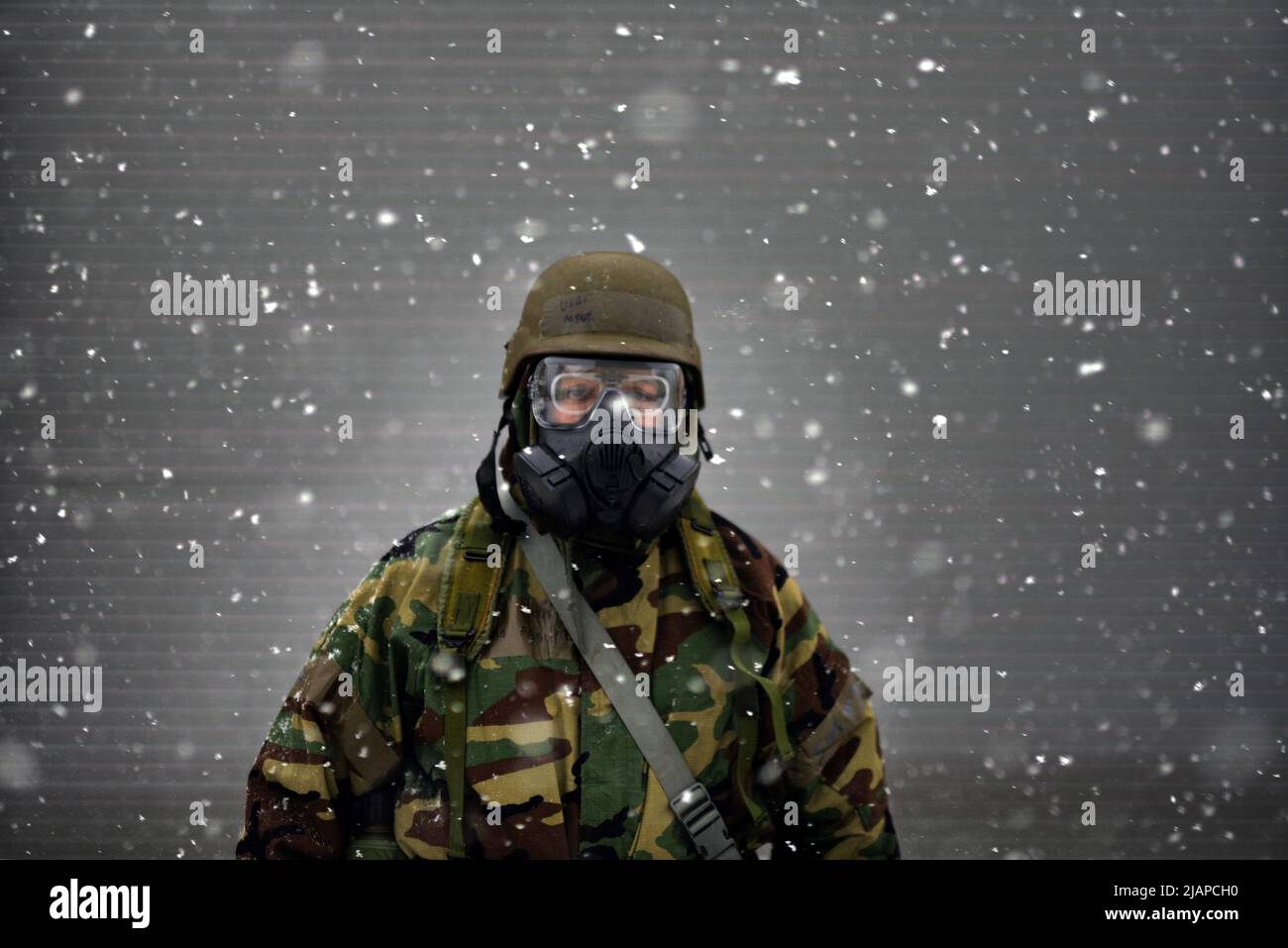 US Air Force CBRN training. Master Sgt. P. Aguilar pauses for a portrait in the snow during chemical, biological, radiological and nuclear defense training at Francis S. Gabreski Air National Guard Base, N.Y. CBRN defense training consists of CBRN passive protection, contamination avoidance and CBRN mitigation. Airmen conducting this training learn how to avoid offensive and improvised weapons, wear the protective clothing and masks and how to properly decontaminate after an incident. Optimised version of a U.S. Air National Guard photo, credit USANG / C.S. Muncy Stock Photohttps://www.alamy.com/image-license-details/?v=1https://www.alamy.com/us-air-force-cbrn-training-master-sgt-p-aguilar-pauses-for-a-portrait-in-the-snow-during-chemical-biological-radiological-and-nuclear-defense-training-at-francis-s-gabreski-air-national-guard-base-ny-cbrn-defense-training-consists-of-cbrn-passive-protection-contamination-avoidance-and-cbrn-mitigation-airmen-conducting-this-training-learn-how-to-avoid-offensive-and-improvised-weapons-wear-the-protective-clothing-and-masks-and-how-to-properly-decontaminate-after-an-incident-optimised-version-of-a-us-air-national-guard-photo-credit-usang-cs-muncy-image471319324.html
US Air Force CBRN training. Master Sgt. P. Aguilar pauses for a portrait in the snow during chemical, biological, radiological and nuclear defense training at Francis S. Gabreski Air National Guard Base, N.Y. CBRN defense training consists of CBRN passive protection, contamination avoidance and CBRN mitigation. Airmen conducting this training learn how to avoid offensive and improvised weapons, wear the protective clothing and masks and how to properly decontaminate after an incident. Optimised version of a U.S. Air National Guard photo, credit USANG / C.S. Muncy Stock Photohttps://www.alamy.com/image-license-details/?v=1https://www.alamy.com/us-air-force-cbrn-training-master-sgt-p-aguilar-pauses-for-a-portrait-in-the-snow-during-chemical-biological-radiological-and-nuclear-defense-training-at-francis-s-gabreski-air-national-guard-base-ny-cbrn-defense-training-consists-of-cbrn-passive-protection-contamination-avoidance-and-cbrn-mitigation-airmen-conducting-this-training-learn-how-to-avoid-offensive-and-improvised-weapons-wear-the-protective-clothing-and-masks-and-how-to-properly-decontaminate-after-an-incident-optimised-version-of-a-us-air-national-guard-photo-credit-usang-cs-muncy-image471319324.htmlRM2JAPCH0–US Air Force CBRN training. Master Sgt. P. Aguilar pauses for a portrait in the snow during chemical, biological, radiological and nuclear defense training at Francis S. Gabreski Air National Guard Base, N.Y. CBRN defense training consists of CBRN passive protection, contamination avoidance and CBRN mitigation. Airmen conducting this training learn how to avoid offensive and improvised weapons, wear the protective clothing and masks and how to properly decontaminate after an incident. Optimised version of a U.S. Air National Guard photo, credit USANG / C.S. Muncy
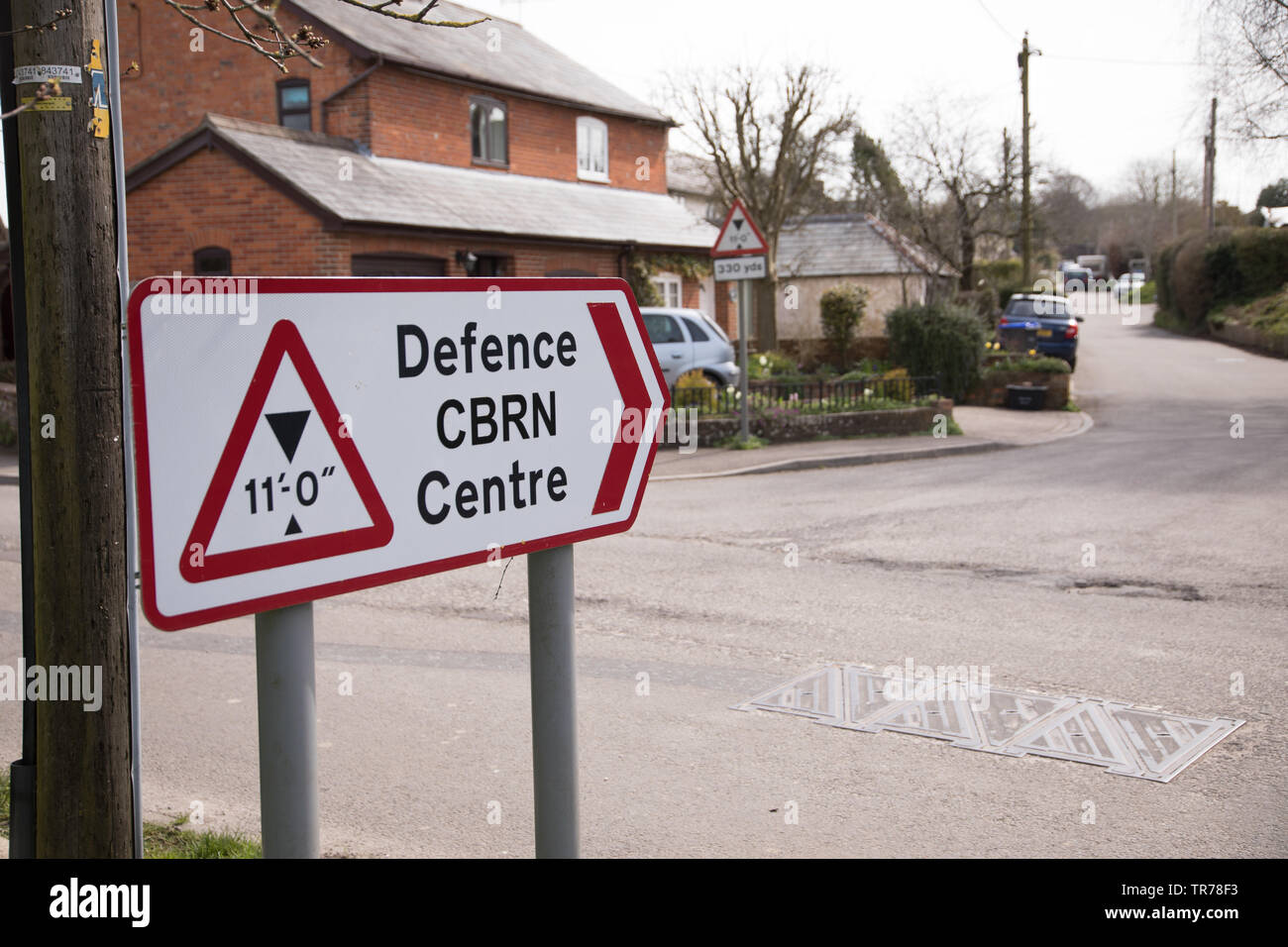 Defence CBRN Sign Stock Photohttps://www.alamy.com/image-license-details/?v=1https://www.alamy.com/defence-cbrn-sign-image255242599.html
Defence CBRN Sign Stock Photohttps://www.alamy.com/image-license-details/?v=1https://www.alamy.com/defence-cbrn-sign-image255242599.htmlRFTR78F3–Defence CBRN Sign
 Chemical, biological, radiological and nuclear (CBRN) defense Dacia Duster vehicles - December 1st Parade Stock Photohttps://www.alamy.com/image-license-details/?v=1https://www.alamy.com/chemical-biological-radiological-and-nuclear-cbrn-defense-dacia-duster-image63594154.html
Chemical, biological, radiological and nuclear (CBRN) defense Dacia Duster vehicles - December 1st Parade Stock Photohttps://www.alamy.com/image-license-details/?v=1https://www.alamy.com/chemical-biological-radiological-and-nuclear-cbrn-defense-dacia-duster-image63594154.htmlRMDKCXYP–Chemical, biological, radiological and nuclear (CBRN) defense Dacia Duster vehicles - December 1st Parade
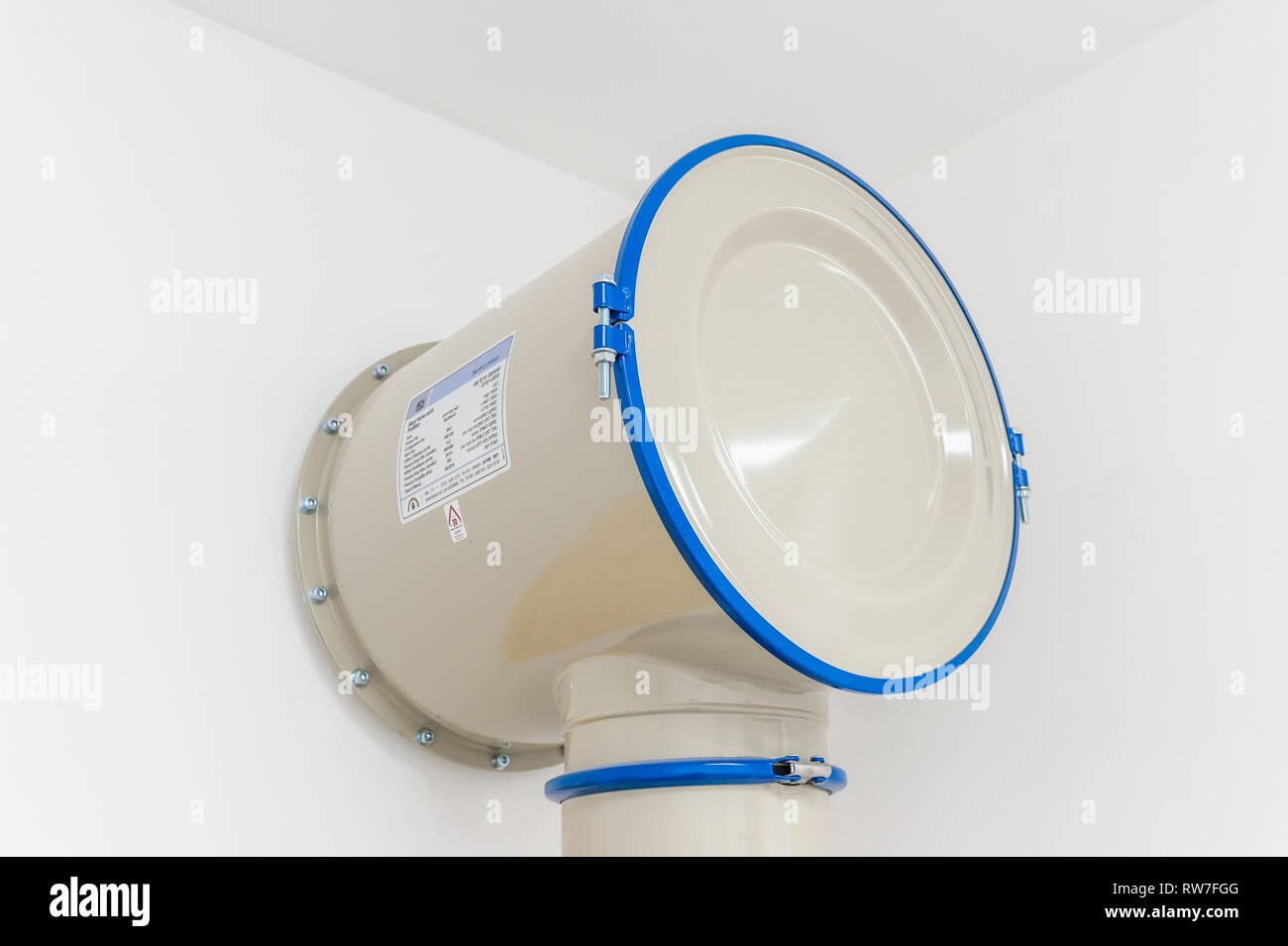 Collective CBRN filtration system attached to a valve in the wall of a shelter in Israel Stock Photohttps://www.alamy.com/image-license-details/?v=1https://www.alamy.com/collective-cbrn-filtration-system-attached-to-a-valve-in-the-wall-of-a-shelter-in-israel-image239267072.html
Collective CBRN filtration system attached to a valve in the wall of a shelter in Israel Stock Photohttps://www.alamy.com/image-license-details/?v=1https://www.alamy.com/collective-cbrn-filtration-system-attached-to-a-valve-in-the-wall-of-a-shelter-in-israel-image239267072.htmlRFRW7FGG–Collective CBRN filtration system attached to a valve in the wall of a shelter in Israel
 U.S. Marines with Marine Wing Headquarters Squadron 1 Chemical, Biological, Radiological, and Nuclear Defense (CBRN) land in Landing Zone Dodo to conduct a simulated CBRN scenario in a nearby urban training facility, May 8, 2019 at Snipe Mont, Okinawa, Japan. The casualty evacuation and CBRN training evolution helped enhance the unit's readiness and proficiency to respond to emergencies while deployed in a field environment. (U.S. Marine Corps Photo by Lance Cpl. Madeline Jones) Stock Photohttps://www.alamy.com/image-license-details/?v=1https://www.alamy.com/us-marines-with-marine-wing-headquarters-squadron-1-chemical-biological-radiological-and-nuclear-defense-cbrn-land-in-landing-zone-dodo-to-conduct-a-simulated-cbrn-scenario-in-a-nearby-urban-training-facility-may-8-2019-at-snipe-mont-okinawa-japan-the-casualty-evacuation-and-cbrn-training-evolution-helped-enhance-the-units-readiness-and-proficiency-to-respond-to-emergencies-while-deployed-in-a-field-environment-us-marine-corps-photo-by-lance-cpl-madeline-jones-image246020892.html
U.S. Marines with Marine Wing Headquarters Squadron 1 Chemical, Biological, Radiological, and Nuclear Defense (CBRN) land in Landing Zone Dodo to conduct a simulated CBRN scenario in a nearby urban training facility, May 8, 2019 at Snipe Mont, Okinawa, Japan. The casualty evacuation and CBRN training evolution helped enhance the unit's readiness and proficiency to respond to emergencies while deployed in a field environment. (U.S. Marine Corps Photo by Lance Cpl. Madeline Jones) Stock Photohttps://www.alamy.com/image-license-details/?v=1https://www.alamy.com/us-marines-with-marine-wing-headquarters-squadron-1-chemical-biological-radiological-and-nuclear-defense-cbrn-land-in-landing-zone-dodo-to-conduct-a-simulated-cbrn-scenario-in-a-nearby-urban-training-facility-may-8-2019-at-snipe-mont-okinawa-japan-the-casualty-evacuation-and-cbrn-training-evolution-helped-enhance-the-units-readiness-and-proficiency-to-respond-to-emergencies-while-deployed-in-a-field-environment-us-marine-corps-photo-by-lance-cpl-madeline-jones-image246020892.htmlRMT8764C–U.S. Marines with Marine Wing Headquarters Squadron 1 Chemical, Biological, Radiological, and Nuclear Defense (CBRN) land in Landing Zone Dodo to conduct a simulated CBRN scenario in a nearby urban training facility, May 8, 2019 at Snipe Mont, Okinawa, Japan. The casualty evacuation and CBRN training evolution helped enhance the unit's readiness and proficiency to respond to emergencies while deployed in a field environment. (U.S. Marine Corps Photo by Lance Cpl. Madeline Jones)
 Commanding General Brig. Gen. Brian Cavanaugh, of 1st Marine Aircraft Wing (MAW), reviews Chemical, Biological, Radiological, Nuclear Defense (CBRN) capabilities during a visit at MCAS Futenma, Okinawa, Japan, June 28, 2021. Cavanaugh visited CBRN to gain an improved understanding of their mission and how to effectively employ the Marines if required. Stock Photohttps://www.alamy.com/image-license-details/?v=1https://www.alamy.com/commanding-general-brig-gen-brian-cavanaugh-of-1st-marine-aircraft-wing-maw-reviews-chemical-biological-radiological-nuclear-defense-cbrn-capabilities-during-a-visit-at-mcas-futenma-okinawa-japan-june-28-2021-cavanaugh-visited-cbrn-to-gain-an-improved-understanding-of-their-mission-and-how-to-effectively-employ-the-marines-if-required-image442473424.html
Commanding General Brig. Gen. Brian Cavanaugh, of 1st Marine Aircraft Wing (MAW), reviews Chemical, Biological, Radiological, Nuclear Defense (CBRN) capabilities during a visit at MCAS Futenma, Okinawa, Japan, June 28, 2021. Cavanaugh visited CBRN to gain an improved understanding of their mission and how to effectively employ the Marines if required. Stock Photohttps://www.alamy.com/image-license-details/?v=1https://www.alamy.com/commanding-general-brig-gen-brian-cavanaugh-of-1st-marine-aircraft-wing-maw-reviews-chemical-biological-radiological-nuclear-defense-cbrn-capabilities-during-a-visit-at-mcas-futenma-okinawa-japan-june-28-2021-cavanaugh-visited-cbrn-to-gain-an-improved-understanding-of-their-mission-and-how-to-effectively-employ-the-marines-if-required-image442473424.htmlRM2GKTBA8–Commanding General Brig. Gen. Brian Cavanaugh, of 1st Marine Aircraft Wing (MAW), reviews Chemical, Biological, Radiological, Nuclear Defense (CBRN) capabilities during a visit at MCAS Futenma, Okinawa, Japan, June 28, 2021. Cavanaugh visited CBRN to gain an improved understanding of their mission and how to effectively employ the Marines if required.
 U.S. Marines with Marine Wing Support Squadron (MWSS) 172 decontaminate simulated ordnance at Marine Corps Air Station Futenma, Okinawa, Japan Feb. 24, 2022. Chemical, Biological, Radiological, and Nuclear Defense (CBRN) is responsible for conducting training and reconnaissance, chemical detection identification, biological agent collection and sampling, decontamination of personnel, equipment, and casualties and individual protective measures in first aid for unit personnel. Stock Photohttps://www.alamy.com/image-license-details/?v=1https://www.alamy.com/us-marines-with-marine-wing-support-squadron-mwss-172-decontaminate-simulated-ordnance-at-marine-corps-air-station-futenma-okinawa-japan-feb-24-2022-chemical-biological-radiological-and-nuclear-defense-cbrn-is-responsible-for-conducting-training-and-reconnaissance-chemical-detection-identification-biological-agent-collection-and-sampling-decontamination-of-personnel-equipment-and-casualties-and-individual-protective-measures-in-first-aid-for-unit-personnel-image502433182.html
U.S. Marines with Marine Wing Support Squadron (MWSS) 172 decontaminate simulated ordnance at Marine Corps Air Station Futenma, Okinawa, Japan Feb. 24, 2022. Chemical, Biological, Radiological, and Nuclear Defense (CBRN) is responsible for conducting training and reconnaissance, chemical detection identification, biological agent collection and sampling, decontamination of personnel, equipment, and casualties and individual protective measures in first aid for unit personnel. Stock Photohttps://www.alamy.com/image-license-details/?v=1https://www.alamy.com/us-marines-with-marine-wing-support-squadron-mwss-172-decontaminate-simulated-ordnance-at-marine-corps-air-station-futenma-okinawa-japan-feb-24-2022-chemical-biological-radiological-and-nuclear-defense-cbrn-is-responsible-for-conducting-training-and-reconnaissance-chemical-detection-identification-biological-agent-collection-and-sampling-decontamination-of-personnel-equipment-and-casualties-and-individual-protective-measures-in-first-aid-for-unit-personnel-image502433182.htmlRM2M5BPJ6–U.S. Marines with Marine Wing Support Squadron (MWSS) 172 decontaminate simulated ordnance at Marine Corps Air Station Futenma, Okinawa, Japan Feb. 24, 2022. Chemical, Biological, Radiological, and Nuclear Defense (CBRN) is responsible for conducting training and reconnaissance, chemical detection identification, biological agent collection and sampling, decontamination of personnel, equipment, and casualties and individual protective measures in first aid for unit personnel.
 Carolina, Puerto Rico. 4th Mar, 2023. A U.S. Air Force firefighter assigned to the Fire Protection Flight, 156th Civil Engineer Squadron decontaminates another firefighters protective gear during the Prime BEEF Day exercise at Muniz Air National Guard Base, Carolina, Puerto Rico, March 4, 2023. The 156th CES responded to a simulated chemical, biological, radiological and nuclear defense (CBRN) hazardous spill during the exercise which focused on testing operational readiness and response. Credit: U.S. National Guard/ZUMA Press Wire Service/ZUMAPRESS.com/Alamy Live News Stock Photohttps://www.alamy.com/image-license-details/?v=1https://www.alamy.com/carolina-puerto-rico-4th-mar-2023-a-us-air-force-firefighter-assigned-to-the-fire-protection-flight-156th-civil-engineer-squadron-decontaminates-another-firefighters-protective-gear-during-the-prime-beef-day-exercise-at-muniz-air-national-guard-base-carolina-puerto-rico-march-4-2023-the-156th-ces-responded-to-a-simulated-chemical-biological-radiological-and-nuclear-defense-cbrn-hazardous-spill-during-the-exercise-which-focused-on-testing-operational-readiness-and-response-credit-us-national-guardzuma-press-wire-servicezumapresscomalamy-live-news-image541968940.html
Carolina, Puerto Rico. 4th Mar, 2023. A U.S. Air Force firefighter assigned to the Fire Protection Flight, 156th Civil Engineer Squadron decontaminates another firefighters protective gear during the Prime BEEF Day exercise at Muniz Air National Guard Base, Carolina, Puerto Rico, March 4, 2023. The 156th CES responded to a simulated chemical, biological, radiological and nuclear defense (CBRN) hazardous spill during the exercise which focused on testing operational readiness and response. Credit: U.S. National Guard/ZUMA Press Wire Service/ZUMAPRESS.com/Alamy Live News Stock Photohttps://www.alamy.com/image-license-details/?v=1https://www.alamy.com/carolina-puerto-rico-4th-mar-2023-a-us-air-force-firefighter-assigned-to-the-fire-protection-flight-156th-civil-engineer-squadron-decontaminates-another-firefighters-protective-gear-during-the-prime-beef-day-exercise-at-muniz-air-national-guard-base-carolina-puerto-rico-march-4-2023-the-156th-ces-responded-to-a-simulated-chemical-biological-radiological-and-nuclear-defense-cbrn-hazardous-spill-during-the-exercise-which-focused-on-testing-operational-readiness-and-response-credit-us-national-guardzuma-press-wire-servicezumapresscomalamy-live-news-image541968940.htmlRM2PDMPWG–Carolina, Puerto Rico. 4th Mar, 2023. A U.S. Air Force firefighter assigned to the Fire Protection Flight, 156th Civil Engineer Squadron decontaminates another firefighters protective gear during the Prime BEEF Day exercise at Muniz Air National Guard Base, Carolina, Puerto Rico, March 4, 2023. The 156th CES responded to a simulated chemical, biological, radiological and nuclear defense (CBRN) hazardous spill during the exercise which focused on testing operational readiness and response. Credit: U.S. National Guard/ZUMA Press Wire Service/ZUMAPRESS.com/Alamy Live News
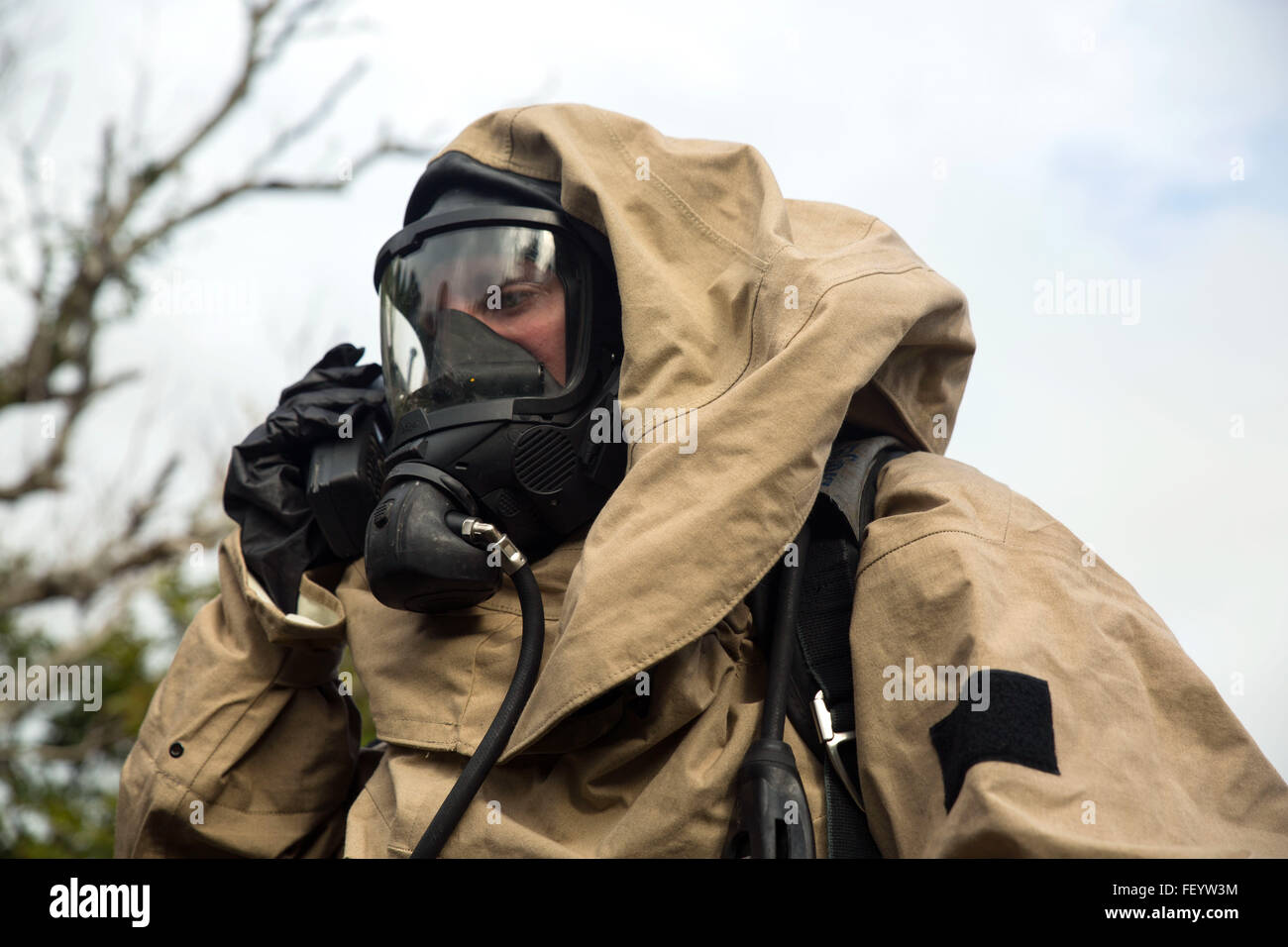 Lance Cpl. Ryan Yancey, from Emory, Texas, radios his team during a joint-training-exercise between III Marine Expeditionary Forces Chemical, Biological, Radiological, Nuclear units and Explosive Ordnance Disposal units at the Central Training Area, Camp Hansen, Okinawa, Japan, Jan. 29, 2016. The exercise enhances unit cohesion between the two units for further training, real-world instances and to keep the Asia-Pacific region safe from explosive ordnances and CBRN threats. Yancey is a CBRN defense specialist with 1st Marine Aircraft Wing, III MEF. Stock Photohttps://www.alamy.com/image-license-details/?v=1https://www.alamy.com/stock-photo-lance-cpl-ryan-yancey-from-emory-texas-radios-his-team-during-a-joint-95269432.html
Lance Cpl. Ryan Yancey, from Emory, Texas, radios his team during a joint-training-exercise between III Marine Expeditionary Forces Chemical, Biological, Radiological, Nuclear units and Explosive Ordnance Disposal units at the Central Training Area, Camp Hansen, Okinawa, Japan, Jan. 29, 2016. The exercise enhances unit cohesion between the two units for further training, real-world instances and to keep the Asia-Pacific region safe from explosive ordnances and CBRN threats. Yancey is a CBRN defense specialist with 1st Marine Aircraft Wing, III MEF. Stock Photohttps://www.alamy.com/image-license-details/?v=1https://www.alamy.com/stock-photo-lance-cpl-ryan-yancey-from-emory-texas-radios-his-team-during-a-joint-95269432.htmlRMFEYW3M–Lance Cpl. Ryan Yancey, from Emory, Texas, radios his team during a joint-training-exercise between III Marine Expeditionary Forces Chemical, Biological, Radiological, Nuclear units and Explosive Ordnance Disposal units at the Central Training Area, Camp Hansen, Okinawa, Japan, Jan. 29, 2016. The exercise enhances unit cohesion between the two units for further training, real-world instances and to keep the Asia-Pacific region safe from explosive ordnances and CBRN threats. Yancey is a CBRN defense specialist with 1st Marine Aircraft Wing, III MEF.
 the Federal Armed Forces, Munster, Germany. 04th Sep, 2013. The driveway to the institute of military science, in german WIS, for defense technology - CBRN defense of the Federal Armed Forces, Munster, Germany, 04 September 2013. According to own indications the WIS is the only larger institute in Germany which handels the defense of biological, chemical and nuclear weapons of mass destruction. Photo: PHILIPP SCHULZE/dpa/Alamy Live News Stock Photohttps://www.alamy.com/image-license-details/?v=1https://www.alamy.com/the-federal-armed-forces-munster-germany-04th-sep-2013-the-driveway-image60052582.html
the Federal Armed Forces, Munster, Germany. 04th Sep, 2013. The driveway to the institute of military science, in german WIS, for defense technology - CBRN defense of the Federal Armed Forces, Munster, Germany, 04 September 2013. According to own indications the WIS is the only larger institute in Germany which handels the defense of biological, chemical and nuclear weapons of mass destruction. Photo: PHILIPP SCHULZE/dpa/Alamy Live News Stock Photohttps://www.alamy.com/image-license-details/?v=1https://www.alamy.com/the-federal-armed-forces-munster-germany-04th-sep-2013-the-driveway-image60052582.htmlRMDDKHK2–the Federal Armed Forces, Munster, Germany. 04th Sep, 2013. The driveway to the institute of military science, in german WIS, for defense technology - CBRN defense of the Federal Armed Forces, Munster, Germany, 04 September 2013. According to own indications the WIS is the only larger institute in Germany which handels the defense of biological, chemical and nuclear weapons of mass destruction. Photo: PHILIPP SCHULZE/dpa/Alamy Live News
 JTF-CS performs quality assurance checks on deployable equipment 130312 Stock Photohttps://www.alamy.com/image-license-details/?v=1https://www.alamy.com/jtf-cs-performs-quality-assurance-checks-on-deployable-equipment-130312-image374217855.html
JTF-CS performs quality assurance checks on deployable equipment 130312 Stock Photohttps://www.alamy.com/image-license-details/?v=1https://www.alamy.com/jtf-cs-performs-quality-assurance-checks-on-deployable-equipment-130312-image374217855.htmlRM2CMR2KB–JTF-CS performs quality assurance checks on deployable equipment 130312
 Future Forces Forum, with international exhibition of defence and security technologies, expert panels on military and security affairs, started on October 19, 2022, in Prague, Czech Republic. On the photo is seen S-LOV CBRN (chemical, biological, radiological and nuclear reconnaissance system). (CTK Photo/Vit Simanek) Stock Photohttps://www.alamy.com/image-license-details/?v=1https://www.alamy.com/future-forces-forum-with-international-exhibition-of-defence-and-security-technologies-expert-panels-on-military-and-security-affairs-started-on-october-19-2022-in-prague-czech-republic-on-the-photo-is-seen-s-lov-cbrn-chemical-biological-radiological-and-nuclear-reconnaissance-system-ctk-photovit-simanek-image486742304.html
Future Forces Forum, with international exhibition of defence and security technologies, expert panels on military and security affairs, started on October 19, 2022, in Prague, Czech Republic. On the photo is seen S-LOV CBRN (chemical, biological, radiological and nuclear reconnaissance system). (CTK Photo/Vit Simanek) Stock Photohttps://www.alamy.com/image-license-details/?v=1https://www.alamy.com/future-forces-forum-with-international-exhibition-of-defence-and-security-technologies-expert-panels-on-military-and-security-affairs-started-on-october-19-2022-in-prague-czech-republic-on-the-photo-is-seen-s-lov-cbrn-chemical-biological-radiological-and-nuclear-reconnaissance-system-ctk-photovit-simanek-image486742304.htmlRM2K7W0NM–Future Forces Forum, with international exhibition of defence and security technologies, expert panels on military and security affairs, started on October 19, 2022, in Prague, Czech Republic. On the photo is seen S-LOV CBRN (chemical, biological, radiological and nuclear reconnaissance system). (CTK Photo/Vit Simanek)
 Fire team specialized in chemical, biological, radiological and nuclear defense (CBRN defense or CBRND) Stock Photohttps://www.alamy.com/image-license-details/?v=1https://www.alamy.com/fire-team-specialized-in-chemical-biological-radiological-and-nuclear-image64821162.html
Fire team specialized in chemical, biological, radiological and nuclear defense (CBRN defense or CBRND) Stock Photohttps://www.alamy.com/image-license-details/?v=1https://www.alamy.com/fire-team-specialized-in-chemical-biological-radiological-and-nuclear-image64821162.htmlRMDNCT1E–Fire team specialized in chemical, biological, radiological and nuclear defense (CBRN defense or CBRND)
 AirBoss gas mask system Stock Photohttps://www.alamy.com/image-license-details/?v=1https://www.alamy.com/stock-photo-airboss-gas-mask-system-88521498.html
AirBoss gas mask system Stock Photohttps://www.alamy.com/image-license-details/?v=1https://www.alamy.com/stock-photo-airboss-gas-mask-system-88521498.htmlRMF40E22–AirBoss gas mask system
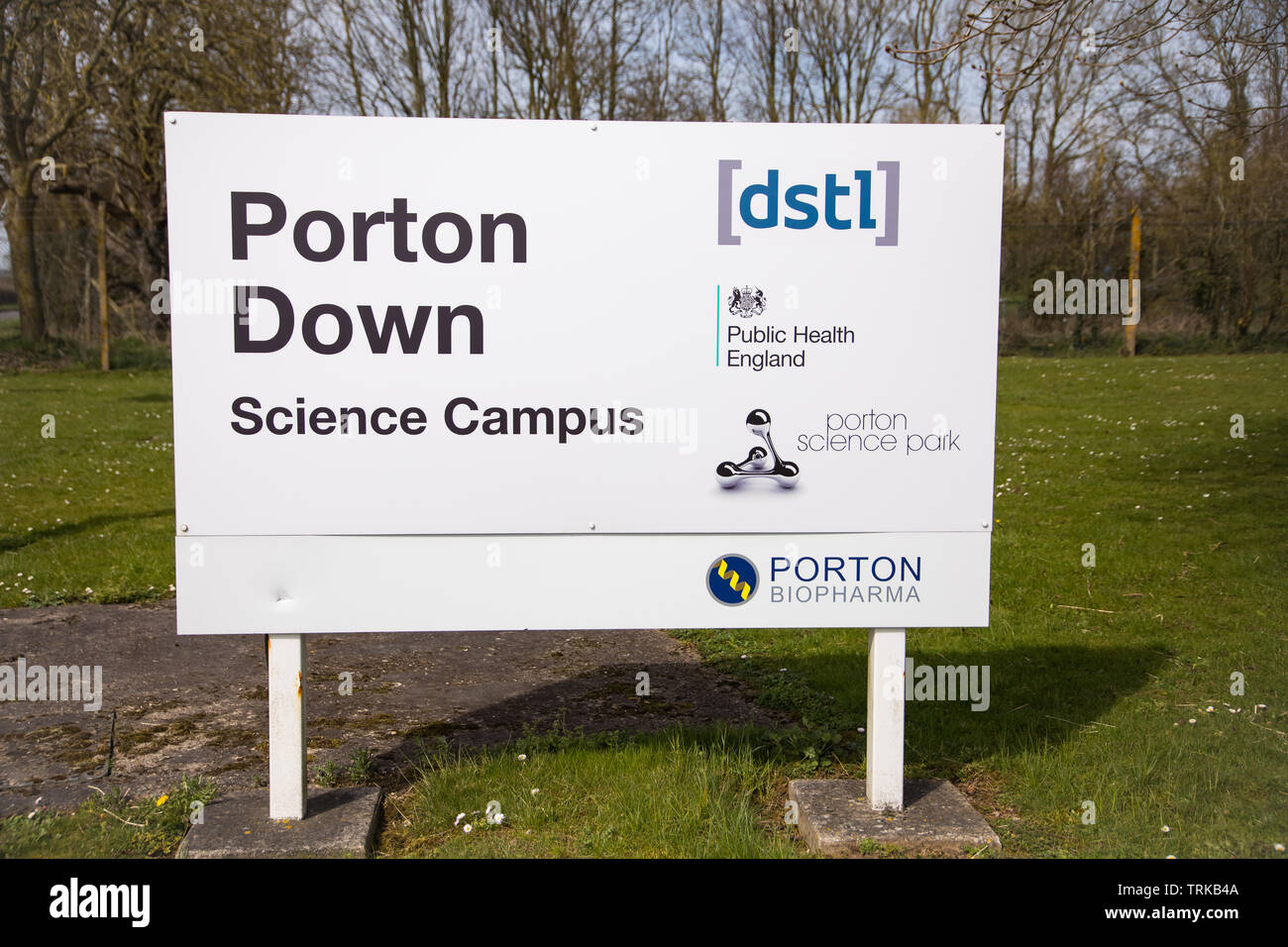 DSTL Porton Down sign Stock Photohttps://www.alamy.com/image-license-details/?v=1https://www.alamy.com/dstl-porton-down-sign-image255508074.html
DSTL Porton Down sign Stock Photohttps://www.alamy.com/image-license-details/?v=1https://www.alamy.com/dstl-porton-down-sign-image255508074.htmlRFTRKB4A–DSTL Porton Down sign
 Collective CBRN filtration system attached to a valve in the wall of a shelter in Israel Stock Photohttps://www.alamy.com/image-license-details/?v=1https://www.alamy.com/collective-cbrn-filtration-system-attached-to-a-valve-in-the-wall-of-a-shelter-in-israel-image242020289.html
Collective CBRN filtration system attached to a valve in the wall of a shelter in Israel Stock Photohttps://www.alamy.com/image-license-details/?v=1https://www.alamy.com/collective-cbrn-filtration-system-attached-to-a-valve-in-the-wall-of-a-shelter-in-israel-image242020289.htmlRFT1MY9N–Collective CBRN filtration system attached to a valve in the wall of a shelter in Israel
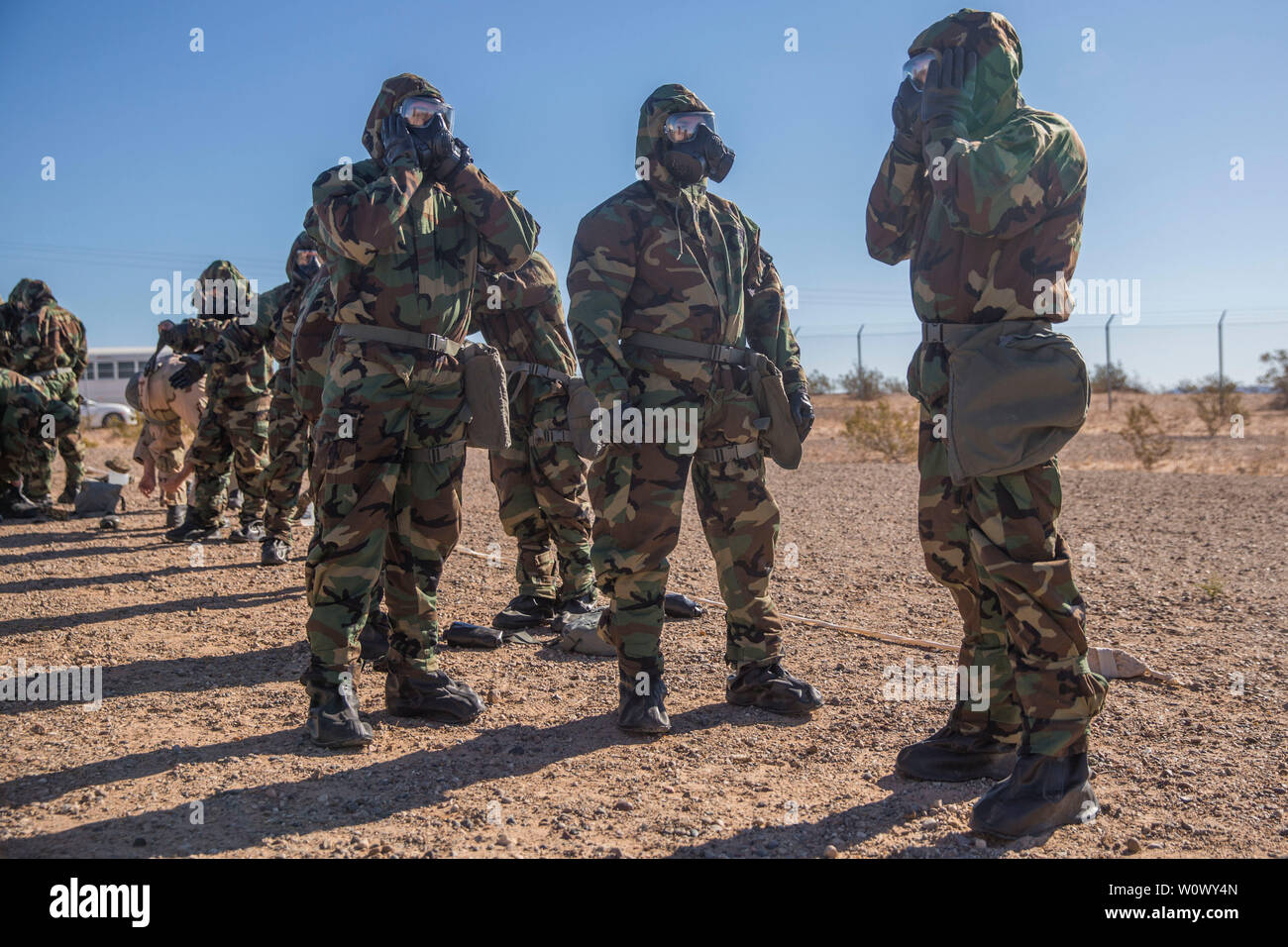 U.S. Marines stationed at Marine Corps Air Station (MCAS) Yuma conduct their Chemical, Biological, Radiological and Nuclear Defense (CBRN) training at the MCAS Yuma, Ariz. Gas Chamber, June 27, 2019. The gas chamber is a controlled environment in which a non-lethal gas is released, allowing Marines to test their issued gas masks and become familiar with the effects of gas. (U.S. Marine Corps photo by Cpl. Sabrina Candiaflores) Stock Photohttps://www.alamy.com/image-license-details/?v=1https://www.alamy.com/us-marines-stationed-at-marine-corps-air-station-mcas-yuma-conduct-their-chemical-biological-radiological-and-nuclear-defense-cbrn-training-at-the-mcas-yuma-ariz-gas-chamber-june-27-2019-the-gas-chamber-is-a-controlled-environment-in-which-a-non-lethal-gas-is-released-allowing-marines-to-test-their-issued-gas-masks-and-become-familiar-with-the-effects-of-gas-us-marine-corps-photo-by-cpl-sabrina-candiaflores-image258725621.html
U.S. Marines stationed at Marine Corps Air Station (MCAS) Yuma conduct their Chemical, Biological, Radiological and Nuclear Defense (CBRN) training at the MCAS Yuma, Ariz. Gas Chamber, June 27, 2019. The gas chamber is a controlled environment in which a non-lethal gas is released, allowing Marines to test their issued gas masks and become familiar with the effects of gas. (U.S. Marine Corps photo by Cpl. Sabrina Candiaflores) Stock Photohttps://www.alamy.com/image-license-details/?v=1https://www.alamy.com/us-marines-stationed-at-marine-corps-air-station-mcas-yuma-conduct-their-chemical-biological-radiological-and-nuclear-defense-cbrn-training-at-the-mcas-yuma-ariz-gas-chamber-june-27-2019-the-gas-chamber-is-a-controlled-environment-in-which-a-non-lethal-gas-is-released-allowing-marines-to-test-their-issued-gas-masks-and-become-familiar-with-the-effects-of-gas-us-marine-corps-photo-by-cpl-sabrina-candiaflores-image258725621.htmlRMW0WY4N–U.S. Marines stationed at Marine Corps Air Station (MCAS) Yuma conduct their Chemical, Biological, Radiological and Nuclear Defense (CBRN) training at the MCAS Yuma, Ariz. Gas Chamber, June 27, 2019. The gas chamber is a controlled environment in which a non-lethal gas is released, allowing Marines to test their issued gas masks and become familiar with the effects of gas. (U.S. Marine Corps photo by Cpl. Sabrina Candiaflores)
 Commanding General Brig. Gen. Brian Cavanaugh, of 1st Marine Aircraft Wing (MAW), reviews Chemical, Biological, Radiological, Nuclear Defense (CBRN) capabilities during a visit at MCAS Futenma, Okinawa, Japan, June 28, 2021. Cavanaugh visited CBRN to gain an improved understanding of their mission and how to effectively employ the Marines if required. Stock Photohttps://www.alamy.com/image-license-details/?v=1https://www.alamy.com/commanding-general-brig-gen-brian-cavanaugh-of-1st-marine-aircraft-wing-maw-reviews-chemical-biological-radiological-nuclear-defense-cbrn-capabilities-during-a-visit-at-mcas-futenma-okinawa-japan-june-28-2021-cavanaugh-visited-cbrn-to-gain-an-improved-understanding-of-their-mission-and-how-to-effectively-employ-the-marines-if-required-image442473448.html
Commanding General Brig. Gen. Brian Cavanaugh, of 1st Marine Aircraft Wing (MAW), reviews Chemical, Biological, Radiological, Nuclear Defense (CBRN) capabilities during a visit at MCAS Futenma, Okinawa, Japan, June 28, 2021. Cavanaugh visited CBRN to gain an improved understanding of their mission and how to effectively employ the Marines if required. Stock Photohttps://www.alamy.com/image-license-details/?v=1https://www.alamy.com/commanding-general-brig-gen-brian-cavanaugh-of-1st-marine-aircraft-wing-maw-reviews-chemical-biological-radiological-nuclear-defense-cbrn-capabilities-during-a-visit-at-mcas-futenma-okinawa-japan-june-28-2021-cavanaugh-visited-cbrn-to-gain-an-improved-understanding-of-their-mission-and-how-to-effectively-employ-the-marines-if-required-image442473448.htmlRM2GKTBB4–Commanding General Brig. Gen. Brian Cavanaugh, of 1st Marine Aircraft Wing (MAW), reviews Chemical, Biological, Radiological, Nuclear Defense (CBRN) capabilities during a visit at MCAS Futenma, Okinawa, Japan, June 28, 2021. Cavanaugh visited CBRN to gain an improved understanding of their mission and how to effectively employ the Marines if required.
 A U.S. Marine with Marine Wing Headquarter Squadron (MWHS-1) decontaminates the floor at Marine Corps Air Station Futenma, Okinawa, Japan, Feb. 24, 2022. Chemical, Biological, Radiological, and Nuclear Defense (CBRN) is responsible for conducting training and reconnaissance, chemical detection identification, biological agent collection and sampling, decontamination of personnel, equipment, and casualties and individual protective measures in first aid for unit personnel. Stock Photohttps://www.alamy.com/image-license-details/?v=1https://www.alamy.com/a-us-marine-with-marine-wing-headquarter-squadron-mwhs-1-decontaminates-the-floor-at-marine-corps-air-station-futenma-okinawa-japan-feb-24-2022-chemical-biological-radiological-and-nuclear-defense-cbrn-is-responsible-for-conducting-training-and-reconnaissance-chemical-detection-identification-biological-agent-collection-and-sampling-decontamination-of-personnel-equipment-and-casualties-and-individual-protective-measures-in-first-aid-for-unit-personnel-image502433184.html
A U.S. Marine with Marine Wing Headquarter Squadron (MWHS-1) decontaminates the floor at Marine Corps Air Station Futenma, Okinawa, Japan, Feb. 24, 2022. Chemical, Biological, Radiological, and Nuclear Defense (CBRN) is responsible for conducting training and reconnaissance, chemical detection identification, biological agent collection and sampling, decontamination of personnel, equipment, and casualties and individual protective measures in first aid for unit personnel. Stock Photohttps://www.alamy.com/image-license-details/?v=1https://www.alamy.com/a-us-marine-with-marine-wing-headquarter-squadron-mwhs-1-decontaminates-the-floor-at-marine-corps-air-station-futenma-okinawa-japan-feb-24-2022-chemical-biological-radiological-and-nuclear-defense-cbrn-is-responsible-for-conducting-training-and-reconnaissance-chemical-detection-identification-biological-agent-collection-and-sampling-decontamination-of-personnel-equipment-and-casualties-and-individual-protective-measures-in-first-aid-for-unit-personnel-image502433184.htmlRM2M5BPJ8–A U.S. Marine with Marine Wing Headquarter Squadron (MWHS-1) decontaminates the floor at Marine Corps Air Station Futenma, Okinawa, Japan, Feb. 24, 2022. Chemical, Biological, Radiological, and Nuclear Defense (CBRN) is responsible for conducting training and reconnaissance, chemical detection identification, biological agent collection and sampling, decontamination of personnel, equipment, and casualties and individual protective measures in first aid for unit personnel.
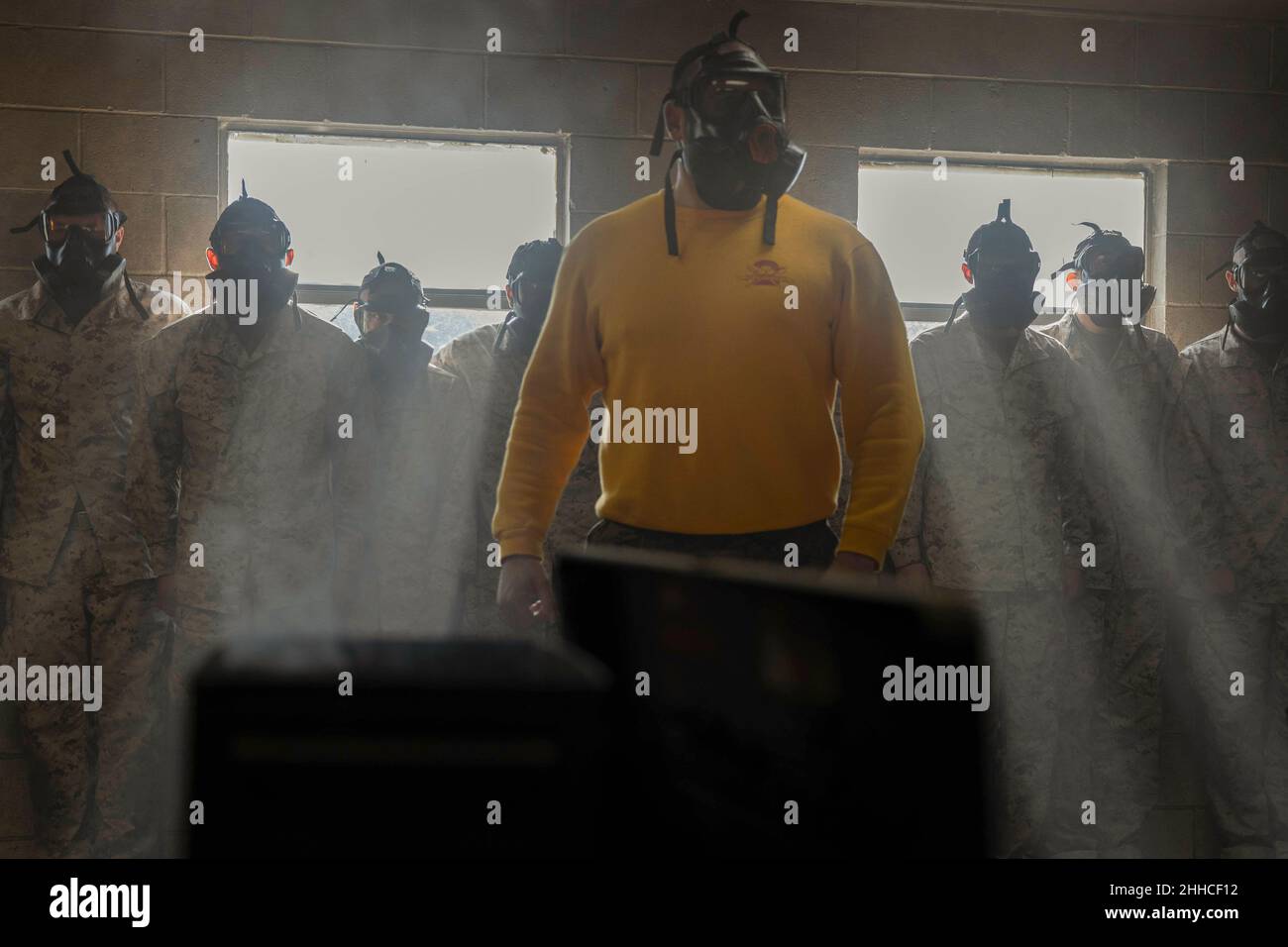 Parris Island, South Carolina, USA. 10th Jan, 2022. Recruits with Golf Company, 2nd Recruit Training Battalion, prepare and perform chemical, biological, radiological, and nuclear (CBRN) defense training at Marine Corps Recruit Depot Parris Island, S.C. Jan. 10, 2022. Training for CBRN defense is an event in which recruits experience the exposure of gases and learn how to properly use a gas mask. Credit: U.S. Marines/ZUMA Press Wire Service/ZUMAPRESS.com/Alamy Live News Stock Photohttps://www.alamy.com/image-license-details/?v=1https://www.alamy.com/parris-island-south-carolina-usa-10th-jan-2022-recruits-with-golf-company-2nd-recruit-training-battalion-prepare-and-perform-chemical-biological-radiological-and-nuclear-cbrn-defense-training-at-marine-corps-recruit-depot-parris-island-sc-jan-10-2022-training-for-cbrn-defense-is-an-event-in-which-recruits-experience-the-exposure-of-gases-and-learn-how-to-properly-use-a-gas-mask-credit-us-marineszuma-press-wire-servicezumapresscomalamy-live-news-image458193934.html
Parris Island, South Carolina, USA. 10th Jan, 2022. Recruits with Golf Company, 2nd Recruit Training Battalion, prepare and perform chemical, biological, radiological, and nuclear (CBRN) defense training at Marine Corps Recruit Depot Parris Island, S.C. Jan. 10, 2022. Training for CBRN defense is an event in which recruits experience the exposure of gases and learn how to properly use a gas mask. Credit: U.S. Marines/ZUMA Press Wire Service/ZUMAPRESS.com/Alamy Live News Stock Photohttps://www.alamy.com/image-license-details/?v=1https://www.alamy.com/parris-island-south-carolina-usa-10th-jan-2022-recruits-with-golf-company-2nd-recruit-training-battalion-prepare-and-perform-chemical-biological-radiological-and-nuclear-cbrn-defense-training-at-marine-corps-recruit-depot-parris-island-sc-jan-10-2022-training-for-cbrn-defense-is-an-event-in-which-recruits-experience-the-exposure-of-gases-and-learn-how-to-properly-use-a-gas-mask-credit-us-marineszuma-press-wire-servicezumapresscomalamy-live-news-image458193934.htmlRM2HHCF12–Parris Island, South Carolina, USA. 10th Jan, 2022. Recruits with Golf Company, 2nd Recruit Training Battalion, prepare and perform chemical, biological, radiological, and nuclear (CBRN) defense training at Marine Corps Recruit Depot Parris Island, S.C. Jan. 10, 2022. Training for CBRN defense is an event in which recruits experience the exposure of gases and learn how to properly use a gas mask. Credit: U.S. Marines/ZUMA Press Wire Service/ZUMAPRESS.com/Alamy Live News
 CAMP LEMONNIER, Djibouti (Sept. 21, 2013) Marine Corps Cpl. Cody Kisthart, the respiratory protection noncommissioned officer for the chemical, biological, radiological and nuclear (CBRN) defense team assigned to 26th Marine Expeditionary Unit (MEU), drag Stock Photohttps://www.alamy.com/image-license-details/?v=1https://www.alamy.com/camp-lemonnier-djibouti-sept-21-2013-marine-corps-cpl-cody-kisthart-image60831648.html
CAMP LEMONNIER, Djibouti (Sept. 21, 2013) Marine Corps Cpl. Cody Kisthart, the respiratory protection noncommissioned officer for the chemical, biological, radiological and nuclear (CBRN) defense team assigned to 26th Marine Expeditionary Unit (MEU), drag Stock Photohttps://www.alamy.com/image-license-details/?v=1https://www.alamy.com/camp-lemonnier-djibouti-sept-21-2013-marine-corps-cpl-cody-kisthart-image60831648.htmlRMDEY3AT–CAMP LEMONNIER, Djibouti (Sept. 21, 2013) Marine Corps Cpl. Cody Kisthart, the respiratory protection noncommissioned officer for the chemical, biological, radiological and nuclear (CBRN) defense team assigned to 26th Marine Expeditionary Unit (MEU), drag
 the Federal Armed Forces, Munster, Germany. 04th Sep, 2013. The driveway to the institute of military science, in german WIS, for defense technology - CBRN defense of the Federal Armed Forces, Munster, Germany, 04 September 2013. According to own indications the WIS is the only larger institute in Germany which handels the defense of biological, chemical and nuclear weapons of mass destruction. Photo: PHILIPP SCHULZE/dpa/Alamy Live News Stock Photohttps://www.alamy.com/image-license-details/?v=1https://www.alamy.com/the-federal-armed-forces-munster-germany-04th-sep-2013-the-driveway-image60052587.html
the Federal Armed Forces, Munster, Germany. 04th Sep, 2013. The driveway to the institute of military science, in german WIS, for defense technology - CBRN defense of the Federal Armed Forces, Munster, Germany, 04 September 2013. According to own indications the WIS is the only larger institute in Germany which handels the defense of biological, chemical and nuclear weapons of mass destruction. Photo: PHILIPP SCHULZE/dpa/Alamy Live News Stock Photohttps://www.alamy.com/image-license-details/?v=1https://www.alamy.com/the-federal-armed-forces-munster-germany-04th-sep-2013-the-driveway-image60052587.htmlRMDDKHK7–the Federal Armed Forces, Munster, Germany. 04th Sep, 2013. The driveway to the institute of military science, in german WIS, for defense technology - CBRN defense of the Federal Armed Forces, Munster, Germany, 04 September 2013. According to own indications the WIS is the only larger institute in Germany which handels the defense of biological, chemical and nuclear weapons of mass destruction. Photo: PHILIPP SCHULZE/dpa/Alamy Live News
 Lance Cpl. Julius T. Donath a chemical, biological, radiological, and nuclear defense (CBRN) specialist with the 13th Marine Expeditionary Unit, samples a mustard agent from a CBRN site during Tactical Site Exploitation (TSE) training, Feb. 6, 2018, Camp Pendleton, California. The TSE training was conducted to increase the Marines' skills in a CBRN threat environment to prepare them for future deployments. (U.S. Marine Corps Stock Photohttps://www.alamy.com/image-license-details/?v=1https://www.alamy.com/stock-photo-lance-cpl-julius-t-donath-a-chemical-biological-radiological-and-nuclear-175859424.html
Lance Cpl. Julius T. Donath a chemical, biological, radiological, and nuclear defense (CBRN) specialist with the 13th Marine Expeditionary Unit, samples a mustard agent from a CBRN site during Tactical Site Exploitation (TSE) training, Feb. 6, 2018, Camp Pendleton, California. The TSE training was conducted to increase the Marines' skills in a CBRN threat environment to prepare them for future deployments. (U.S. Marine Corps Stock Photohttps://www.alamy.com/image-license-details/?v=1https://www.alamy.com/stock-photo-lance-cpl-julius-t-donath-a-chemical-biological-radiological-and-nuclear-175859424.htmlRMM632DM–Lance Cpl. Julius T. Donath a chemical, biological, radiological, and nuclear defense (CBRN) specialist with the 13th Marine Expeditionary Unit, samples a mustard agent from a CBRN site during Tactical Site Exploitation (TSE) training, Feb. 6, 2018, Camp Pendleton, California. The TSE training was conducted to increase the Marines' skills in a CBRN threat environment to prepare them for future deployments. (U.S. Marine Corps
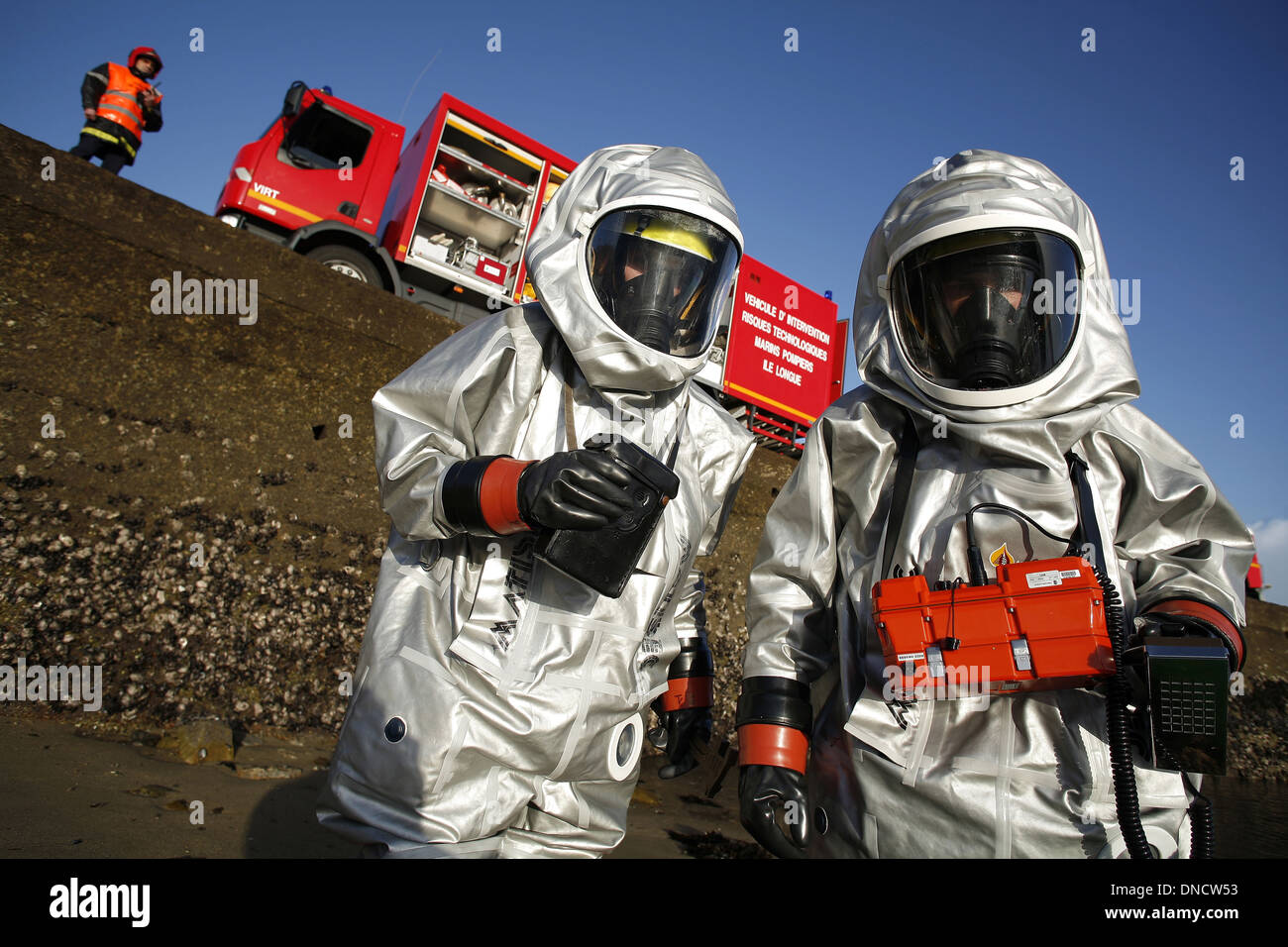 Fire team specialized in chemical, biological, radiological and nuclear defense (CBRN defense or CBRND) Stock Photohttps://www.alamy.com/image-license-details/?v=1https://www.alamy.com/fire-team-specialized-in-chemical-biological-radiological-and-nuclear-image64822047.html
Fire team specialized in chemical, biological, radiological and nuclear defense (CBRN defense or CBRND) Stock Photohttps://www.alamy.com/image-license-details/?v=1https://www.alamy.com/fire-team-specialized-in-chemical-biological-radiological-and-nuclear-image64822047.htmlRMDNCW53–Fire team specialized in chemical, biological, radiological and nuclear defense (CBRN defense or CBRND)
 AirBoss gas mask system - USA Stock Photohttps://www.alamy.com/image-license-details/?v=1https://www.alamy.com/stock-photo-airboss-gas-mask-system-usa-88521503.html
AirBoss gas mask system - USA Stock Photohttps://www.alamy.com/image-license-details/?v=1https://www.alamy.com/stock-photo-airboss-gas-mask-system-usa-88521503.htmlRMF40E27–AirBoss gas mask system - USA
 Salisbury Cordoned Off with a police road closed sign and tape. Stock Photohttps://www.alamy.com/image-license-details/?v=1https://www.alamy.com/salisbury-cordoned-off-with-a-police-road-closed-sign-and-tape-image255242571.html
Salisbury Cordoned Off with a police road closed sign and tape. Stock Photohttps://www.alamy.com/image-license-details/?v=1https://www.alamy.com/salisbury-cordoned-off-with-a-police-road-closed-sign-and-tape-image255242571.htmlRFTR78E3–Salisbury Cordoned Off with a police road closed sign and tape.
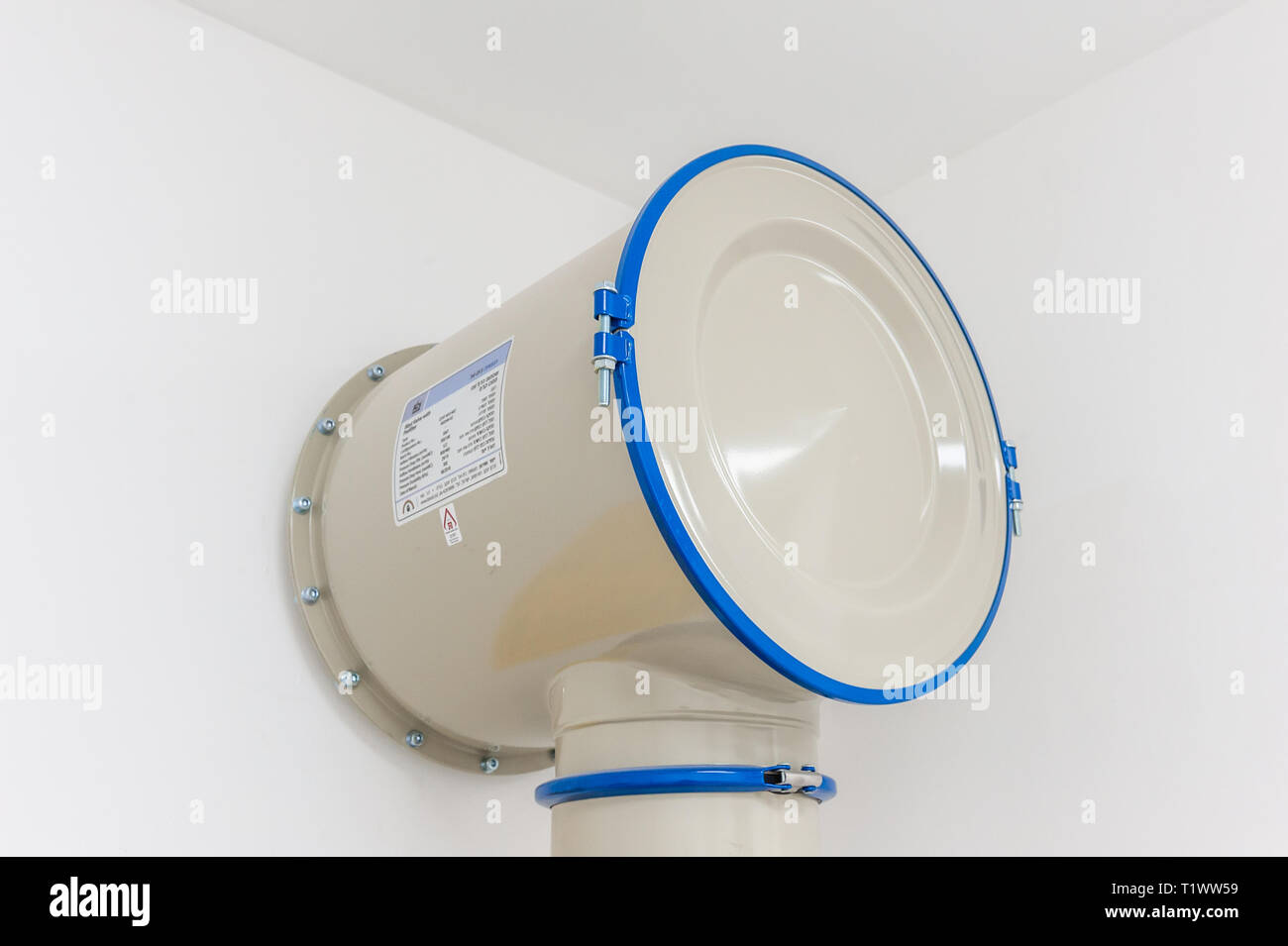 Collective CBRN filtration system attached to a valve in the wall of a shelter in Israel Stock Photohttps://www.alamy.com/image-license-details/?v=1https://www.alamy.com/collective-cbrn-filtration-system-attached-to-a-valve-in-the-wall-of-a-shelter-in-israel-image242128357.html
Collective CBRN filtration system attached to a valve in the wall of a shelter in Israel Stock Photohttps://www.alamy.com/image-license-details/?v=1https://www.alamy.com/collective-cbrn-filtration-system-attached-to-a-valve-in-the-wall-of-a-shelter-in-israel-image242128357.htmlRFT1WW59–Collective CBRN filtration system attached to a valve in the wall of a shelter in Israel
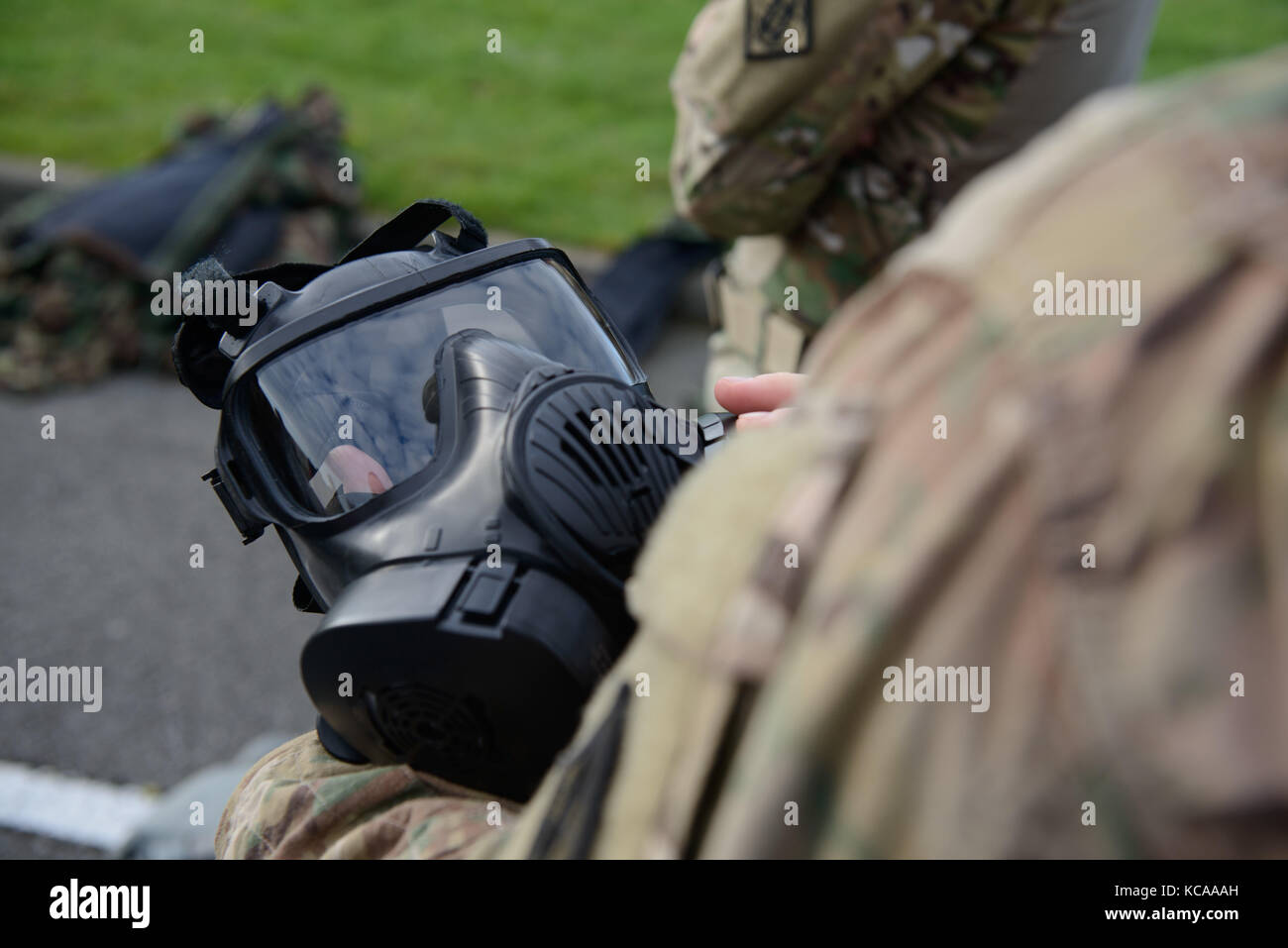 M50 joint service general purpose mask Stock Photohttps://www.alamy.com/image-license-details/?v=1https://www.alamy.com/stock-image-m50-joint-service-general-purpose-mask-162496841.html
M50 joint service general purpose mask Stock Photohttps://www.alamy.com/image-license-details/?v=1https://www.alamy.com/stock-image-m50-joint-service-general-purpose-mask-162496841.htmlRFKCAAAH–M50 joint service general purpose mask
 Commanding General Brig. Gen. Brian Cavanaugh, of 1st Marine Aircraft Wing (MAW), reviews Chemical, Biological, Radiological, Nuclear Defense (CBRN) capabilities during a visit at MCAS Futenma, Okinawa, Japan, June 28, 2021. Cavanaugh visited CBRN to gain an improved understanding of their mission and how to effectively employ the Marines if required. Stock Photohttps://www.alamy.com/image-license-details/?v=1https://www.alamy.com/commanding-general-brig-gen-brian-cavanaugh-of-1st-marine-aircraft-wing-maw-reviews-chemical-biological-radiological-nuclear-defense-cbrn-capabilities-during-a-visit-at-mcas-futenma-okinawa-japan-june-28-2021-cavanaugh-visited-cbrn-to-gain-an-improved-understanding-of-their-mission-and-how-to-effectively-employ-the-marines-if-required-image442473490.html
Commanding General Brig. Gen. Brian Cavanaugh, of 1st Marine Aircraft Wing (MAW), reviews Chemical, Biological, Radiological, Nuclear Defense (CBRN) capabilities during a visit at MCAS Futenma, Okinawa, Japan, June 28, 2021. Cavanaugh visited CBRN to gain an improved understanding of their mission and how to effectively employ the Marines if required. Stock Photohttps://www.alamy.com/image-license-details/?v=1https://www.alamy.com/commanding-general-brig-gen-brian-cavanaugh-of-1st-marine-aircraft-wing-maw-reviews-chemical-biological-radiological-nuclear-defense-cbrn-capabilities-during-a-visit-at-mcas-futenma-okinawa-japan-june-28-2021-cavanaugh-visited-cbrn-to-gain-an-improved-understanding-of-their-mission-and-how-to-effectively-employ-the-marines-if-required-image442473490.htmlRM2GKTBCJ–Commanding General Brig. Gen. Brian Cavanaugh, of 1st Marine Aircraft Wing (MAW), reviews Chemical, Biological, Radiological, Nuclear Defense (CBRN) capabilities during a visit at MCAS Futenma, Okinawa, Japan, June 28, 2021. Cavanaugh visited CBRN to gain an improved understanding of their mission and how to effectively employ the Marines if required.
 U.S. Marine Corps Staff Sgt. Demeter Duey, an explosive and ordnance disposal technician with Marine Wing Support Squadron (MWSS) 172, gets decontaminated at Marine Corps Air Station Futenma, Okinawa, Japan, Feb. 24, 2022. Chemical, Biological, Radiological, and Nuclear Defense (CBRN) is responsible for conducting training and reconnaissance, chemical detection identification, biological agent collection and sampling, decontamination of personnel, equipment, and casualties and individual protective measures in first aid for unit personnel. Stock Photohttps://www.alamy.com/image-license-details/?v=1https://www.alamy.com/us-marine-corps-staff-sgt-demeter-duey-an-explosive-and-ordnance-disposal-technician-with-marine-wing-support-squadron-mwss-172-gets-decontaminated-at-marine-corps-air-station-futenma-okinawa-japan-feb-24-2022-chemical-biological-radiological-and-nuclear-defense-cbrn-is-responsible-for-conducting-training-and-reconnaissance-chemical-detection-identification-biological-agent-collection-and-sampling-decontamination-of-personnel-equipment-and-casualties-and-individual-protective-measures-in-first-aid-for-unit-personnel-image502433181.html
U.S. Marine Corps Staff Sgt. Demeter Duey, an explosive and ordnance disposal technician with Marine Wing Support Squadron (MWSS) 172, gets decontaminated at Marine Corps Air Station Futenma, Okinawa, Japan, Feb. 24, 2022. Chemical, Biological, Radiological, and Nuclear Defense (CBRN) is responsible for conducting training and reconnaissance, chemical detection identification, biological agent collection and sampling, decontamination of personnel, equipment, and casualties and individual protective measures in first aid for unit personnel. Stock Photohttps://www.alamy.com/image-license-details/?v=1https://www.alamy.com/us-marine-corps-staff-sgt-demeter-duey-an-explosive-and-ordnance-disposal-technician-with-marine-wing-support-squadron-mwss-172-gets-decontaminated-at-marine-corps-air-station-futenma-okinawa-japan-feb-24-2022-chemical-biological-radiological-and-nuclear-defense-cbrn-is-responsible-for-conducting-training-and-reconnaissance-chemical-detection-identification-biological-agent-collection-and-sampling-decontamination-of-personnel-equipment-and-casualties-and-individual-protective-measures-in-first-aid-for-unit-personnel-image502433181.htmlRM2M5BPJ5–U.S. Marine Corps Staff Sgt. Demeter Duey, an explosive and ordnance disposal technician with Marine Wing Support Squadron (MWSS) 172, gets decontaminated at Marine Corps Air Station Futenma, Okinawa, Japan, Feb. 24, 2022. Chemical, Biological, Radiological, and Nuclear Defense (CBRN) is responsible for conducting training and reconnaissance, chemical detection identification, biological agent collection and sampling, decontamination of personnel, equipment, and casualties and individual protective measures in first aid for unit personnel.
 Apr 27, 2022 - USA - Soldiers from the Alabama National Guard's 31st CBRN Brigade and Romania's 72nd NBC Defense Battalion join forces to crosstrain on tactics, techniques, procedures, and equipment at Camp Shelby, Mississippi, April 24-30, 2022. The troops integrated into combined teams for exercises involving hazardous material reconnaissance, analysis and decontamination; Nuclear, Biological, Chemical Reconnaissance Vehicle (NBCRV) operations; site security; medevac; M4 carbine marksmanship; machine gunnery and more. The force-to-force engagement was the second part of a two-part event, wit Stock Photohttps://www.alamy.com/image-license-details/?v=1https://www.alamy.com/apr-27-2022-usa-soldiers-from-the-alabama-national-guards-31st-cbrn-brigade-and-romanias-72nd-nbc-defense-battalion-join-forces-to-crosstrain-on-tactics-techniques-procedures-and-equipment-at-camp-shelby-mississippi-april-24-30-2022-the-troops-integrated-into-combined-teams-for-exercises-involving-hazardous-material-reconnaissance-analysis-and-decontamination-nuclear-biological-chemical-reconnaissance-vehicle-nbcrv-operations-site-security-medevac-m4-carbine-marksmanship-machine-gunnery-and-more-the-force-to-force-engagement-was-the-second-part-of-a-two-part-event-wit-image470867543.html
Apr 27, 2022 - USA - Soldiers from the Alabama National Guard's 31st CBRN Brigade and Romania's 72nd NBC Defense Battalion join forces to crosstrain on tactics, techniques, procedures, and equipment at Camp Shelby, Mississippi, April 24-30, 2022. The troops integrated into combined teams for exercises involving hazardous material reconnaissance, analysis and decontamination; Nuclear, Biological, Chemical Reconnaissance Vehicle (NBCRV) operations; site security; medevac; M4 carbine marksmanship; machine gunnery and more. The force-to-force engagement was the second part of a two-part event, wit Stock Photohttps://www.alamy.com/image-license-details/?v=1https://www.alamy.com/apr-27-2022-usa-soldiers-from-the-alabama-national-guards-31st-cbrn-brigade-and-romanias-72nd-nbc-defense-battalion-join-forces-to-crosstrain-on-tactics-techniques-procedures-and-equipment-at-camp-shelby-mississippi-april-24-30-2022-the-troops-integrated-into-combined-teams-for-exercises-involving-hazardous-material-reconnaissance-analysis-and-decontamination-nuclear-biological-chemical-reconnaissance-vehicle-nbcrv-operations-site-security-medevac-m4-carbine-marksmanship-machine-gunnery-and-more-the-force-to-force-engagement-was-the-second-part-of-a-two-part-event-wit-image470867543.htmlRM2JA1T9Y–Apr 27, 2022 - USA - Soldiers from the Alabama National Guard's 31st CBRN Brigade and Romania's 72nd NBC Defense Battalion join forces to crosstrain on tactics, techniques, procedures, and equipment at Camp Shelby, Mississippi, April 24-30, 2022. The troops integrated into combined teams for exercises involving hazardous material reconnaissance, analysis and decontamination; Nuclear, Biological, Chemical Reconnaissance Vehicle (NBCRV) operations; site security; medevac; M4 carbine marksmanship; machine gunnery and more. The force-to-force engagement was the second part of a two-part event, wit
 CAMP LEMONNIER, Djibouti (Sept. 21, 2013) Marine Corps Cpl. Cody Kisthart, the respiratory protection noncommissioned officer for the chemical, biological, radiological and nuclear (CBRN) defense team assigned to 26th Marine Expeditionary Unit (MEU), drag Stock Photohttps://www.alamy.com/image-license-details/?v=1https://www.alamy.com/camp-lemonnier-djibouti-sept-21-2013-marine-corps-cpl-cody-kisthart-image60831819.html
CAMP LEMONNIER, Djibouti (Sept. 21, 2013) Marine Corps Cpl. Cody Kisthart, the respiratory protection noncommissioned officer for the chemical, biological, radiological and nuclear (CBRN) defense team assigned to 26th Marine Expeditionary Unit (MEU), drag Stock Photohttps://www.alamy.com/image-license-details/?v=1https://www.alamy.com/camp-lemonnier-djibouti-sept-21-2013-marine-corps-cpl-cody-kisthart-image60831819.htmlRMDEY3GY–CAMP LEMONNIER, Djibouti (Sept. 21, 2013) Marine Corps Cpl. Cody Kisthart, the respiratory protection noncommissioned officer for the chemical, biological, radiological and nuclear (CBRN) defense team assigned to 26th Marine Expeditionary Unit (MEU), drag
 the Federal Armed Forces, Munster, Germany. 04th Sep, 2013. The driveway to the institute of military science, in german WIS, for defense technology - CBRN defense of the Federal Armed Forces, Munster, Germany, 04 September 2013. According to own indications the WIS is the only larger institute in Germany which handels the defense of biological, chemical and nuclear weapons of mass destruction. Photo: PHILIPP SCHULZE/dpa/Alamy Live News Stock Photohttps://www.alamy.com/image-license-details/?v=1https://www.alamy.com/the-federal-armed-forces-munster-germany-04th-sep-2013-the-driveway-image60052589.html
the Federal Armed Forces, Munster, Germany. 04th Sep, 2013. The driveway to the institute of military science, in german WIS, for defense technology - CBRN defense of the Federal Armed Forces, Munster, Germany, 04 September 2013. According to own indications the WIS is the only larger institute in Germany which handels the defense of biological, chemical and nuclear weapons of mass destruction. Photo: PHILIPP SCHULZE/dpa/Alamy Live News Stock Photohttps://www.alamy.com/image-license-details/?v=1https://www.alamy.com/the-federal-armed-forces-munster-germany-04th-sep-2013-the-driveway-image60052589.htmlRMDDKHK9–the Federal Armed Forces, Munster, Germany. 04th Sep, 2013. The driveway to the institute of military science, in german WIS, for defense technology - CBRN defense of the Federal Armed Forces, Munster, Germany, 04 September 2013. According to own indications the WIS is the only larger institute in Germany which handels the defense of biological, chemical and nuclear weapons of mass destruction. Photo: PHILIPP SCHULZE/dpa/Alamy Live News
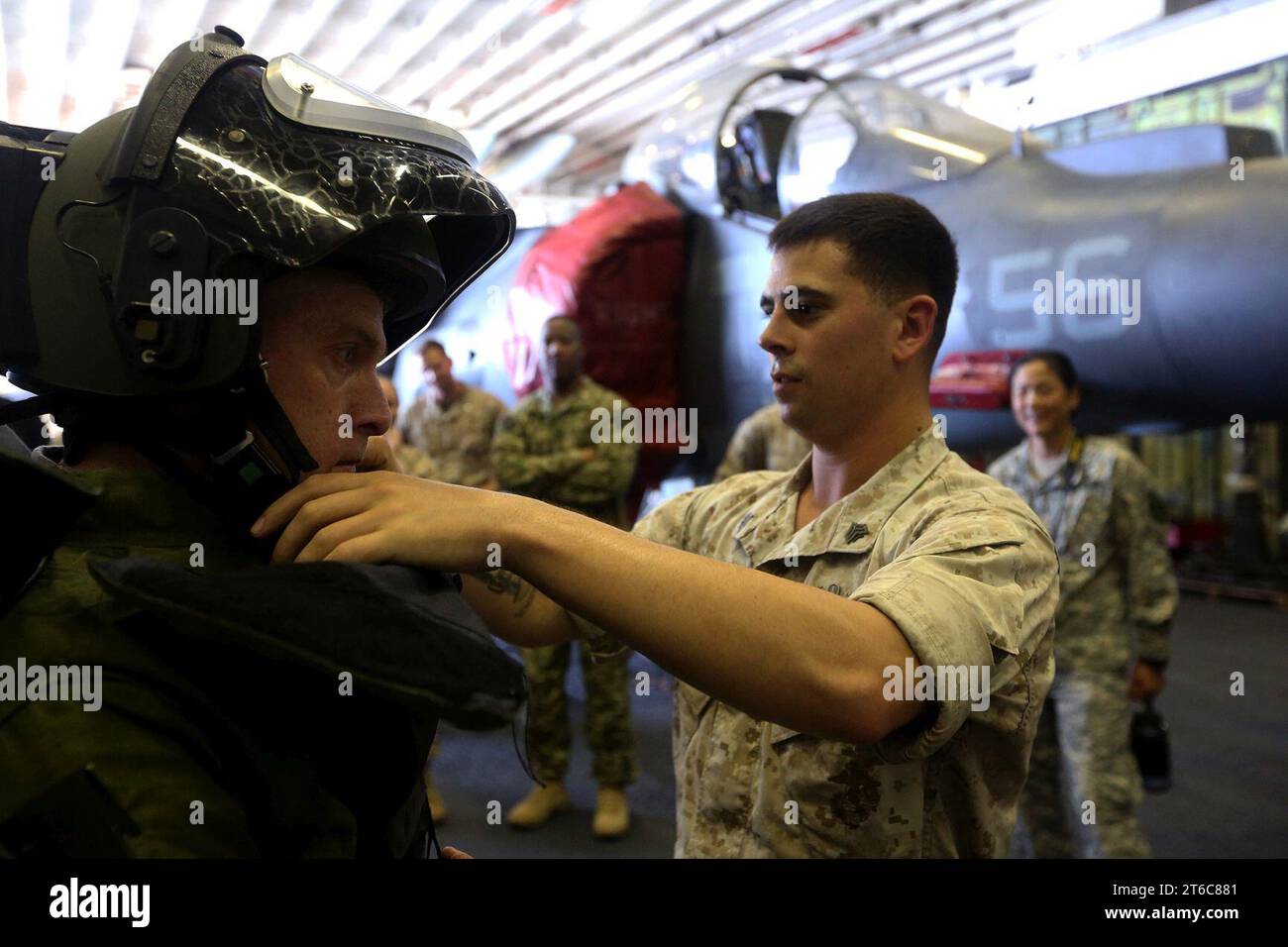 USS BATAAN (LHD 5) 140501 Stock Photohttps://www.alamy.com/image-license-details/?v=1https://www.alamy.com/uss-bataan-lhd-5-140501-image571900001.html
USS BATAAN (LHD 5) 140501 Stock Photohttps://www.alamy.com/image-license-details/?v=1https://www.alamy.com/uss-bataan-lhd-5-140501-image571900001.htmlRM2T6C881–USS BATAAN (LHD 5) 140501
 Fire team specialized in chemical, biological, radiological and nuclear defense (CBRN defense or CBRND) Stock Photohttps://www.alamy.com/image-license-details/?v=1https://www.alamy.com/fire-team-specialized-in-chemical-biological-radiological-and-nuclear-image64822681.html
Fire team specialized in chemical, biological, radiological and nuclear defense (CBRN defense or CBRND) Stock Photohttps://www.alamy.com/image-license-details/?v=1https://www.alamy.com/fire-team-specialized-in-chemical-biological-radiological-and-nuclear-image64822681.htmlRMDNCWYN–Fire team specialized in chemical, biological, radiological and nuclear defense (CBRN defense or CBRND)
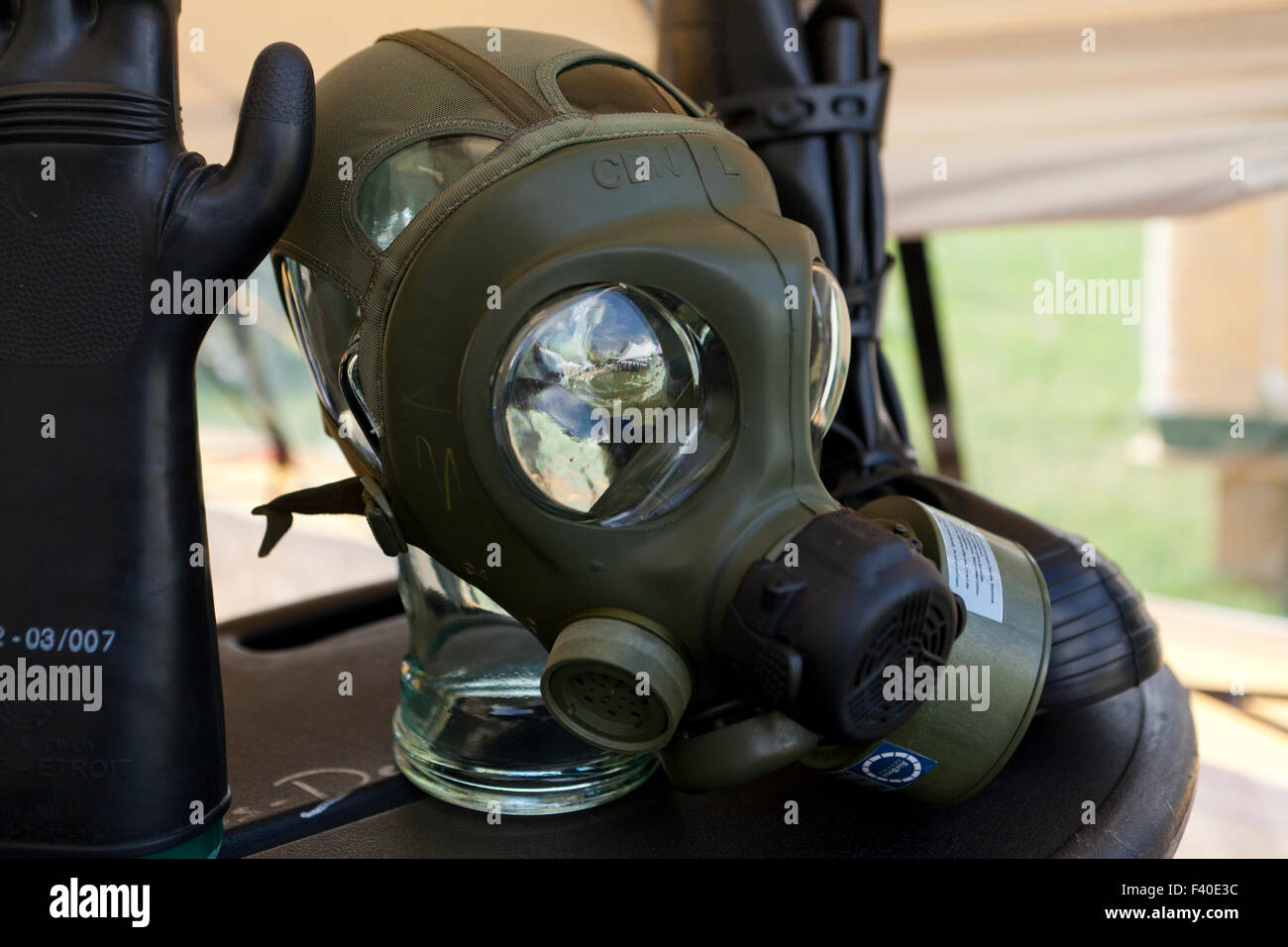 AirBoss gas mask system - USA Stock Photohttps://www.alamy.com/image-license-details/?v=1https://www.alamy.com/stock-photo-airboss-gas-mask-system-usa-88521536.html
AirBoss gas mask system - USA Stock Photohttps://www.alamy.com/image-license-details/?v=1https://www.alamy.com/stock-photo-airboss-gas-mask-system-usa-88521536.htmlRMF40E3C–AirBoss gas mask system - USA
 A field near DSTL Porton Down Stock Photohttps://www.alamy.com/image-license-details/?v=1https://www.alamy.com/a-field-near-dstl-porton-down-image255508069.html
A field near DSTL Porton Down Stock Photohttps://www.alamy.com/image-license-details/?v=1https://www.alamy.com/a-field-near-dstl-porton-down-image255508069.htmlRFTRKB45–A field near DSTL Porton Down
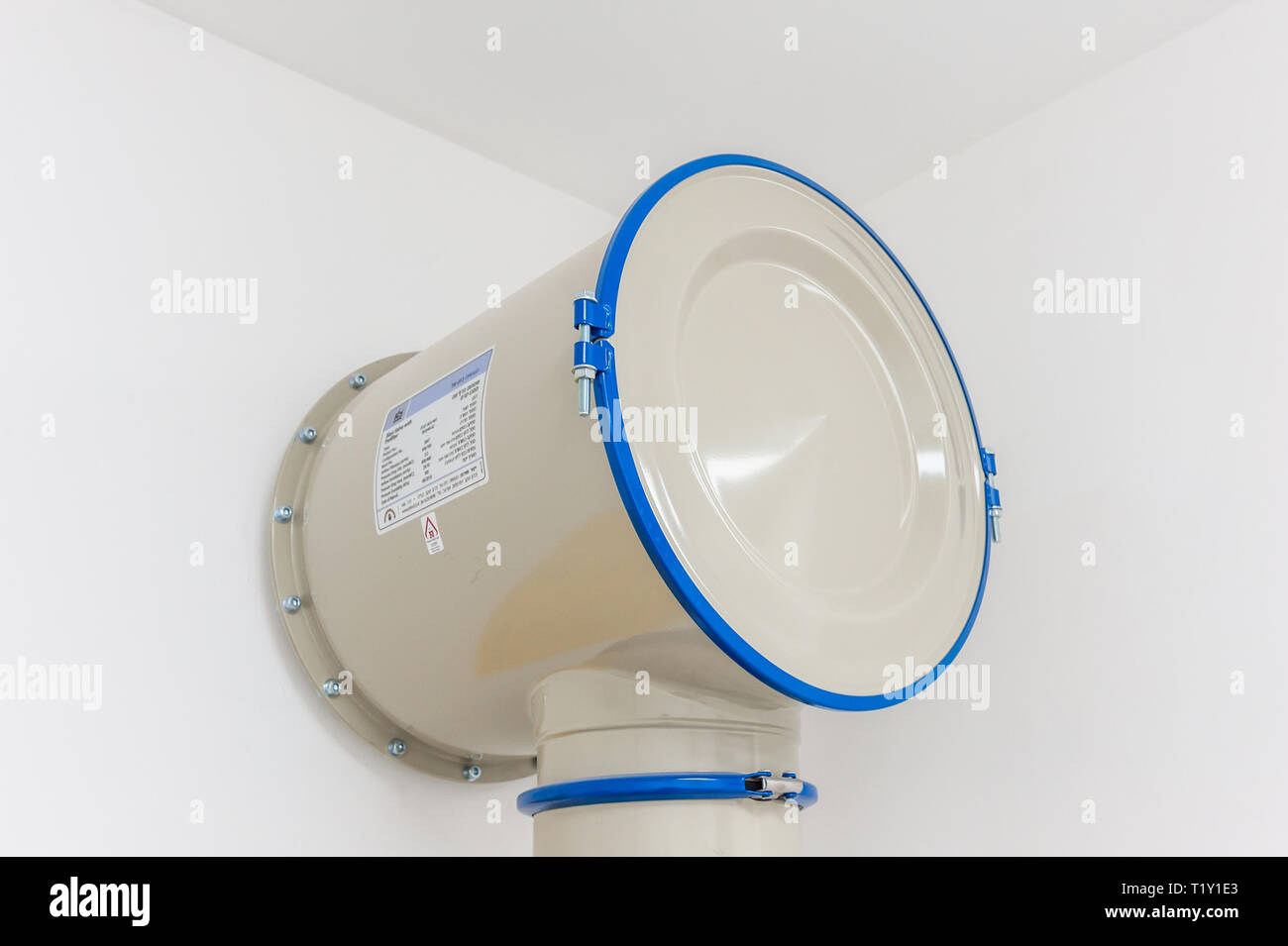 Collective CBRN filtration system attached to a valve in the wall of a shelter in Israel Stock Photohttps://www.alamy.com/image-license-details/?v=1https://www.alamy.com/collective-cbrn-filtration-system-attached-to-a-valve-in-the-wall-of-a-shelter-in-israel-image242153691.html
Collective CBRN filtration system attached to a valve in the wall of a shelter in Israel Stock Photohttps://www.alamy.com/image-license-details/?v=1https://www.alamy.com/collective-cbrn-filtration-system-attached-to-a-valve-in-the-wall-of-a-shelter-in-israel-image242153691.htmlRFT1Y1E3–Collective CBRN filtration system attached to a valve in the wall of a shelter in Israel
 U.S. Air Force Airmen from Joint Base Elmendorf-Richardson wait in a high- mobility, multipurpose wheeled vehicle to conduct a post-attack reconnaissance following a simulated chemical, biological, radiological, and nuclear defense attack for exercise Polar Force 19-1 at JBER, Alaska, Oct. 25, 2018. The exercise tests the base's ability to integrate, mobilize, and prepare assigned personnel, aircraft and equipment for a wartime mission, and to employ forces and weapons systems. (U.S. Air Force photo by Staff Sgt. James Richardson) Stock Photohttps://www.alamy.com/image-license-details/?v=1https://www.alamy.com/us-air-force-airmen-from-joint-base-elmendorf-richardson-wait-in-a-high-mobility-multipurpose-wheeled-vehicle-to-conduct-a-post-attack-reconnaissance-following-a-simulated-chemical-biological-radiological-and-nuclear-defense-attack-for-exercise-polar-force-19-1-at-jber-alaska-oct-25-2018-the-exercise-tests-the-bases-ability-to-integrate-mobilize-and-prepare-assigned-personnel-aircraft-and-equipment-for-a-wartime-mission-and-to-employ-forces-and-weapons-systems-us-air-force-photo-by-staff-sgt-james-richardson-image223288949.html
U.S. Air Force Airmen from Joint Base Elmendorf-Richardson wait in a high- mobility, multipurpose wheeled vehicle to conduct a post-attack reconnaissance following a simulated chemical, biological, radiological, and nuclear defense attack for exercise Polar Force 19-1 at JBER, Alaska, Oct. 25, 2018. The exercise tests the base's ability to integrate, mobilize, and prepare assigned personnel, aircraft and equipment for a wartime mission, and to employ forces and weapons systems. (U.S. Air Force photo by Staff Sgt. James Richardson) Stock Photohttps://www.alamy.com/image-license-details/?v=1https://www.alamy.com/us-air-force-airmen-from-joint-base-elmendorf-richardson-wait-in-a-high-mobility-multipurpose-wheeled-vehicle-to-conduct-a-post-attack-reconnaissance-following-a-simulated-chemical-biological-radiological-and-nuclear-defense-attack-for-exercise-polar-force-19-1-at-jber-alaska-oct-25-2018-the-exercise-tests-the-bases-ability-to-integrate-mobilize-and-prepare-assigned-personnel-aircraft-and-equipment-for-a-wartime-mission-and-to-employ-forces-and-weapons-systems-us-air-force-photo-by-staff-sgt-james-richardson-image223288949.htmlRMPY7K99–U.S. Air Force Airmen from Joint Base Elmendorf-Richardson wait in a high- mobility, multipurpose wheeled vehicle to conduct a post-attack reconnaissance following a simulated chemical, biological, radiological, and nuclear defense attack for exercise Polar Force 19-1 at JBER, Alaska, Oct. 25, 2018. The exercise tests the base's ability to integrate, mobilize, and prepare assigned personnel, aircraft and equipment for a wartime mission, and to employ forces and weapons systems. (U.S. Air Force photo by Staff Sgt. James Richardson)
 Commanding General Brig. Gen. Brian Cavanaugh, of 1st Marine Aircraft Wing (MAW), reviews Chemical, Biological, Radiological, Nuclear Defense (CBRN) capabilities during a visit at MCAS Futenma, Okinawa, Japan, June 28, 2021. Cavanaugh visited CBRN to gain an improved understanding of their mission and how to effectively employ the Marines if required. Stock Photohttps://www.alamy.com/image-license-details/?v=1https://www.alamy.com/commanding-general-brig-gen-brian-cavanaugh-of-1st-marine-aircraft-wing-maw-reviews-chemical-biological-radiological-nuclear-defense-cbrn-capabilities-during-a-visit-at-mcas-futenma-okinawa-japan-june-28-2021-cavanaugh-visited-cbrn-to-gain-an-improved-understanding-of-their-mission-and-how-to-effectively-employ-the-marines-if-required-image442473461.html
Commanding General Brig. Gen. Brian Cavanaugh, of 1st Marine Aircraft Wing (MAW), reviews Chemical, Biological, Radiological, Nuclear Defense (CBRN) capabilities during a visit at MCAS Futenma, Okinawa, Japan, June 28, 2021. Cavanaugh visited CBRN to gain an improved understanding of their mission and how to effectively employ the Marines if required. Stock Photohttps://www.alamy.com/image-license-details/?v=1https://www.alamy.com/commanding-general-brig-gen-brian-cavanaugh-of-1st-marine-aircraft-wing-maw-reviews-chemical-biological-radiological-nuclear-defense-cbrn-capabilities-during-a-visit-at-mcas-futenma-okinawa-japan-june-28-2021-cavanaugh-visited-cbrn-to-gain-an-improved-understanding-of-their-mission-and-how-to-effectively-employ-the-marines-if-required-image442473461.htmlRM2GKTBBH–Commanding General Brig. Gen. Brian Cavanaugh, of 1st Marine Aircraft Wing (MAW), reviews Chemical, Biological, Radiological, Nuclear Defense (CBRN) capabilities during a visit at MCAS Futenma, Okinawa, Japan, June 28, 2021. Cavanaugh visited CBRN to gain an improved understanding of their mission and how to effectively employ the Marines if required.
 U.S. Marine Corps Staff Sgt. Demetri Duey, an explosive ordnance disposal technician assigned to Marine Wing Support Squadron (MWSS) 172, conducts scenario-based training at Marine Corps Air Station Futenma, Okinawa, Japan, Feb. 24, 2022. Chemical, Biological, Radiological, and Nuclear Defense (CBRN) is responsible for conducting training and reconnaissance, chemical detection identification, biological agent collection and sampling, decontamination of personnel, equipment, and casualties and individual protective measures in first aid for unit personnel. Stock Photohttps://www.alamy.com/image-license-details/?v=1https://www.alamy.com/us-marine-corps-staff-sgt-demetri-duey-an-explosive-ordnance-disposal-technician-assigned-to-marine-wing-support-squadron-mwss-172-conducts-scenario-based-training-at-marine-corps-air-station-futenma-okinawa-japan-feb-24-2022-chemical-biological-radiological-and-nuclear-defense-cbrn-is-responsible-for-conducting-training-and-reconnaissance-chemical-detection-identification-biological-agent-collection-and-sampling-decontamination-of-personnel-equipment-and-casualties-and-individual-protective-measures-in-first-aid-for-unit-personnel-image502433178.html
U.S. Marine Corps Staff Sgt. Demetri Duey, an explosive ordnance disposal technician assigned to Marine Wing Support Squadron (MWSS) 172, conducts scenario-based training at Marine Corps Air Station Futenma, Okinawa, Japan, Feb. 24, 2022. Chemical, Biological, Radiological, and Nuclear Defense (CBRN) is responsible for conducting training and reconnaissance, chemical detection identification, biological agent collection and sampling, decontamination of personnel, equipment, and casualties and individual protective measures in first aid for unit personnel. Stock Photohttps://www.alamy.com/image-license-details/?v=1https://www.alamy.com/us-marine-corps-staff-sgt-demetri-duey-an-explosive-ordnance-disposal-technician-assigned-to-marine-wing-support-squadron-mwss-172-conducts-scenario-based-training-at-marine-corps-air-station-futenma-okinawa-japan-feb-24-2022-chemical-biological-radiological-and-nuclear-defense-cbrn-is-responsible-for-conducting-training-and-reconnaissance-chemical-detection-identification-biological-agent-collection-and-sampling-decontamination-of-personnel-equipment-and-casualties-and-individual-protective-measures-in-first-aid-for-unit-personnel-image502433178.htmlRM2M5BPJ2–U.S. Marine Corps Staff Sgt. Demetri Duey, an explosive ordnance disposal technician assigned to Marine Wing Support Squadron (MWSS) 172, conducts scenario-based training at Marine Corps Air Station Futenma, Okinawa, Japan, Feb. 24, 2022. Chemical, Biological, Radiological, and Nuclear Defense (CBRN) is responsible for conducting training and reconnaissance, chemical detection identification, biological agent collection and sampling, decontamination of personnel, equipment, and casualties and individual protective measures in first aid for unit personnel.
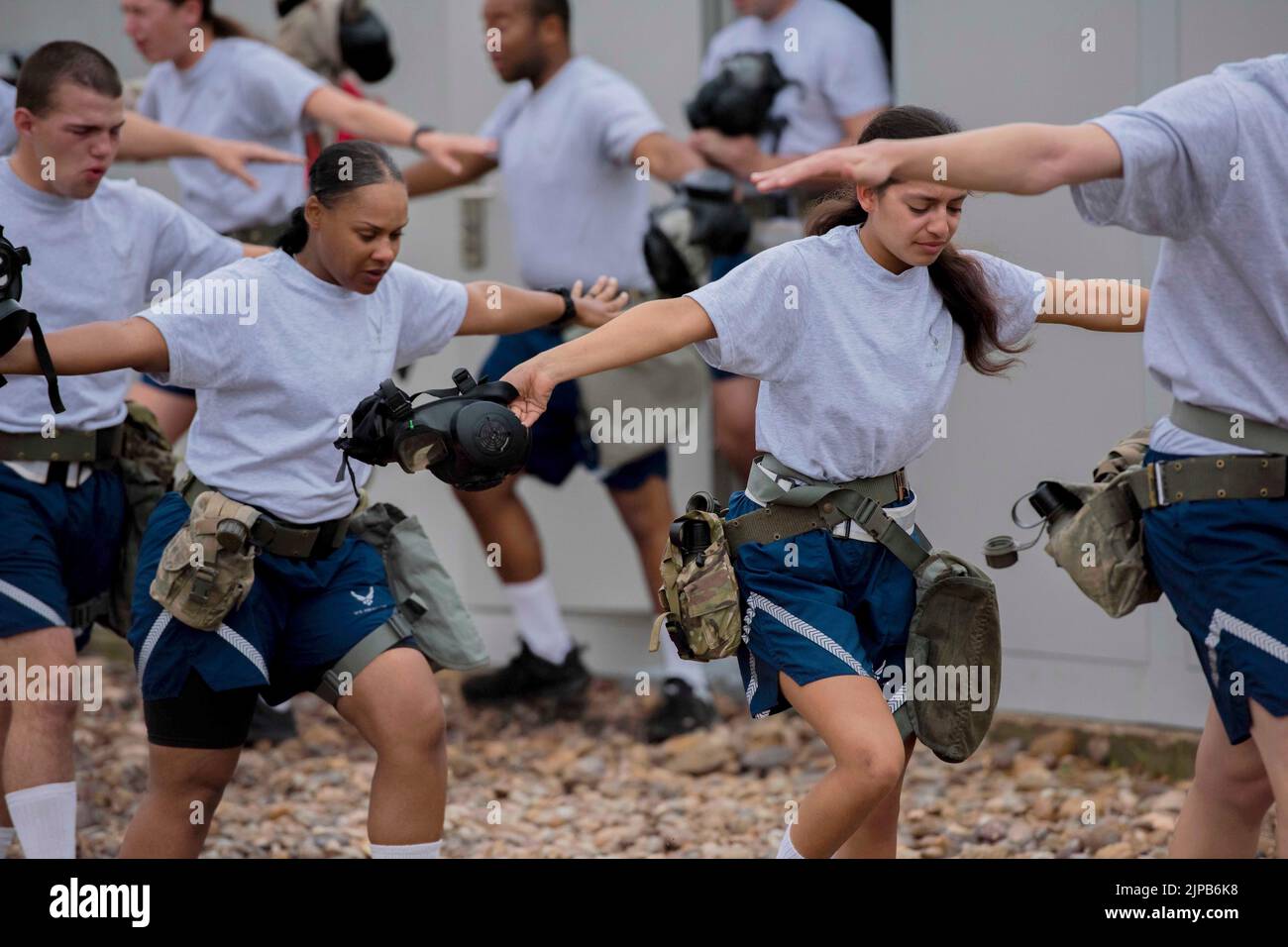 August 15, 2022 - Joint Base San Antonio-Lackland, Texas, USA - The Basic Expeditionary Airman Skills Training's (BEAST) Mask Confidence Training Facility reopened August. 15, 2022 on Joint Base San Antonio-Lackland's Chapman Training Annex, Texas, for basic military training trainees. The 'gas chamber' training falls under the Chemical, Biological, Radiological, and Nuclear (CBRN) Defense Course and trainees go through the training during week four of BMT. Initially, the facility closed in April 2020 due to COVID-19, but sustained storm damage from Winter Storm Uri in February 2021, postponin Stock Photohttps://www.alamy.com/image-license-details/?v=1https://www.alamy.com/august-15-2022-joint-base-san-antonio-lackland-texas-usa-the-basic-expeditionary-airman-skills-trainings-beast-mask-confidence-training-facility-reopened-august-15-2022-on-joint-base-san-antonio-lacklands-chapman-training-annex-texas-for-basic-military-training-trainees-the-gas-chamber-training-falls-under-the-chemical-biological-radiological-and-nuclear-cbrn-defense-course-and-trainees-go-through-the-training-during-week-four-of-bmt-initially-the-facility-closed-in-april-2020-due-to-covid-19-but-sustained-storm-damage-from-winter-storm-uri-in-february-2021-postponin-image478449084.html
August 15, 2022 - Joint Base San Antonio-Lackland, Texas, USA - The Basic Expeditionary Airman Skills Training's (BEAST) Mask Confidence Training Facility reopened August. 15, 2022 on Joint Base San Antonio-Lackland's Chapman Training Annex, Texas, for basic military training trainees. The 'gas chamber' training falls under the Chemical, Biological, Radiological, and Nuclear (CBRN) Defense Course and trainees go through the training during week four of BMT. Initially, the facility closed in April 2020 due to COVID-19, but sustained storm damage from Winter Storm Uri in February 2021, postponin Stock Photohttps://www.alamy.com/image-license-details/?v=1https://www.alamy.com/august-15-2022-joint-base-san-antonio-lackland-texas-usa-the-basic-expeditionary-airman-skills-trainings-beast-mask-confidence-training-facility-reopened-august-15-2022-on-joint-base-san-antonio-lacklands-chapman-training-annex-texas-for-basic-military-training-trainees-the-gas-chamber-training-falls-under-the-chemical-biological-radiological-and-nuclear-cbrn-defense-course-and-trainees-go-through-the-training-during-week-four-of-bmt-initially-the-facility-closed-in-april-2020-due-to-covid-19-but-sustained-storm-damage-from-winter-storm-uri-in-february-2021-postponin-image478449084.htmlRM2JPB6K8–August 15, 2022 - Joint Base San Antonio-Lackland, Texas, USA - The Basic Expeditionary Airman Skills Training's (BEAST) Mask Confidence Training Facility reopened August. 15, 2022 on Joint Base San Antonio-Lackland's Chapman Training Annex, Texas, for basic military training trainees. The 'gas chamber' training falls under the Chemical, Biological, Radiological, and Nuclear (CBRN) Defense Course and trainees go through the training during week four of BMT. Initially, the facility closed in April 2020 due to COVID-19, but sustained storm damage from Winter Storm Uri in February 2021, postponin
 CAMP LEMONNIER, Djibouti (Sept. 21, 2013) Marine Corps Cpl. Cody Kisthart, the respiratory protection noncommissioned officer for the chemical, biological, radiological and nuclear (CBRN) defense team assigned to 26th Marine Expeditionary Unit (MEU), prep Stock Photohttps://www.alamy.com/image-license-details/?v=1https://www.alamy.com/camp-lemonnier-djibouti-sept-21-2013-marine-corps-cpl-cody-kisthart-image60831788.html
CAMP LEMONNIER, Djibouti (Sept. 21, 2013) Marine Corps Cpl. Cody Kisthart, the respiratory protection noncommissioned officer for the chemical, biological, radiological and nuclear (CBRN) defense team assigned to 26th Marine Expeditionary Unit (MEU), prep Stock Photohttps://www.alamy.com/image-license-details/?v=1https://www.alamy.com/camp-lemonnier-djibouti-sept-21-2013-marine-corps-cpl-cody-kisthart-image60831788.htmlRMDEY3FT–CAMP LEMONNIER, Djibouti (Sept. 21, 2013) Marine Corps Cpl. Cody Kisthart, the respiratory protection noncommissioned officer for the chemical, biological, radiological and nuclear (CBRN) defense team assigned to 26th Marine Expeditionary Unit (MEU), prep
 the Federal Armed Forces, Munster, Germany. 04th Sep, 2013. The driveway to the institute of military science, in german WIS, for defense technology - CBRN defense of the Federal Armed Forces, Munster, Germany, 04 September 2013. According to own indications the WIS is the only larger institute in Germany which handels the defense of biological, chemical and nuclear weapons of mass destruction. Photo: PHILIPP SCHULZE/dpa/Alamy Live News Stock Photohttps://www.alamy.com/image-license-details/?v=1https://www.alamy.com/the-federal-armed-forces-munster-germany-04th-sep-2013-the-driveway-image60052593.html
the Federal Armed Forces, Munster, Germany. 04th Sep, 2013. The driveway to the institute of military science, in german WIS, for defense technology - CBRN defense of the Federal Armed Forces, Munster, Germany, 04 September 2013. According to own indications the WIS is the only larger institute in Germany which handels the defense of biological, chemical and nuclear weapons of mass destruction. Photo: PHILIPP SCHULZE/dpa/Alamy Live News Stock Photohttps://www.alamy.com/image-license-details/?v=1https://www.alamy.com/the-federal-armed-forces-munster-germany-04th-sep-2013-the-driveway-image60052593.htmlRMDDKHKD–the Federal Armed Forces, Munster, Germany. 04th Sep, 2013. The driveway to the institute of military science, in german WIS, for defense technology - CBRN defense of the Federal Armed Forces, Munster, Germany, 04 September 2013. According to own indications the WIS is the only larger institute in Germany which handels the defense of biological, chemical and nuclear weapons of mass destruction. Photo: PHILIPP SCHULZE/dpa/Alamy Live News
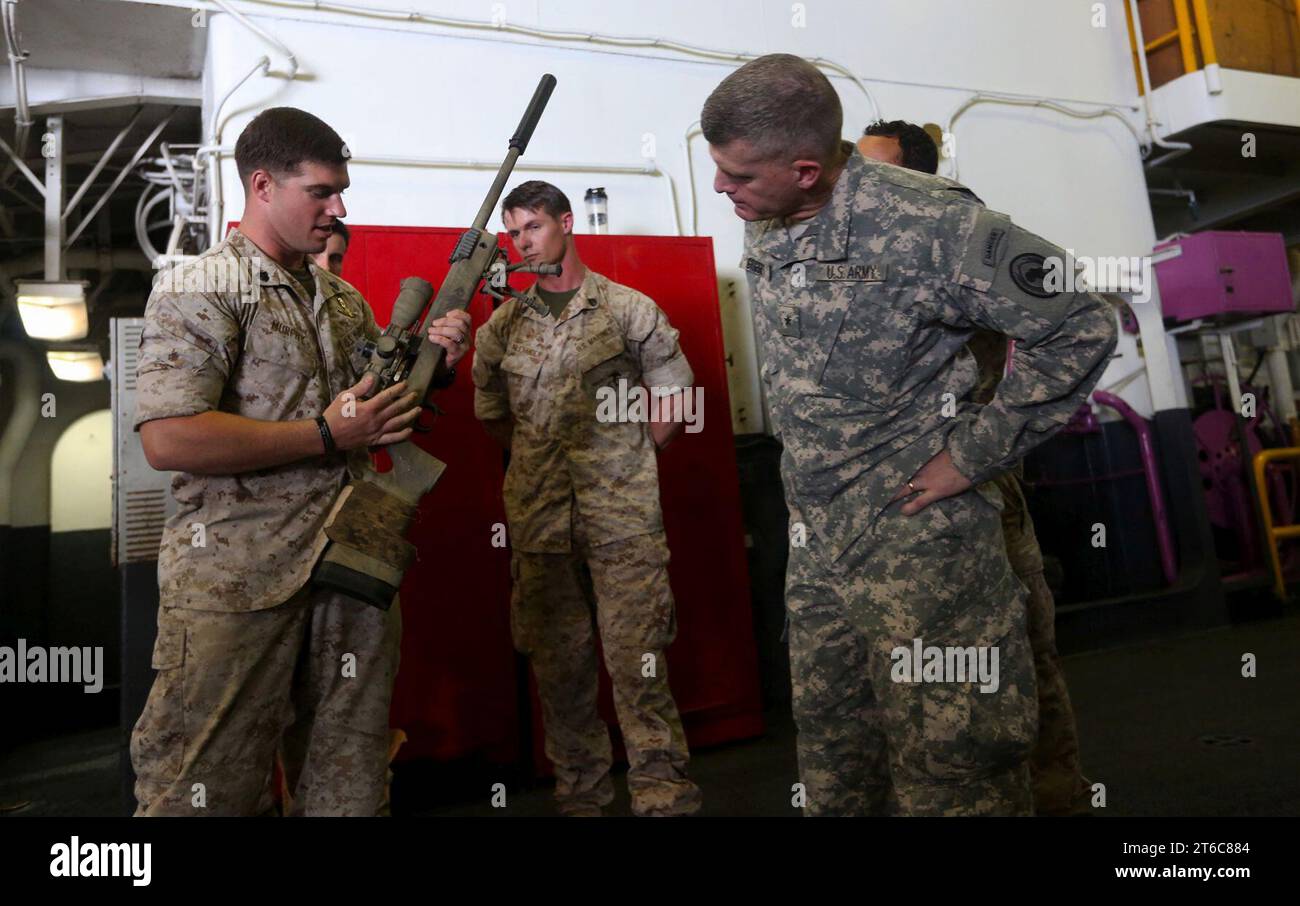 USS BATAAN (LHD 5) 140501 Stock Photohttps://www.alamy.com/image-license-details/?v=1https://www.alamy.com/uss-bataan-lhd-5-140501-image571900004.html
USS BATAAN (LHD 5) 140501 Stock Photohttps://www.alamy.com/image-license-details/?v=1https://www.alamy.com/uss-bataan-lhd-5-140501-image571900004.htmlRM2T6C884–USS BATAAN (LHD 5) 140501
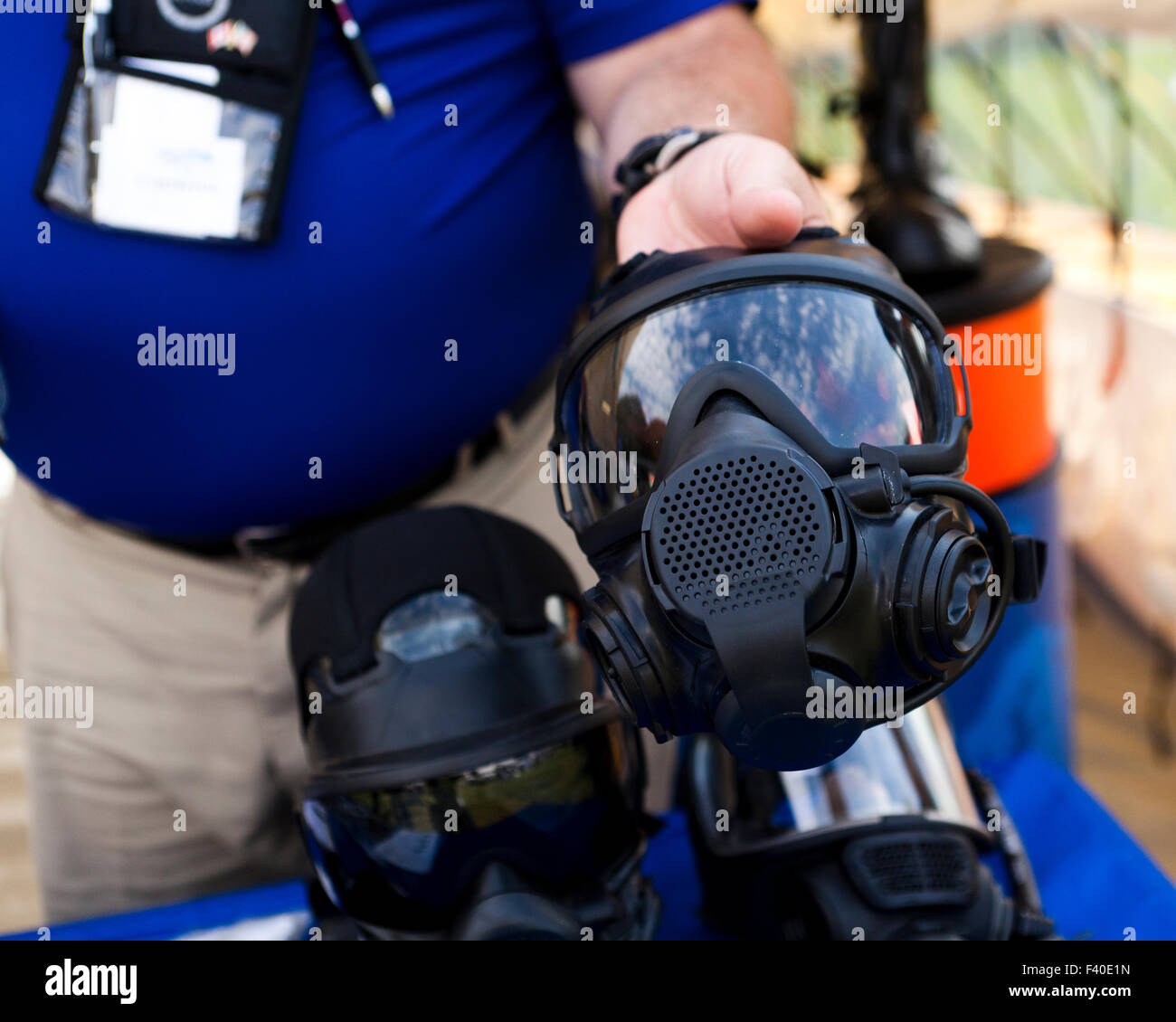 AirBoss gas mask system Stock Photohttps://www.alamy.com/image-license-details/?v=1https://www.alamy.com/stock-photo-airboss-gas-mask-system-88521489.html
AirBoss gas mask system Stock Photohttps://www.alamy.com/image-license-details/?v=1https://www.alamy.com/stock-photo-airboss-gas-mask-system-88521489.htmlRMF40E1N–AirBoss gas mask system
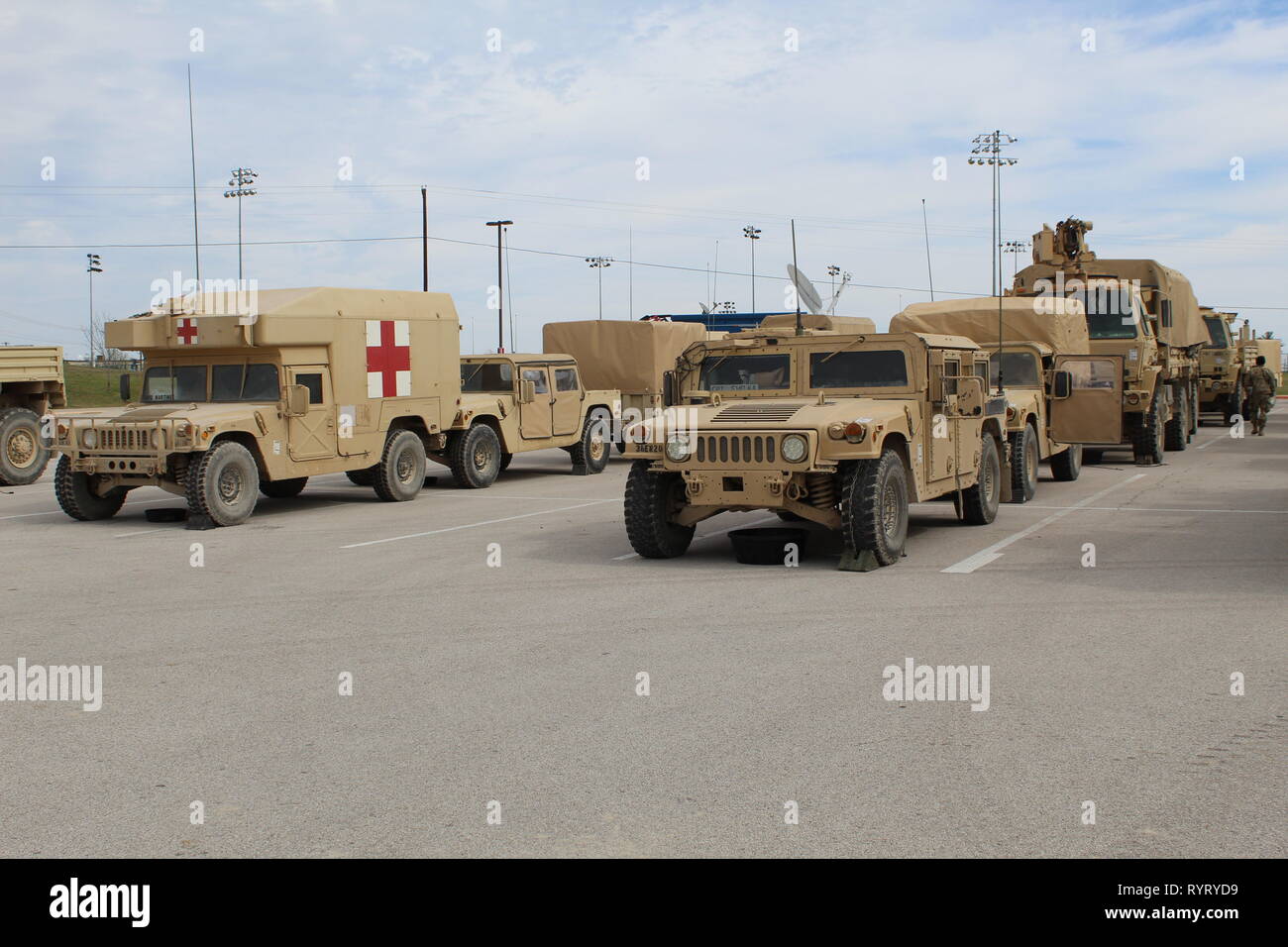 The 36th Engineer Brigade is training up for defense support of civil authorities (DSCA) as members of the Defense Chemical, Biological, Radiological, Nuclear Response Force (DCRF). The 36th Engineer Brigade comprises a portion of the 5,200-person DCRF with a mission to save lives, mitigate human suffering, and facilitate recovery operations in the event of a catastrophic Chemical, Biological, Radiological and Nuclear (CBRN) event in the United States. Joint Task force Civil Support provides command and control of the DCRF for a disaster response and is always in support of civil authorities. Stock Photohttps://www.alamy.com/image-license-details/?v=1https://www.alamy.com/the-36th-engineer-brigade-is-training-up-for-defense-support-of-civil-authorities-dsca-as-members-of-the-defense-chemical-biological-radiological-nuclear-response-force-dcrf-the-36th-engineer-brigade-comprises-a-portion-of-the-5200-person-dcrf-with-a-mission-to-save-lives-mitigate-human-suffering-and-facilitate-recovery-operations-in-the-event-of-a-catastrophic-chemical-biological-radiological-and-nuclear-cbrn-event-in-the-united-states-joint-task-force-civil-support-provides-command-and-control-of-the-dcrf-for-a-disaster-response-and-is-always-in-support-of-civil-authorities-image240856933.html
The 36th Engineer Brigade is training up for defense support of civil authorities (DSCA) as members of the Defense Chemical, Biological, Radiological, Nuclear Response Force (DCRF). The 36th Engineer Brigade comprises a portion of the 5,200-person DCRF with a mission to save lives, mitigate human suffering, and facilitate recovery operations in the event of a catastrophic Chemical, Biological, Radiological and Nuclear (CBRN) event in the United States. Joint Task force Civil Support provides command and control of the DCRF for a disaster response and is always in support of civil authorities. Stock Photohttps://www.alamy.com/image-license-details/?v=1https://www.alamy.com/the-36th-engineer-brigade-is-training-up-for-defense-support-of-civil-authorities-dsca-as-members-of-the-defense-chemical-biological-radiological-nuclear-response-force-dcrf-the-36th-engineer-brigade-comprises-a-portion-of-the-5200-person-dcrf-with-a-mission-to-save-lives-mitigate-human-suffering-and-facilitate-recovery-operations-in-the-event-of-a-catastrophic-chemical-biological-radiological-and-nuclear-cbrn-event-in-the-united-states-joint-task-force-civil-support-provides-command-and-control-of-the-dcrf-for-a-disaster-response-and-is-always-in-support-of-civil-authorities-image240856933.htmlRMRYRYD9–The 36th Engineer Brigade is training up for defense support of civil authorities (DSCA) as members of the Defense Chemical, Biological, Radiological, Nuclear Response Force (DCRF). The 36th Engineer Brigade comprises a portion of the 5,200-person DCRF with a mission to save lives, mitigate human suffering, and facilitate recovery operations in the event of a catastrophic Chemical, Biological, Radiological and Nuclear (CBRN) event in the United States. Joint Task force Civil Support provides command and control of the DCRF for a disaster response and is always in support of civil authorities.
 Commanding General Brig. Gen. Brian Cavanaugh, of 1st Marine Aircraft Wing (MAW), reviews Chemical, Biological, Radiological, Nuclear Defense (CBRN) capabilities during a visit at MCAS Futenma, Okinawa, Japan, June 28, 2021. Cavanaugh visited CBRN to gain an improved understanding of their mission and how to effectively employ the Marines if required. Stock Photohttps://www.alamy.com/image-license-details/?v=1https://www.alamy.com/commanding-general-brig-gen-brian-cavanaugh-of-1st-marine-aircraft-wing-maw-reviews-chemical-biological-radiological-nuclear-defense-cbrn-capabilities-during-a-visit-at-mcas-futenma-okinawa-japan-june-28-2021-cavanaugh-visited-cbrn-to-gain-an-improved-understanding-of-their-mission-and-how-to-effectively-employ-the-marines-if-required-image442473481.html
Commanding General Brig. Gen. Brian Cavanaugh, of 1st Marine Aircraft Wing (MAW), reviews Chemical, Biological, Radiological, Nuclear Defense (CBRN) capabilities during a visit at MCAS Futenma, Okinawa, Japan, June 28, 2021. Cavanaugh visited CBRN to gain an improved understanding of their mission and how to effectively employ the Marines if required. Stock Photohttps://www.alamy.com/image-license-details/?v=1https://www.alamy.com/commanding-general-brig-gen-brian-cavanaugh-of-1st-marine-aircraft-wing-maw-reviews-chemical-biological-radiological-nuclear-defense-cbrn-capabilities-during-a-visit-at-mcas-futenma-okinawa-japan-june-28-2021-cavanaugh-visited-cbrn-to-gain-an-improved-understanding-of-their-mission-and-how-to-effectively-employ-the-marines-if-required-image442473481.htmlRM2GKTBC9–Commanding General Brig. Gen. Brian Cavanaugh, of 1st Marine Aircraft Wing (MAW), reviews Chemical, Biological, Radiological, Nuclear Defense (CBRN) capabilities during a visit at MCAS Futenma, Okinawa, Japan, June 28, 2021. Cavanaugh visited CBRN to gain an improved understanding of their mission and how to effectively employ the Marines if required.
 U.S. Marine Corps Staff Sgt. Demetri Duey, left, and Sgt. Lena Huynh, right, both explosive ordnance disposal technicians assigned to Marine Wing Support Squadron (MWSS) 172 conduct scenario-based training at Marine Corps Air Station Futenma, Okinawa, Japan, Feb. 24, 2022. Chemical, Biological, Radiological, and Nuclear Defense (CBRN) is responsible for conducting training and reconnaissance, chemical detection identification, biological agent collection and sampling, decontamination of personnel, equipment, and casualties and individual protective measures in first aid for unit personnel. Stock Photohttps://www.alamy.com/image-license-details/?v=1https://www.alamy.com/us-marine-corps-staff-sgt-demetri-duey-left-and-sgt-lena-huynh-right-both-explosive-ordnance-disposal-technicians-assigned-to-marine-wing-support-squadron-mwss-172-conduct-scenario-based-training-at-marine-corps-air-station-futenma-okinawa-japan-feb-24-2022-chemical-biological-radiological-and-nuclear-defense-cbrn-is-responsible-for-conducting-training-and-reconnaissance-chemical-detection-identification-biological-agent-collection-and-sampling-decontamination-of-personnel-equipment-and-casualties-and-individual-protective-measures-in-first-aid-for-unit-personnel-image502433175.html
U.S. Marine Corps Staff Sgt. Demetri Duey, left, and Sgt. Lena Huynh, right, both explosive ordnance disposal technicians assigned to Marine Wing Support Squadron (MWSS) 172 conduct scenario-based training at Marine Corps Air Station Futenma, Okinawa, Japan, Feb. 24, 2022. Chemical, Biological, Radiological, and Nuclear Defense (CBRN) is responsible for conducting training and reconnaissance, chemical detection identification, biological agent collection and sampling, decontamination of personnel, equipment, and casualties and individual protective measures in first aid for unit personnel. Stock Photohttps://www.alamy.com/image-license-details/?v=1https://www.alamy.com/us-marine-corps-staff-sgt-demetri-duey-left-and-sgt-lena-huynh-right-both-explosive-ordnance-disposal-technicians-assigned-to-marine-wing-support-squadron-mwss-172-conduct-scenario-based-training-at-marine-corps-air-station-futenma-okinawa-japan-feb-24-2022-chemical-biological-radiological-and-nuclear-defense-cbrn-is-responsible-for-conducting-training-and-reconnaissance-chemical-detection-identification-biological-agent-collection-and-sampling-decontamination-of-personnel-equipment-and-casualties-and-individual-protective-measures-in-first-aid-for-unit-personnel-image502433175.htmlRM2M5BPHY–U.S. Marine Corps Staff Sgt. Demetri Duey, left, and Sgt. Lena Huynh, right, both explosive ordnance disposal technicians assigned to Marine Wing Support Squadron (MWSS) 172 conduct scenario-based training at Marine Corps Air Station Futenma, Okinawa, Japan, Feb. 24, 2022. Chemical, Biological, Radiological, and Nuclear Defense (CBRN) is responsible for conducting training and reconnaissance, chemical detection identification, biological agent collection and sampling, decontamination of personnel, equipment, and casualties and individual protective measures in first aid for unit personnel.
 Jolon, California, USA. 24th June, 2024. Airmen with the 821st Contingency Response Squadron work together to build tents during Exercise STORM CROW, at Fort Hunter-Liggett, California, June 24, 2024. The 621st Contingency Response Wing inspection team validated and certified the 821st CRS during Exercise STORM CROW on multiple areas of interest, such as base defense and chemical, biological, radiological and nuclear readiness for their upcoming deployment alert cycle this fall. (Credit Image: © U.S. Air Force/ZUMA Press Wire) EDITORIAL USAGE ONLY! Not for Commercial USAGE! Stock Photohttps://www.alamy.com/image-license-details/?v=1https://www.alamy.com/jolon-california-usa-24th-june-2024-airmen-with-the-821st-contingency-response-squadron-work-together-to-build-tents-during-exercise-storm-crow-at-fort-hunter-liggett-california-june-24-2024-the-621st-contingency-response-wing-inspection-team-validated-and-certified-the-821st-crs-during-exercise-storm-crow-on-multiple-areas-of-interest-such-as-base-defense-and-chemical-biological-radiological-and-nuclear-readiness-for-their-upcoming-deployment-alert-cycle-this-fall-credit-image-us-air-forcezuma-press-wire-editorial-usage-only!-not-for-commercial-usage!-image612623629.html
Jolon, California, USA. 24th June, 2024. Airmen with the 821st Contingency Response Squadron work together to build tents during Exercise STORM CROW, at Fort Hunter-Liggett, California, June 24, 2024. The 621st Contingency Response Wing inspection team validated and certified the 821st CRS during Exercise STORM CROW on multiple areas of interest, such as base defense and chemical, biological, radiological and nuclear readiness for their upcoming deployment alert cycle this fall. (Credit Image: © U.S. Air Force/ZUMA Press Wire) EDITORIAL USAGE ONLY! Not for Commercial USAGE! Stock Photohttps://www.alamy.com/image-license-details/?v=1https://www.alamy.com/jolon-california-usa-24th-june-2024-airmen-with-the-821st-contingency-response-squadron-work-together-to-build-tents-during-exercise-storm-crow-at-fort-hunter-liggett-california-june-24-2024-the-621st-contingency-response-wing-inspection-team-validated-and-certified-the-821st-crs-during-exercise-storm-crow-on-multiple-areas-of-interest-such-as-base-defense-and-chemical-biological-radiological-and-nuclear-readiness-for-their-upcoming-deployment-alert-cycle-this-fall-credit-image-us-air-forcezuma-press-wire-editorial-usage-only!-not-for-commercial-usage!-image612623629.htmlRM2XGKBK9–Jolon, California, USA. 24th June, 2024. Airmen with the 821st Contingency Response Squadron work together to build tents during Exercise STORM CROW, at Fort Hunter-Liggett, California, June 24, 2024. The 621st Contingency Response Wing inspection team validated and certified the 821st CRS during Exercise STORM CROW on multiple areas of interest, such as base defense and chemical, biological, radiological and nuclear readiness for their upcoming deployment alert cycle this fall. (Credit Image: © U.S. Air Force/ZUMA Press Wire) EDITORIAL USAGE ONLY! Not for Commercial USAGE!
 CAMP LEMONNIER, Djibouti (Sept. 21, 2013) Marine Corps Cpl. Cody Kisthart, the respiratory protection noncommissioned officer for the chemical, biological, radiological and nuclear (CBRN) defense team assigned to 26th Marine Expeditionary Unit (MEU), prep Stock Photohttps://www.alamy.com/image-license-details/?v=1https://www.alamy.com/camp-lemonnier-djibouti-sept-21-2013-marine-corps-cpl-cody-kisthart-image60831789.html
CAMP LEMONNIER, Djibouti (Sept. 21, 2013) Marine Corps Cpl. Cody Kisthart, the respiratory protection noncommissioned officer for the chemical, biological, radiological and nuclear (CBRN) defense team assigned to 26th Marine Expeditionary Unit (MEU), prep Stock Photohttps://www.alamy.com/image-license-details/?v=1https://www.alamy.com/camp-lemonnier-djibouti-sept-21-2013-marine-corps-cpl-cody-kisthart-image60831789.htmlRMDEY3FW–CAMP LEMONNIER, Djibouti (Sept. 21, 2013) Marine Corps Cpl. Cody Kisthart, the respiratory protection noncommissioned officer for the chemical, biological, radiological and nuclear (CBRN) defense team assigned to 26th Marine Expeditionary Unit (MEU), prep
 the Federal Armed Forces, Munster, Germany. 04th Sep, 2013. The driveway to the institute of military science, in german WIS, for defense technology - CBRN defense of the Federal Armed Forces, Munster, Germany, 04 September 2013. According to own indications the WIS is the only larger institute in Germany which handels the defense of biological, chemical and nuclear weapons of mass destruction. Photo: PHILIPP SCHULZE/dpa/Alamy Live News Stock Photohttps://www.alamy.com/image-license-details/?v=1https://www.alamy.com/the-federal-armed-forces-munster-germany-04th-sep-2013-the-driveway-image60052590.html
the Federal Armed Forces, Munster, Germany. 04th Sep, 2013. The driveway to the institute of military science, in german WIS, for defense technology - CBRN defense of the Federal Armed Forces, Munster, Germany, 04 September 2013. According to own indications the WIS is the only larger institute in Germany which handels the defense of biological, chemical and nuclear weapons of mass destruction. Photo: PHILIPP SCHULZE/dpa/Alamy Live News Stock Photohttps://www.alamy.com/image-license-details/?v=1https://www.alamy.com/the-federal-armed-forces-munster-germany-04th-sep-2013-the-driveway-image60052590.htmlRMDDKHKA–the Federal Armed Forces, Munster, Germany. 04th Sep, 2013. The driveway to the institute of military science, in german WIS, for defense technology - CBRN defense of the Federal Armed Forces, Munster, Germany, 04 September 2013. According to own indications the WIS is the only larger institute in Germany which handels the defense of biological, chemical and nuclear weapons of mass destruction. Photo: PHILIPP SCHULZE/dpa/Alamy Live News
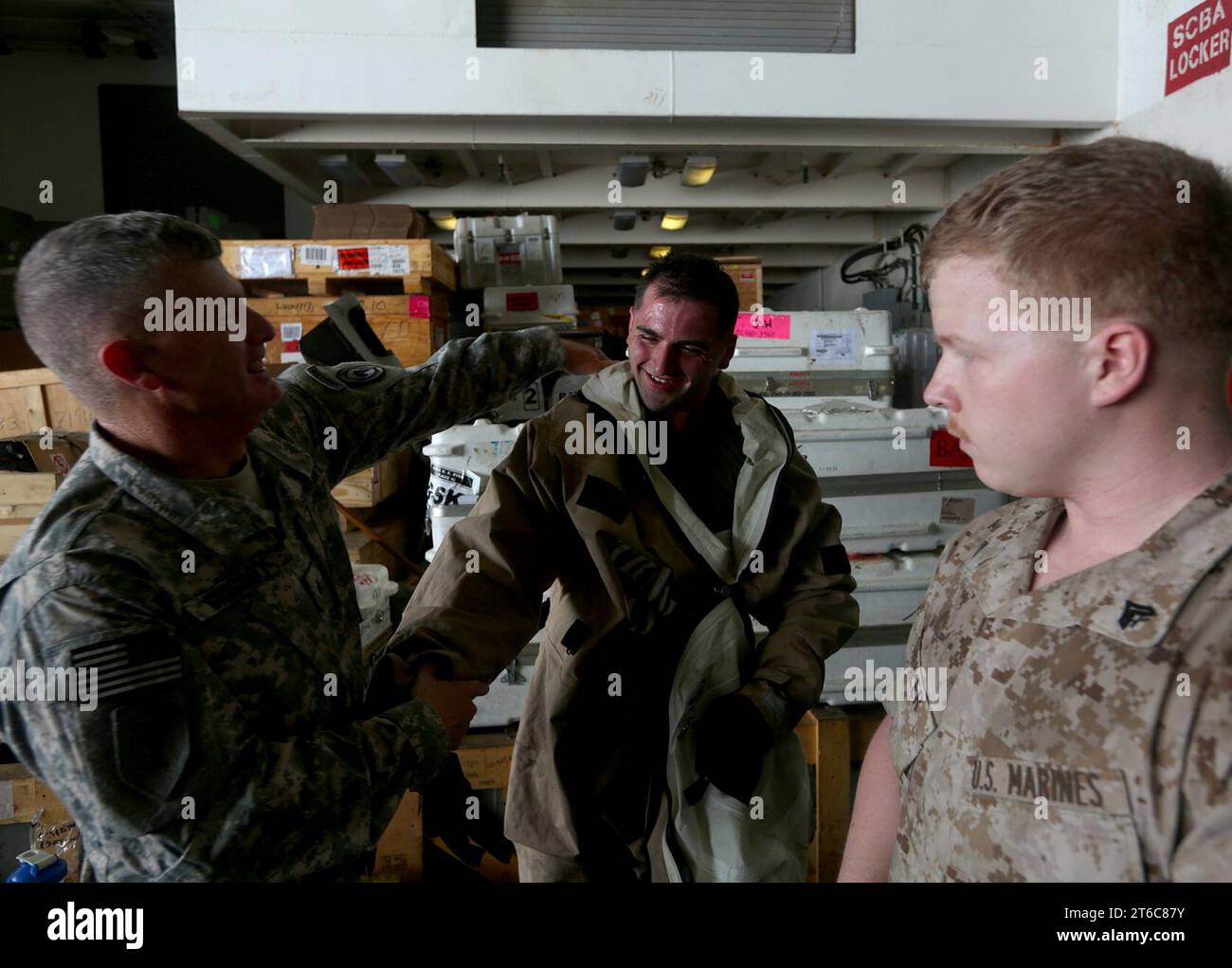 USS BATAAN (LHD 5) 140501 Stock Photohttps://www.alamy.com/image-license-details/?v=1https://www.alamy.com/uss-bataan-lhd-5-140501-image571899999.html
USS BATAAN (LHD 5) 140501 Stock Photohttps://www.alamy.com/image-license-details/?v=1https://www.alamy.com/uss-bataan-lhd-5-140501-image571899999.htmlRM2T6C87Y–USS BATAAN (LHD 5) 140501
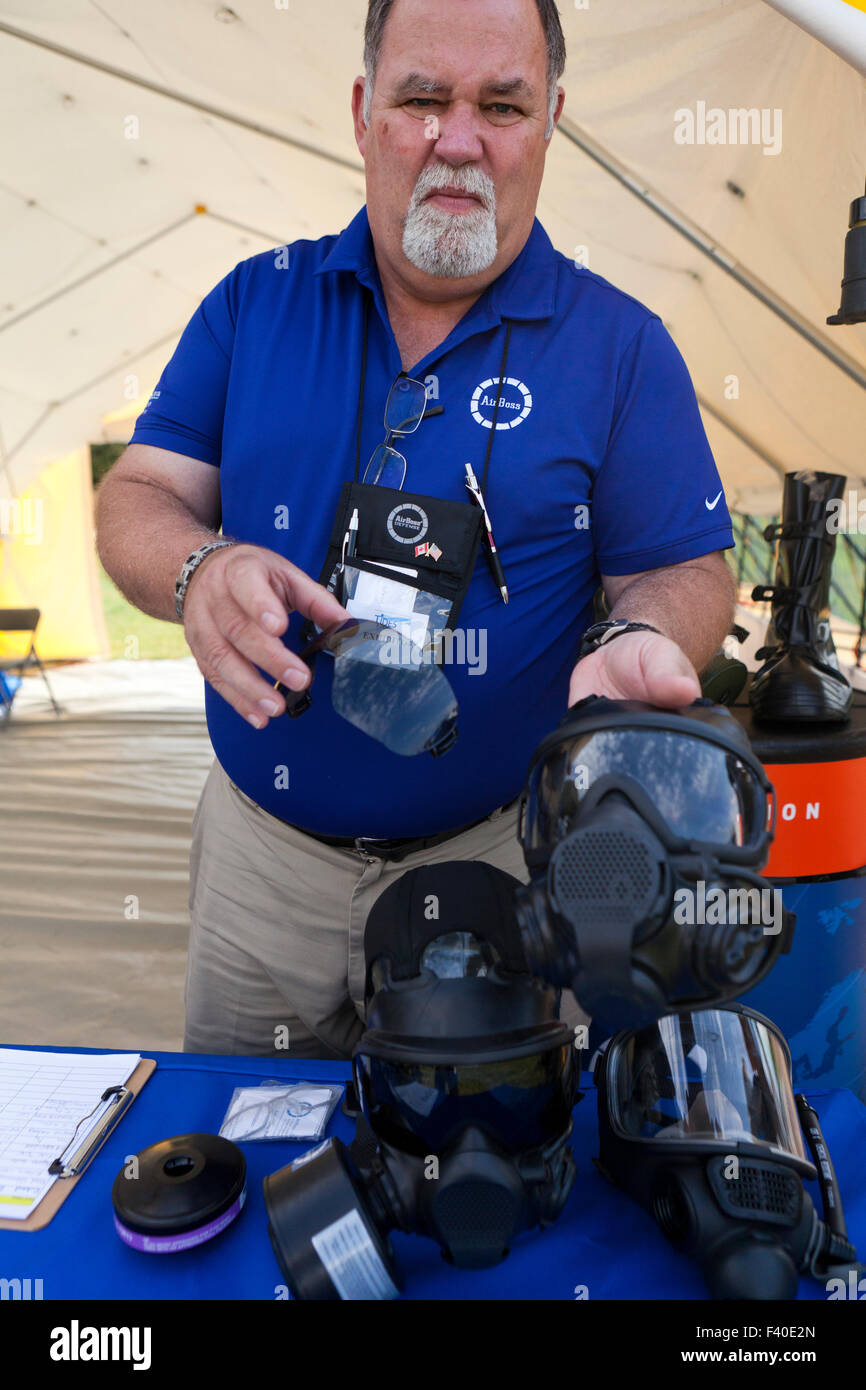 AirBoss gas mask system Stock Photohttps://www.alamy.com/image-license-details/?v=1https://www.alamy.com/stock-photo-airboss-gas-mask-system-88521517.html
AirBoss gas mask system Stock Photohttps://www.alamy.com/image-license-details/?v=1https://www.alamy.com/stock-photo-airboss-gas-mask-system-88521517.htmlRMF40E2N–AirBoss gas mask system
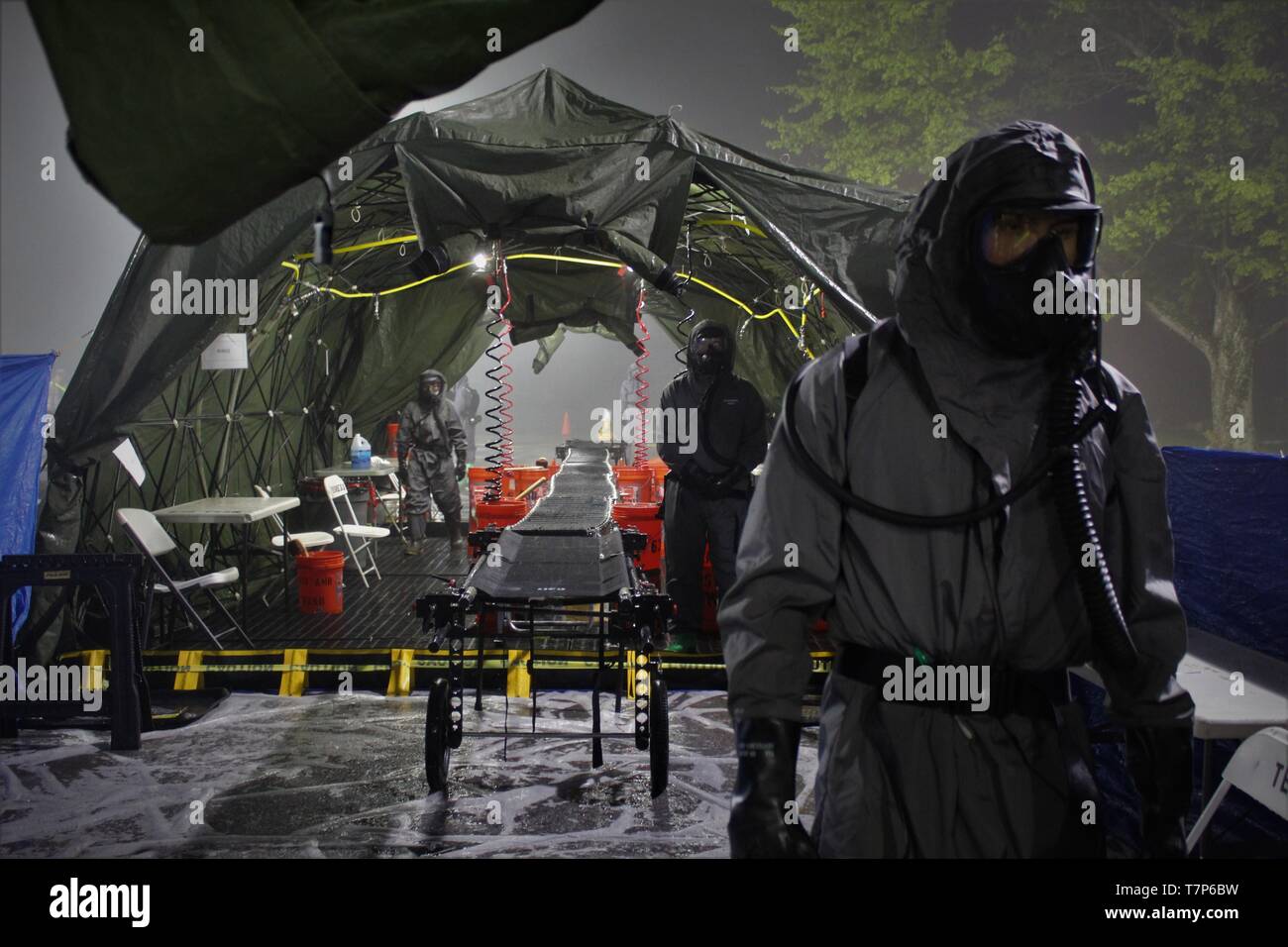 Soldiers from 181st Chemical Company (Hazard Response), Task Force Ops, Joint Task Force Civil Support (JTFCS), are prepared for role-players to come through their Mass Casualty Decontamination line at Exercise Guardian Response at Muscatatuck Urban Training Center, May 4, 2019. When directed, JTFCS provides command and control of the 5,200-person Defense Chemical Biological Radiological Nuclear (CBRN) Response Force (DCRF) during a catastrophic crisis in support of civil authorities and the lead federal agency. Vibrant Response/Guardian Response is an annual, combined Command Post Exercise an Stock Photohttps://www.alamy.com/image-license-details/?v=1https://www.alamy.com/soldiers-from-181st-chemical-company-hazard-response-task-force-ops-joint-task-force-civil-support-jtfcs-are-prepared-for-role-players-to-come-through-their-mass-casualty-decontamination-line-at-exercise-guardian-response-at-muscatatuck-urban-training-center-may-4-2019-when-directed-jtfcs-provides-command-and-control-of-the-5200-person-defense-chemical-biological-radiological-nuclear-cbrn-response-force-dcrf-during-a-catastrophic-crisis-in-support-of-civil-authorities-and-the-lead-federal-agency-vibrant-responseguardian-response-is-an-annual-combined-command-post-exercise-an-image245735725.html
Soldiers from 181st Chemical Company (Hazard Response), Task Force Ops, Joint Task Force Civil Support (JTFCS), are prepared for role-players to come through their Mass Casualty Decontamination line at Exercise Guardian Response at Muscatatuck Urban Training Center, May 4, 2019. When directed, JTFCS provides command and control of the 5,200-person Defense Chemical Biological Radiological Nuclear (CBRN) Response Force (DCRF) during a catastrophic crisis in support of civil authorities and the lead federal agency. Vibrant Response/Guardian Response is an annual, combined Command Post Exercise an Stock Photohttps://www.alamy.com/image-license-details/?v=1https://www.alamy.com/soldiers-from-181st-chemical-company-hazard-response-task-force-ops-joint-task-force-civil-support-jtfcs-are-prepared-for-role-players-to-come-through-their-mass-casualty-decontamination-line-at-exercise-guardian-response-at-muscatatuck-urban-training-center-may-4-2019-when-directed-jtfcs-provides-command-and-control-of-the-5200-person-defense-chemical-biological-radiological-nuclear-cbrn-response-force-dcrf-during-a-catastrophic-crisis-in-support-of-civil-authorities-and-the-lead-federal-agency-vibrant-responseguardian-response-is-an-annual-combined-command-post-exercise-an-image245735725.htmlRMT7P6BW–Soldiers from 181st Chemical Company (Hazard Response), Task Force Ops, Joint Task Force Civil Support (JTFCS), are prepared for role-players to come through their Mass Casualty Decontamination line at Exercise Guardian Response at Muscatatuck Urban Training Center, May 4, 2019. When directed, JTFCS provides command and control of the 5,200-person Defense Chemical Biological Radiological Nuclear (CBRN) Response Force (DCRF) during a catastrophic crisis in support of civil authorities and the lead federal agency. Vibrant Response/Guardian Response is an annual, combined Command Post Exercise an
 Commanding General Brig. Gen. Brian Cavanaugh, of 1st Marine Aircraft Wing (MAW), reviews Chemical, Biological, Radiological, Nuclear Defense (CBRN) capabilities during a visit at MCAS Futenma, Okinawa, Japan, June 28, 2021. Cavanaugh visited CBRN to gain an improved understanding of their mission and how to effectively employ the Marines if required. Stock Photohttps://www.alamy.com/image-license-details/?v=1https://www.alamy.com/commanding-general-brig-gen-brian-cavanaugh-of-1st-marine-aircraft-wing-maw-reviews-chemical-biological-radiological-nuclear-defense-cbrn-capabilities-during-a-visit-at-mcas-futenma-okinawa-japan-june-28-2021-cavanaugh-visited-cbrn-to-gain-an-improved-understanding-of-their-mission-and-how-to-effectively-employ-the-marines-if-required-image442473464.html
Commanding General Brig. Gen. Brian Cavanaugh, of 1st Marine Aircraft Wing (MAW), reviews Chemical, Biological, Radiological, Nuclear Defense (CBRN) capabilities during a visit at MCAS Futenma, Okinawa, Japan, June 28, 2021. Cavanaugh visited CBRN to gain an improved understanding of their mission and how to effectively employ the Marines if required. Stock Photohttps://www.alamy.com/image-license-details/?v=1https://www.alamy.com/commanding-general-brig-gen-brian-cavanaugh-of-1st-marine-aircraft-wing-maw-reviews-chemical-biological-radiological-nuclear-defense-cbrn-capabilities-during-a-visit-at-mcas-futenma-okinawa-japan-june-28-2021-cavanaugh-visited-cbrn-to-gain-an-improved-understanding-of-their-mission-and-how-to-effectively-employ-the-marines-if-required-image442473464.htmlRM2GKTBBM–Commanding General Brig. Gen. Brian Cavanaugh, of 1st Marine Aircraft Wing (MAW), reviews Chemical, Biological, Radiological, Nuclear Defense (CBRN) capabilities during a visit at MCAS Futenma, Okinawa, Japan, June 28, 2021. Cavanaugh visited CBRN to gain an improved understanding of their mission and how to effectively employ the Marines if required.
 U.S. Marine Corps Staff Sgt. Demetri Duey, left, and Sgt. Lena Huynh, right, both explosive ordnance disposal technicians assigned to Marine Wing Support Squadron (MWSS) 172 conduct scenario-based training at Marine Corps Air Station Futenma, Okinawa, Japan, Feb. 24, 2022. Chemical, Biological, Radiological, and Nuclear Defense (CBRN) is responsible for conducting training and reconnaissance, chemical detection identification, biological agent collection and sampling, decontamination of personnel, equipment, and casualties and individual protective measures in first aid for unit personnel. Stock Photohttps://www.alamy.com/image-license-details/?v=1https://www.alamy.com/us-marine-corps-staff-sgt-demetri-duey-left-and-sgt-lena-huynh-right-both-explosive-ordnance-disposal-technicians-assigned-to-marine-wing-support-squadron-mwss-172-conduct-scenario-based-training-at-marine-corps-air-station-futenma-okinawa-japan-feb-24-2022-chemical-biological-radiological-and-nuclear-defense-cbrn-is-responsible-for-conducting-training-and-reconnaissance-chemical-detection-identification-biological-agent-collection-and-sampling-decontamination-of-personnel-equipment-and-casualties-and-individual-protective-measures-in-first-aid-for-unit-personnel-image502433174.html
U.S. Marine Corps Staff Sgt. Demetri Duey, left, and Sgt. Lena Huynh, right, both explosive ordnance disposal technicians assigned to Marine Wing Support Squadron (MWSS) 172 conduct scenario-based training at Marine Corps Air Station Futenma, Okinawa, Japan, Feb. 24, 2022. Chemical, Biological, Radiological, and Nuclear Defense (CBRN) is responsible for conducting training and reconnaissance, chemical detection identification, biological agent collection and sampling, decontamination of personnel, equipment, and casualties and individual protective measures in first aid for unit personnel. Stock Photohttps://www.alamy.com/image-license-details/?v=1https://www.alamy.com/us-marine-corps-staff-sgt-demetri-duey-left-and-sgt-lena-huynh-right-both-explosive-ordnance-disposal-technicians-assigned-to-marine-wing-support-squadron-mwss-172-conduct-scenario-based-training-at-marine-corps-air-station-futenma-okinawa-japan-feb-24-2022-chemical-biological-radiological-and-nuclear-defense-cbrn-is-responsible-for-conducting-training-and-reconnaissance-chemical-detection-identification-biological-agent-collection-and-sampling-decontamination-of-personnel-equipment-and-casualties-and-individual-protective-measures-in-first-aid-for-unit-personnel-image502433174.htmlRM2M5BPHX–U.S. Marine Corps Staff Sgt. Demetri Duey, left, and Sgt. Lena Huynh, right, both explosive ordnance disposal technicians assigned to Marine Wing Support Squadron (MWSS) 172 conduct scenario-based training at Marine Corps Air Station Futenma, Okinawa, Japan, Feb. 24, 2022. Chemical, Biological, Radiological, and Nuclear Defense (CBRN) is responsible for conducting training and reconnaissance, chemical detection identification, biological agent collection and sampling, decontamination of personnel, equipment, and casualties and individual protective measures in first aid for unit personnel.
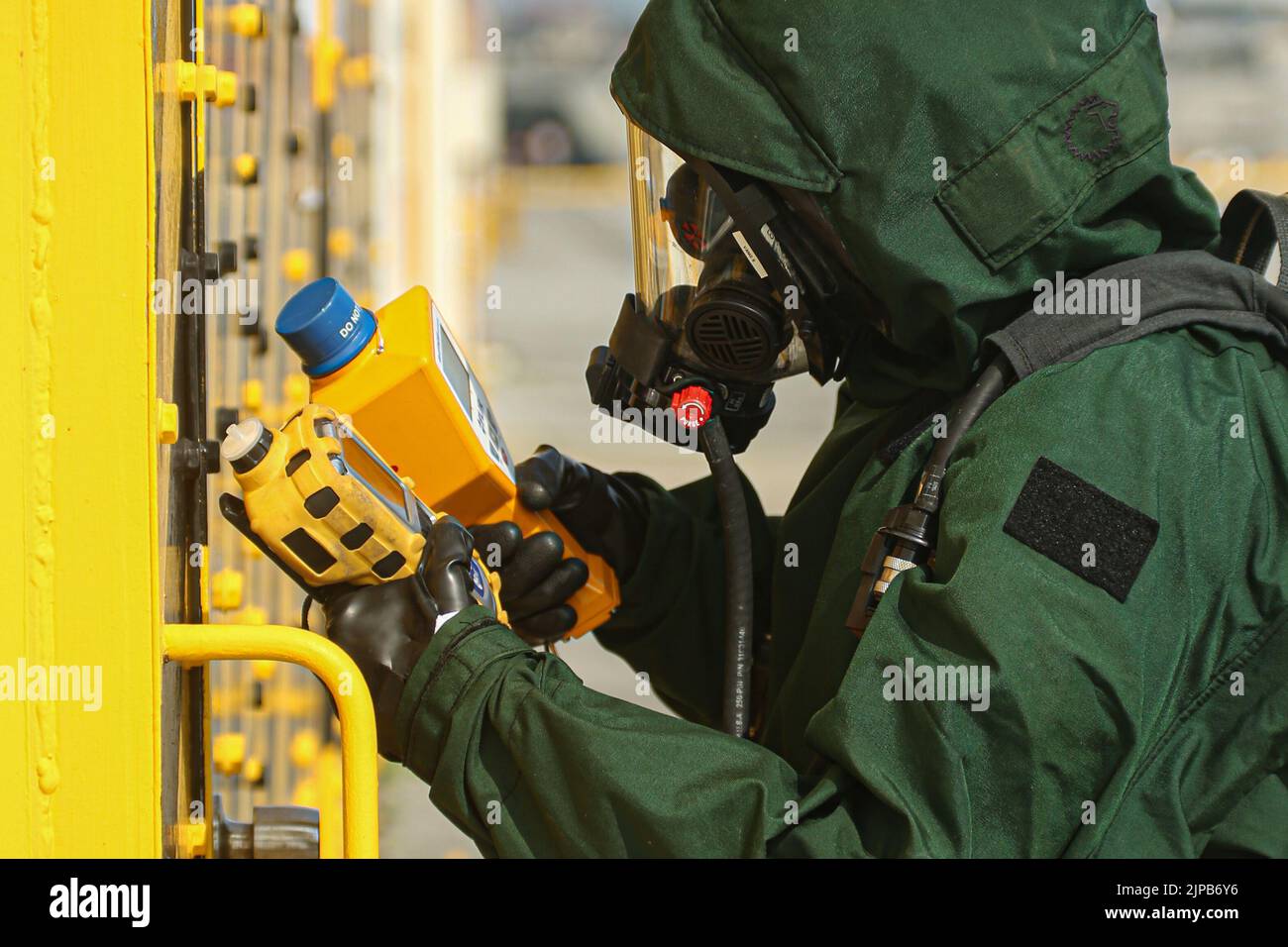 Naha Military Port, Japan. 11th Aug, 2022. U.S. Marine Corps Lance Cpl. Randy Negrillo, a chemical, biological, radiological, and nuclear defense specialist with Marine Wing Headquarters Squadron 1, 1st Marine Aircraft Wing, uses Identifier U and a MultiRAE portable chemical detector to scan for hazardous material during exercise Toxic Bayou at Naha Military Port, Okinawa, Japan, August.11, 2022. The Marines conducted exercise Toxic Bayou to refine their skills in Counter Weapons of Mass Destruction operations across unique and challenging environments. 3rd MLG, based out of Okinawa, Japan Stock Photohttps://www.alamy.com/image-license-details/?v=1https://www.alamy.com/naha-military-port-japan-11th-aug-2022-us-marine-corps-lance-cpl-randy-negrillo-a-chemical-biological-radiological-and-nuclear-defense-specialist-with-marine-wing-headquarters-squadron-1-1st-marine-aircraft-wing-uses-identifier-u-and-a-multirae-portable-chemical-detector-to-scan-for-hazardous-material-during-exercise-toxic-bayou-at-naha-military-port-okinawa-japan-august11-2022-the-marines-conducted-exercise-toxic-bayou-to-refine-their-skills-in-counter-weapons-of-mass-destruction-operations-across-unique-and-challenging-environments-3rd-mlg-based-out-of-okinawa-japan-image478449306.html
Naha Military Port, Japan. 11th Aug, 2022. U.S. Marine Corps Lance Cpl. Randy Negrillo, a chemical, biological, radiological, and nuclear defense specialist with Marine Wing Headquarters Squadron 1, 1st Marine Aircraft Wing, uses Identifier U and a MultiRAE portable chemical detector to scan for hazardous material during exercise Toxic Bayou at Naha Military Port, Okinawa, Japan, August.11, 2022. The Marines conducted exercise Toxic Bayou to refine their skills in Counter Weapons of Mass Destruction operations across unique and challenging environments. 3rd MLG, based out of Okinawa, Japan Stock Photohttps://www.alamy.com/image-license-details/?v=1https://www.alamy.com/naha-military-port-japan-11th-aug-2022-us-marine-corps-lance-cpl-randy-negrillo-a-chemical-biological-radiological-and-nuclear-defense-specialist-with-marine-wing-headquarters-squadron-1-1st-marine-aircraft-wing-uses-identifier-u-and-a-multirae-portable-chemical-detector-to-scan-for-hazardous-material-during-exercise-toxic-bayou-at-naha-military-port-okinawa-japan-august11-2022-the-marines-conducted-exercise-toxic-bayou-to-refine-their-skills-in-counter-weapons-of-mass-destruction-operations-across-unique-and-challenging-environments-3rd-mlg-based-out-of-okinawa-japan-image478449306.htmlRM2JPB6Y6–Naha Military Port, Japan. 11th Aug, 2022. U.S. Marine Corps Lance Cpl. Randy Negrillo, a chemical, biological, radiological, and nuclear defense specialist with Marine Wing Headquarters Squadron 1, 1st Marine Aircraft Wing, uses Identifier U and a MultiRAE portable chemical detector to scan for hazardous material during exercise Toxic Bayou at Naha Military Port, Okinawa, Japan, August.11, 2022. The Marines conducted exercise Toxic Bayou to refine their skills in Counter Weapons of Mass Destruction operations across unique and challenging environments. 3rd MLG, based out of Okinawa, Japan
 CAMP LEMONNIER, Djibouti (Sept. 21, 2013) Marine Corps Cpl. Cody Kisthart, the respiratory protection noncommissioned officer for the chemical, biological, radiological and nuclear (CBRN) defense team assigned to 26th Marine Expeditionary Unit (MEU), drag Stock Photohttps://www.alamy.com/image-license-details/?v=1https://www.alamy.com/camp-lemonnier-djibouti-sept-21-2013-marine-corps-cpl-cody-kisthart-image60831943.html
CAMP LEMONNIER, Djibouti (Sept. 21, 2013) Marine Corps Cpl. Cody Kisthart, the respiratory protection noncommissioned officer for the chemical, biological, radiological and nuclear (CBRN) defense team assigned to 26th Marine Expeditionary Unit (MEU), drag Stock Photohttps://www.alamy.com/image-license-details/?v=1https://www.alamy.com/camp-lemonnier-djibouti-sept-21-2013-marine-corps-cpl-cody-kisthart-image60831943.htmlRMDEY3NB–CAMP LEMONNIER, Djibouti (Sept. 21, 2013) Marine Corps Cpl. Cody Kisthart, the respiratory protection noncommissioned officer for the chemical, biological, radiological and nuclear (CBRN) defense team assigned to 26th Marine Expeditionary Unit (MEU), drag
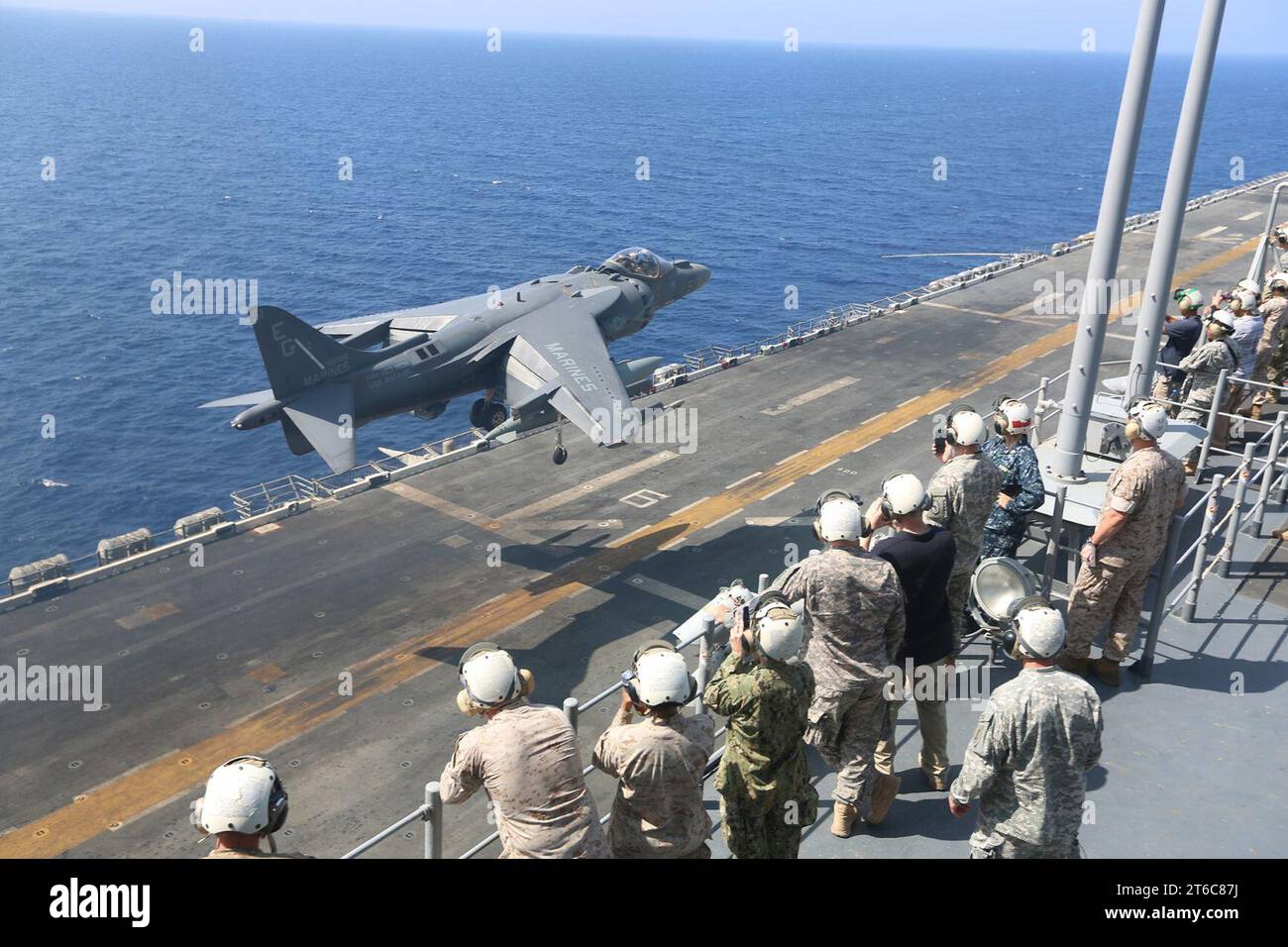 USS BATAAN (LHD 5) 140501 Stock Photohttps://www.alamy.com/image-license-details/?v=1https://www.alamy.com/uss-bataan-lhd-5-140501-image571899990.html
USS BATAAN (LHD 5) 140501 Stock Photohttps://www.alamy.com/image-license-details/?v=1https://www.alamy.com/uss-bataan-lhd-5-140501-image571899990.htmlRM2T6C87J–USS BATAAN (LHD 5) 140501
 AirBoss gas mask system - USA Stock Photohttps://www.alamy.com/image-license-details/?v=1https://www.alamy.com/stock-photo-airboss-gas-mask-system-usa-88521477.html
AirBoss gas mask system - USA Stock Photohttps://www.alamy.com/image-license-details/?v=1https://www.alamy.com/stock-photo-airboss-gas-mask-system-usa-88521477.htmlRMF40E19–AirBoss gas mask system - USA
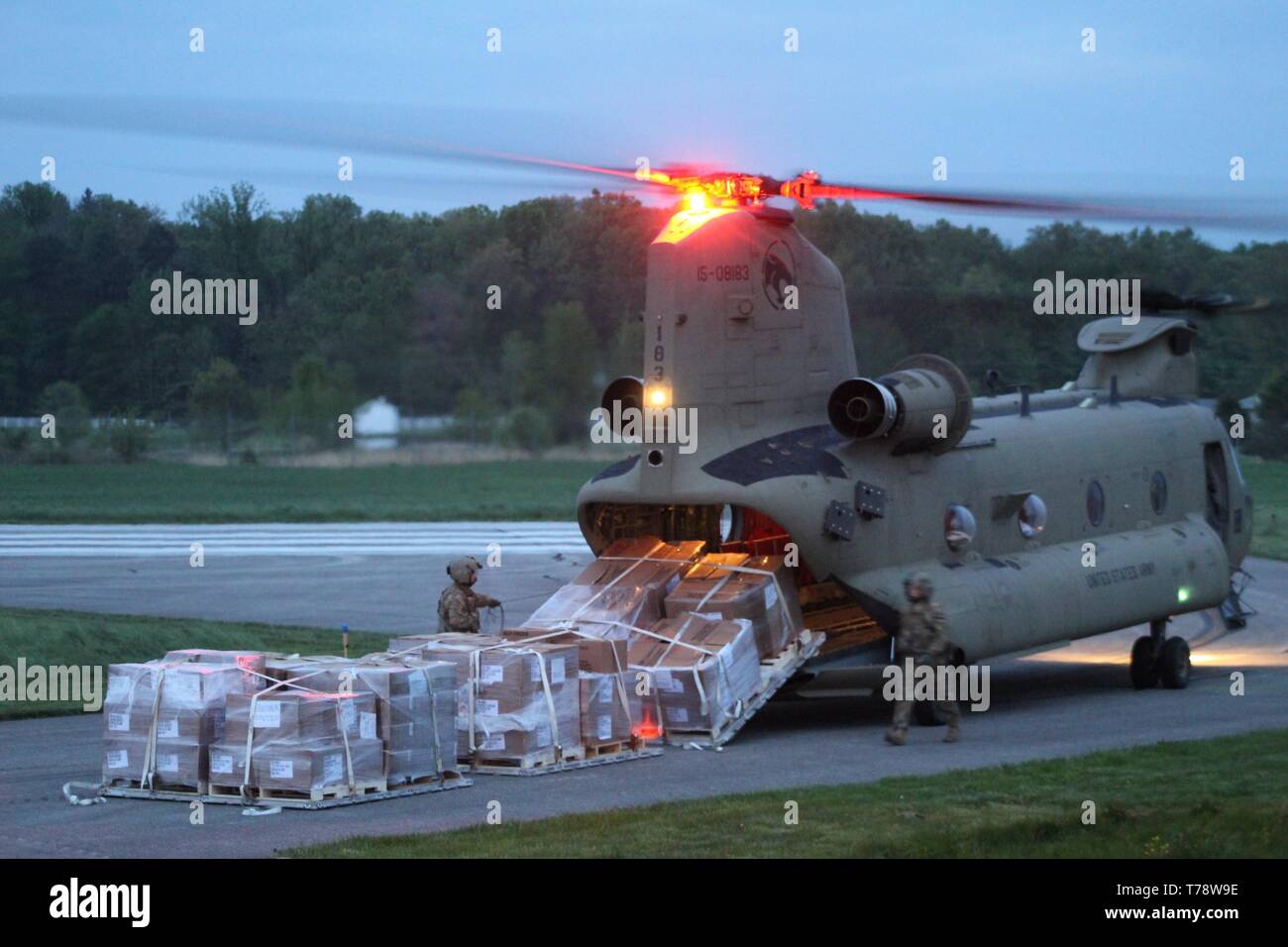 Soldiers in Task Force Aviation, Joint Task Force Civil Support (JTFCS), unload a Chinook to resupply Task Force Operations as part of Exercise Guardian Response, near North Vernon, Ind., May 3, 2019. When directed, JTFCS provides command and control of the 5,200-person Defense Chemical Biological Radiological Nuclear (CBRN) Response Force (DCRF) during a catastrophic crisis in support of civil authorities and the lead federal agency. Vibrant Response/Guardian Response is an annual, combined Command Post Exercise and Field Training Exercise which validates the ability of the DCRF forces to con Stock Photohttps://www.alamy.com/image-license-details/?v=1https://www.alamy.com/soldiers-in-task-force-aviation-joint-task-force-civil-support-jtfcs-unload-a-chinook-to-resupply-task-force-operations-as-part-of-exercise-guardian-response-near-north-vernon-ind-may-3-2019-when-directed-jtfcs-provides-command-and-control-of-the-5200-person-defense-chemical-biological-radiological-nuclear-cbrn-response-force-dcrf-during-a-catastrophic-crisis-in-support-of-civil-authorities-and-the-lead-federal-agency-vibrant-responseguardian-response-is-an-annual-combined-command-post-exercise-and-field-training-exercise-which-validates-the-ability-of-the-dcrf-forces-to-con-image245443226.html
Soldiers in Task Force Aviation, Joint Task Force Civil Support (JTFCS), unload a Chinook to resupply Task Force Operations as part of Exercise Guardian Response, near North Vernon, Ind., May 3, 2019. When directed, JTFCS provides command and control of the 5,200-person Defense Chemical Biological Radiological Nuclear (CBRN) Response Force (DCRF) during a catastrophic crisis in support of civil authorities and the lead federal agency. Vibrant Response/Guardian Response is an annual, combined Command Post Exercise and Field Training Exercise which validates the ability of the DCRF forces to con Stock Photohttps://www.alamy.com/image-license-details/?v=1https://www.alamy.com/soldiers-in-task-force-aviation-joint-task-force-civil-support-jtfcs-unload-a-chinook-to-resupply-task-force-operations-as-part-of-exercise-guardian-response-near-north-vernon-ind-may-3-2019-when-directed-jtfcs-provides-command-and-control-of-the-5200-person-defense-chemical-biological-radiological-nuclear-cbrn-response-force-dcrf-during-a-catastrophic-crisis-in-support-of-civil-authorities-and-the-lead-federal-agency-vibrant-responseguardian-response-is-an-annual-combined-command-post-exercise-and-field-training-exercise-which-validates-the-ability-of-the-dcrf-forces-to-con-image245443226.htmlRMT78W9E–Soldiers in Task Force Aviation, Joint Task Force Civil Support (JTFCS), unload a Chinook to resupply Task Force Operations as part of Exercise Guardian Response, near North Vernon, Ind., May 3, 2019. When directed, JTFCS provides command and control of the 5,200-person Defense Chemical Biological Radiological Nuclear (CBRN) Response Force (DCRF) during a catastrophic crisis in support of civil authorities and the lead federal agency. Vibrant Response/Guardian Response is an annual, combined Command Post Exercise and Field Training Exercise which validates the ability of the DCRF forces to con
 Commanding General Brig. Gen. Brian Cavanaugh, of 1st Marine Aircraft Wing (MAW), reviews Chemical, Biological, Radiological, Nuclear Defense (CBRN) capabilities during a visit at MCAS Futenma, Okinawa, Japan, June 28, 2021. Cavanaugh visited CBRN to gain an improved understanding of their mission and how to effectively employ the Marines if required. Stock Photohttps://www.alamy.com/image-license-details/?v=1https://www.alamy.com/commanding-general-brig-gen-brian-cavanaugh-of-1st-marine-aircraft-wing-maw-reviews-chemical-biological-radiological-nuclear-defense-cbrn-capabilities-during-a-visit-at-mcas-futenma-okinawa-japan-june-28-2021-cavanaugh-visited-cbrn-to-gain-an-improved-understanding-of-their-mission-and-how-to-effectively-employ-the-marines-if-required-image442473515.html
Commanding General Brig. Gen. Brian Cavanaugh, of 1st Marine Aircraft Wing (MAW), reviews Chemical, Biological, Radiological, Nuclear Defense (CBRN) capabilities during a visit at MCAS Futenma, Okinawa, Japan, June 28, 2021. Cavanaugh visited CBRN to gain an improved understanding of their mission and how to effectively employ the Marines if required. Stock Photohttps://www.alamy.com/image-license-details/?v=1https://www.alamy.com/commanding-general-brig-gen-brian-cavanaugh-of-1st-marine-aircraft-wing-maw-reviews-chemical-biological-radiological-nuclear-defense-cbrn-capabilities-during-a-visit-at-mcas-futenma-okinawa-japan-june-28-2021-cavanaugh-visited-cbrn-to-gain-an-improved-understanding-of-their-mission-and-how-to-effectively-employ-the-marines-if-required-image442473515.htmlRM2GKTBDF–Commanding General Brig. Gen. Brian Cavanaugh, of 1st Marine Aircraft Wing (MAW), reviews Chemical, Biological, Radiological, Nuclear Defense (CBRN) capabilities during a visit at MCAS Futenma, Okinawa, Japan, June 28, 2021. Cavanaugh visited CBRN to gain an improved understanding of their mission and how to effectively employ the Marines if required.
 U.S. Marine Corps Sgt. Lena Huynh, an explosive and ordnance disposal technician with Marine Wing Support Squadron (MWSS) 172, conducts a substance identifier procedure on a simulated unknown substance at Marine Corps Air Station Futenma, Okinawa, Japan, Feb. 24, 2022. Chemical, Biological, Radiological, and Nuclear Defense (CBRN) is responsible for conducting training and reconnaissance, chemical detection identification, biological agent collection and sampling, decontamination of personnel, equipment, and casualties and individual protective measures in first aid for unit personnel. Stock Photohttps://www.alamy.com/image-license-details/?v=1https://www.alamy.com/us-marine-corps-sgt-lena-huynh-an-explosive-and-ordnance-disposal-technician-with-marine-wing-support-squadron-mwss-172-conducts-a-substance-identifier-procedure-on-a-simulated-unknown-substance-at-marine-corps-air-station-futenma-okinawa-japan-feb-24-2022-chemical-biological-radiological-and-nuclear-defense-cbrn-is-responsible-for-conducting-training-and-reconnaissance-chemical-detection-identification-biological-agent-collection-and-sampling-decontamination-of-personnel-equipment-and-casualties-and-individual-protective-measures-in-first-aid-for-unit-personnel-image502433169.html
U.S. Marine Corps Sgt. Lena Huynh, an explosive and ordnance disposal technician with Marine Wing Support Squadron (MWSS) 172, conducts a substance identifier procedure on a simulated unknown substance at Marine Corps Air Station Futenma, Okinawa, Japan, Feb. 24, 2022. Chemical, Biological, Radiological, and Nuclear Defense (CBRN) is responsible for conducting training and reconnaissance, chemical detection identification, biological agent collection and sampling, decontamination of personnel, equipment, and casualties and individual protective measures in first aid for unit personnel. Stock Photohttps://www.alamy.com/image-license-details/?v=1https://www.alamy.com/us-marine-corps-sgt-lena-huynh-an-explosive-and-ordnance-disposal-technician-with-marine-wing-support-squadron-mwss-172-conducts-a-substance-identifier-procedure-on-a-simulated-unknown-substance-at-marine-corps-air-station-futenma-okinawa-japan-feb-24-2022-chemical-biological-radiological-and-nuclear-defense-cbrn-is-responsible-for-conducting-training-and-reconnaissance-chemical-detection-identification-biological-agent-collection-and-sampling-decontamination-of-personnel-equipment-and-casualties-and-individual-protective-measures-in-first-aid-for-unit-personnel-image502433169.htmlRM2M5BPHN–U.S. Marine Corps Sgt. Lena Huynh, an explosive and ordnance disposal technician with Marine Wing Support Squadron (MWSS) 172, conducts a substance identifier procedure on a simulated unknown substance at Marine Corps Air Station Futenma, Okinawa, Japan, Feb. 24, 2022. Chemical, Biological, Radiological, and Nuclear Defense (CBRN) is responsible for conducting training and reconnaissance, chemical detection identification, biological agent collection and sampling, decontamination of personnel, equipment, and casualties and individual protective measures in first aid for unit personnel.
 November 6, 2023 - Barksdale Air Force Base, Louisiana, USA - Master Sgt. Dominic Garcia, the 2nd Civil Engineer Squadron emergency management flight chief, observes Atom the robot dog while he coaches his teammates as they remote control the robotic canine Nov. 6, 2023 at Barksdale Air Force Base, La. Garcia and his team test the range and capabilities of Atom in different environments. (Credit Image: © William Pugh)/U.S. Air Force/ZUMA Press Wire) EDITORIAL USAGE ONLY! Not for Commercial USAGE! Stock Photohttps://www.alamy.com/image-license-details/?v=1https://www.alamy.com/november-6-2023-barksdale-air-force-base-louisiana-usa-master-sgt-dominic-garcia-the-2nd-civil-engineer-squadron-emergency-management-flight-chief-observes-atom-the-robot-dog-while-he-coaches-his-teammates-as-they-remote-control-the-robotic-canine-nov-6-2023-at-barksdale-air-force-base-la-garcia-and-his-team-test-the-range-and-capabilities-of-atom-in-different-environments-credit-image-william-pughus-air-forcezuma-press-wire-editorial-usage-only!-not-for-commercial-usage!-image574299026.html
November 6, 2023 - Barksdale Air Force Base, Louisiana, USA - Master Sgt. Dominic Garcia, the 2nd Civil Engineer Squadron emergency management flight chief, observes Atom the robot dog while he coaches his teammates as they remote control the robotic canine Nov. 6, 2023 at Barksdale Air Force Base, La. Garcia and his team test the range and capabilities of Atom in different environments. (Credit Image: © William Pugh)/U.S. Air Force/ZUMA Press Wire) EDITORIAL USAGE ONLY! Not for Commercial USAGE! Stock Photohttps://www.alamy.com/image-license-details/?v=1https://www.alamy.com/november-6-2023-barksdale-air-force-base-louisiana-usa-master-sgt-dominic-garcia-the-2nd-civil-engineer-squadron-emergency-management-flight-chief-observes-atom-the-robot-dog-while-he-coaches-his-teammates-as-they-remote-control-the-robotic-canine-nov-6-2023-at-barksdale-air-force-base-la-garcia-and-his-team-test-the-range-and-capabilities-of-atom-in-different-environments-credit-image-william-pughus-air-forcezuma-press-wire-editorial-usage-only!-not-for-commercial-usage!-image574299026.htmlRM2TA9G7E–November 6, 2023 - Barksdale Air Force Base, Louisiana, USA - Master Sgt. Dominic Garcia, the 2nd Civil Engineer Squadron emergency management flight chief, observes Atom the robot dog while he coaches his teammates as they remote control the robotic canine Nov. 6, 2023 at Barksdale Air Force Base, La. Garcia and his team test the range and capabilities of Atom in different environments. (Credit Image: © William Pugh)/U.S. Air Force/ZUMA Press Wire) EDITORIAL USAGE ONLY! Not for Commercial USAGE!
 Staff Sgt. Nicholas G. Bibby, chemical, biological, radiological and nuclear chief, Marine Aircraft Group 39, prepares to release CS gas over a burner during the 15th Marine Expeditionary Unit’s CBRN defense mask confidence training at Camp Margarita aboa Stock Photohttps://www.alamy.com/image-license-details/?v=1https://www.alamy.com/staff-sgt-nicholas-g-bibby-chemical-biological-radiological-and-nuclear-image60820357.html
Staff Sgt. Nicholas G. Bibby, chemical, biological, radiological and nuclear chief, Marine Aircraft Group 39, prepares to release CS gas over a burner during the 15th Marine Expeditionary Unit’s CBRN defense mask confidence training at Camp Margarita aboa Stock Photohttps://www.alamy.com/image-license-details/?v=1https://www.alamy.com/staff-sgt-nicholas-g-bibby-chemical-biological-radiological-and-nuclear-image60820357.htmlRMDEXGYH–Staff Sgt. Nicholas G. Bibby, chemical, biological, radiological and nuclear chief, Marine Aircraft Group 39, prepares to release CS gas over a burner during the 15th Marine Expeditionary Unit’s CBRN defense mask confidence training at Camp Margarita aboa
 U.S. Marines stationed at Marine Corps Air Station (MCAS) Yuma, conduct their annual Chemical, Biological, Radiological and Nuclear Defense (CBRN) Training at the MCAS Yuma Gas Chamber July 26, 2018. The gas chamber is a controlled environment in which a non-lethal gas is released. This trains Marines to have confidence in their gear and become familiar with the effects of gas. Stock Photohttps://www.alamy.com/image-license-details/?v=1https://www.alamy.com/us-marines-stationed-at-marine-corps-air-station-mcas-yuma-conduct-their-annual-chemical-biological-radiological-and-nuclear-defense-cbrn-training-at-the-mcas-yuma-gas-chamber-july-26-2018-the-gas-chamber-is-a-controlled-environment-in-which-a-non-lethal-gas-is-released-this-trains-marines-to-have-confidence-in-their-gear-and-become-familiar-with-the-effects-of-gas-image218527879.html
U.S. Marines stationed at Marine Corps Air Station (MCAS) Yuma, conduct their annual Chemical, Biological, Radiological and Nuclear Defense (CBRN) Training at the MCAS Yuma Gas Chamber July 26, 2018. The gas chamber is a controlled environment in which a non-lethal gas is released. This trains Marines to have confidence in their gear and become familiar with the effects of gas. Stock Photohttps://www.alamy.com/image-license-details/?v=1https://www.alamy.com/us-marines-stationed-at-marine-corps-air-station-mcas-yuma-conduct-their-annual-chemical-biological-radiological-and-nuclear-defense-cbrn-training-at-the-mcas-yuma-gas-chamber-july-26-2018-the-gas-chamber-is-a-controlled-environment-in-which-a-non-lethal-gas-is-released-this-trains-marines-to-have-confidence-in-their-gear-and-become-familiar-with-the-effects-of-gas-image218527879.htmlRMPKEPF3–U.S. Marines stationed at Marine Corps Air Station (MCAS) Yuma, conduct their annual Chemical, Biological, Radiological and Nuclear Defense (CBRN) Training at the MCAS Yuma Gas Chamber July 26, 2018. The gas chamber is a controlled environment in which a non-lethal gas is released. This trains Marines to have confidence in their gear and become familiar with the effects of gas.
 AirBoss gas mask system Stock Photohttps://www.alamy.com/image-license-details/?v=1https://www.alamy.com/stock-photo-airboss-gas-mask-system-88521720.html
AirBoss gas mask system Stock Photohttps://www.alamy.com/image-license-details/?v=1https://www.alamy.com/stock-photo-airboss-gas-mask-system-88521720.htmlRMF40EA0–AirBoss gas mask system
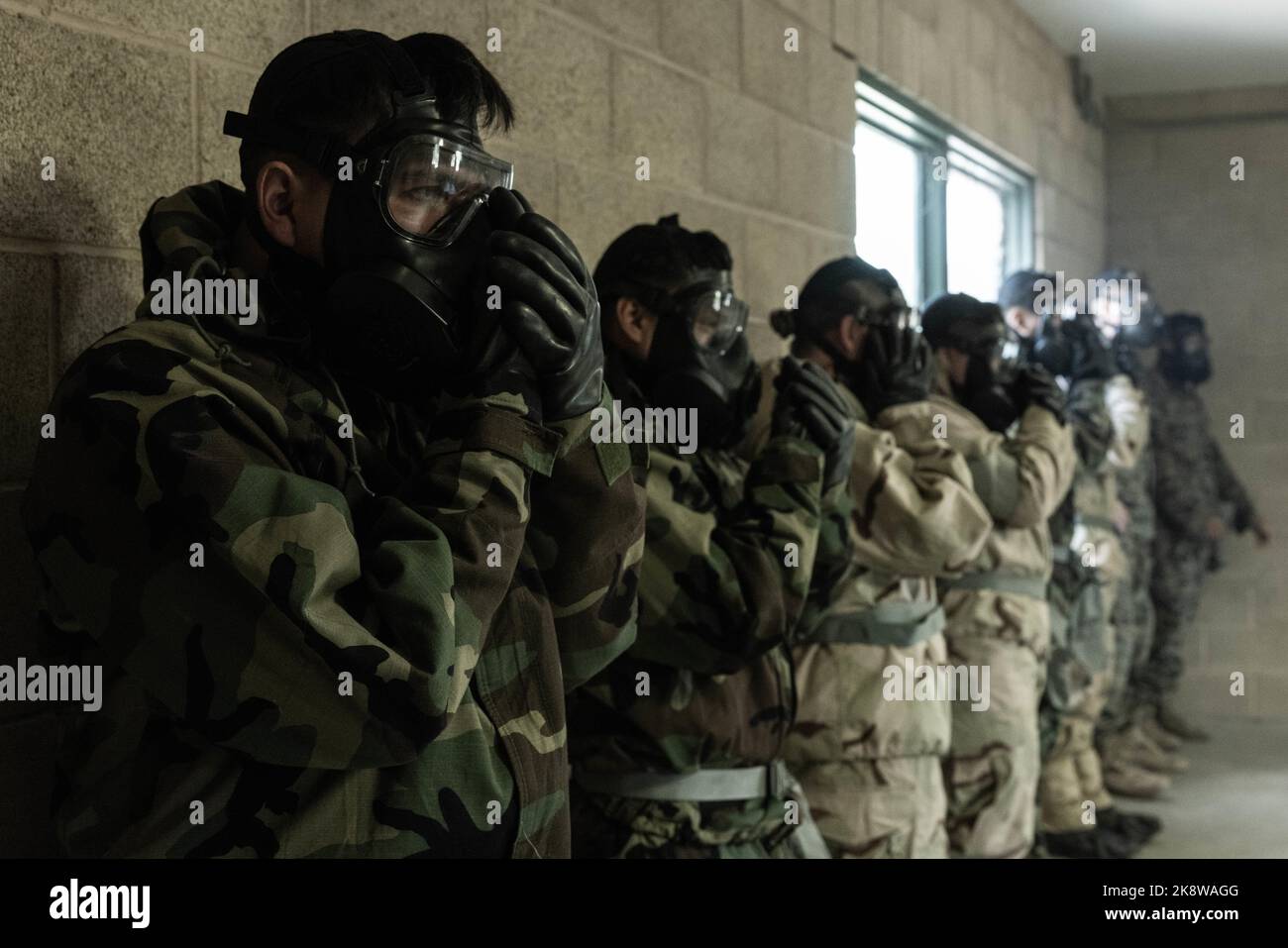 U.S. Marines with Headquarters Battalion, 1st Marine Division, clear their masks of chlorobenzalmalononitrile gas, commonly known as CS gas, during chemical, biological, radiological and nuclear defense training at Marine Corps Base Camp Pendleton, California, Oct. 20, 2022. CBRN training is conducted annually to ensure Marines know how to use their protective gear in the event of a chemical attack. (U.S. Marine Corps photo by Lance Cpl. Kayla Halloran) Stock Photohttps://www.alamy.com/image-license-details/?v=1https://www.alamy.com/us-marines-with-headquarters-battalion-1st-marine-division-clear-their-masks-of-chlorobenzalmalononitrile-gas-commonly-known-as-cs-gas-during-chemical-biological-radiological-and-nuclear-defense-training-at-marine-corps-base-camp-pendleton-california-oct-20-2022-cbrn-training-is-conducted-annually-to-ensure-marines-know-how-to-use-their-protective-gear-in-the-event-of-a-chemical-attack-us-marine-corps-photo-by-lance-cpl-kayla-halloran-image487364656.html
U.S. Marines with Headquarters Battalion, 1st Marine Division, clear their masks of chlorobenzalmalononitrile gas, commonly known as CS gas, during chemical, biological, radiological and nuclear defense training at Marine Corps Base Camp Pendleton, California, Oct. 20, 2022. CBRN training is conducted annually to ensure Marines know how to use their protective gear in the event of a chemical attack. (U.S. Marine Corps photo by Lance Cpl. Kayla Halloran) Stock Photohttps://www.alamy.com/image-license-details/?v=1https://www.alamy.com/us-marines-with-headquarters-battalion-1st-marine-division-clear-their-masks-of-chlorobenzalmalononitrile-gas-commonly-known-as-cs-gas-during-chemical-biological-radiological-and-nuclear-defense-training-at-marine-corps-base-camp-pendleton-california-oct-20-2022-cbrn-training-is-conducted-annually-to-ensure-marines-know-how-to-use-their-protective-gear-in-the-event-of-a-chemical-attack-us-marine-corps-photo-by-lance-cpl-kayla-halloran-image487364656.htmlRM2K8WAGG–U.S. Marines with Headquarters Battalion, 1st Marine Division, clear their masks of chlorobenzalmalononitrile gas, commonly known as CS gas, during chemical, biological, radiological and nuclear defense training at Marine Corps Base Camp Pendleton, California, Oct. 20, 2022. CBRN training is conducted annually to ensure Marines know how to use their protective gear in the event of a chemical attack. (U.S. Marine Corps photo by Lance Cpl. Kayla Halloran)
 Commanding General Brig. Gen. Brian Cavanaugh, of 1st Marine Aircraft Wing (MAW), reviews Chemical, Biological, Radiological, Nuclear Defense (CBRN) capabilities during a visit at MCAS Futenma, Okinawa, Japan, June 28, 2021. Cavanaugh visited CBRN to gain an improved understanding of their mission and how to effectively employ the Marines if required. Stock Photohttps://www.alamy.com/image-license-details/?v=1https://www.alamy.com/commanding-general-brig-gen-brian-cavanaugh-of-1st-marine-aircraft-wing-maw-reviews-chemical-biological-radiological-nuclear-defense-cbrn-capabilities-during-a-visit-at-mcas-futenma-okinawa-japan-june-28-2021-cavanaugh-visited-cbrn-to-gain-an-improved-understanding-of-their-mission-and-how-to-effectively-employ-the-marines-if-required-image442473497.html
Commanding General Brig. Gen. Brian Cavanaugh, of 1st Marine Aircraft Wing (MAW), reviews Chemical, Biological, Radiological, Nuclear Defense (CBRN) capabilities during a visit at MCAS Futenma, Okinawa, Japan, June 28, 2021. Cavanaugh visited CBRN to gain an improved understanding of their mission and how to effectively employ the Marines if required. Stock Photohttps://www.alamy.com/image-license-details/?v=1https://www.alamy.com/commanding-general-brig-gen-brian-cavanaugh-of-1st-marine-aircraft-wing-maw-reviews-chemical-biological-radiological-nuclear-defense-cbrn-capabilities-during-a-visit-at-mcas-futenma-okinawa-japan-june-28-2021-cavanaugh-visited-cbrn-to-gain-an-improved-understanding-of-their-mission-and-how-to-effectively-employ-the-marines-if-required-image442473497.htmlRM2GKTBCW–Commanding General Brig. Gen. Brian Cavanaugh, of 1st Marine Aircraft Wing (MAW), reviews Chemical, Biological, Radiological, Nuclear Defense (CBRN) capabilities during a visit at MCAS Futenma, Okinawa, Japan, June 28, 2021. Cavanaugh visited CBRN to gain an improved understanding of their mission and how to effectively employ the Marines if required.
 U.S. Marine Corps Staff Sgt. Demetri Duey, left, and Sgt. Lena Huynh, right, both explosive ordnance disposal technicians assigned to Marine Wing Support Squadron (MWSS) 172 conduct scenario-based training at Marine Corps Air Station Futenma, Okinawa, Japan, Feb. 24, 2022. Chemical, Biological, Radiological, and Nuclear Defense (CBRN) is responsible for conducting training and reconnaissance, chemical detection identification, biological agent collection and sampling, decontamination of personnel, equipment, and casualties and individual protective measures in first aid for unit personnel. Stock Photohttps://www.alamy.com/image-license-details/?v=1https://www.alamy.com/us-marine-corps-staff-sgt-demetri-duey-left-and-sgt-lena-huynh-right-both-explosive-ordnance-disposal-technicians-assigned-to-marine-wing-support-squadron-mwss-172-conduct-scenario-based-training-at-marine-corps-air-station-futenma-okinawa-japan-feb-24-2022-chemical-biological-radiological-and-nuclear-defense-cbrn-is-responsible-for-conducting-training-and-reconnaissance-chemical-detection-identification-biological-agent-collection-and-sampling-decontamination-of-personnel-equipment-and-casualties-and-individual-protective-measures-in-first-aid-for-unit-personnel-image502433170.html
U.S. Marine Corps Staff Sgt. Demetri Duey, left, and Sgt. Lena Huynh, right, both explosive ordnance disposal technicians assigned to Marine Wing Support Squadron (MWSS) 172 conduct scenario-based training at Marine Corps Air Station Futenma, Okinawa, Japan, Feb. 24, 2022. Chemical, Biological, Radiological, and Nuclear Defense (CBRN) is responsible for conducting training and reconnaissance, chemical detection identification, biological agent collection and sampling, decontamination of personnel, equipment, and casualties and individual protective measures in first aid for unit personnel. Stock Photohttps://www.alamy.com/image-license-details/?v=1https://www.alamy.com/us-marine-corps-staff-sgt-demetri-duey-left-and-sgt-lena-huynh-right-both-explosive-ordnance-disposal-technicians-assigned-to-marine-wing-support-squadron-mwss-172-conduct-scenario-based-training-at-marine-corps-air-station-futenma-okinawa-japan-feb-24-2022-chemical-biological-radiological-and-nuclear-defense-cbrn-is-responsible-for-conducting-training-and-reconnaissance-chemical-detection-identification-biological-agent-collection-and-sampling-decontamination-of-personnel-equipment-and-casualties-and-individual-protective-measures-in-first-aid-for-unit-personnel-image502433170.htmlRM2M5BPHP–U.S. Marine Corps Staff Sgt. Demetri Duey, left, and Sgt. Lena Huynh, right, both explosive ordnance disposal technicians assigned to Marine Wing Support Squadron (MWSS) 172 conduct scenario-based training at Marine Corps Air Station Futenma, Okinawa, Japan, Feb. 24, 2022. Chemical, Biological, Radiological, and Nuclear Defense (CBRN) is responsible for conducting training and reconnaissance, chemical detection identification, biological agent collection and sampling, decontamination of personnel, equipment, and casualties and individual protective measures in first aid for unit personnel.
 November 6, 2023 - Barksdale Air Force Base, Louisiana, USA - A team from the 2nd Civil Engineer Squadron monitors Atom the robot dog while remote controlling him November. 6, 2023 at Barksdale Air Force Base, La. Master Sgt. Dominic Garcia, the Civil Engineer Squadron emergency management flight chief, started integrating his two robot dogs Atom and Chappie with his new team when he moved to Barksdale earlier this year. (Credit Image: © U.S. Air Force/ZUMA Press Wire) EDITORIAL USAGE ONLY! Not for Commercial USAGE! Stock Photohttps://www.alamy.com/image-license-details/?v=1https://www.alamy.com/november-6-2023-barksdale-air-force-base-louisiana-usa-a-team-from-the-2nd-civil-engineer-squadron-monitors-atom-the-robot-dog-while-remote-controlling-him-november-6-2023-at-barksdale-air-force-base-la-master-sgt-dominic-garcia-the-civil-engineer-squadron-emergency-management-flight-chief-started-integrating-his-two-robot-dogs-atom-and-chappie-with-his-new-team-when-he-moved-to-barksdale-earlier-this-year-credit-image-us-air-forcezuma-press-wire-editorial-usage-only!-not-for-commercial-usage!-image573005314.html
November 6, 2023 - Barksdale Air Force Base, Louisiana, USA - A team from the 2nd Civil Engineer Squadron monitors Atom the robot dog while remote controlling him November. 6, 2023 at Barksdale Air Force Base, La. Master Sgt. Dominic Garcia, the Civil Engineer Squadron emergency management flight chief, started integrating his two robot dogs Atom and Chappie with his new team when he moved to Barksdale earlier this year. (Credit Image: © U.S. Air Force/ZUMA Press Wire) EDITORIAL USAGE ONLY! Not for Commercial USAGE! Stock Photohttps://www.alamy.com/image-license-details/?v=1https://www.alamy.com/november-6-2023-barksdale-air-force-base-louisiana-usa-a-team-from-the-2nd-civil-engineer-squadron-monitors-atom-the-robot-dog-while-remote-controlling-him-november-6-2023-at-barksdale-air-force-base-la-master-sgt-dominic-garcia-the-civil-engineer-squadron-emergency-management-flight-chief-started-integrating-his-two-robot-dogs-atom-and-chappie-with-his-new-team-when-he-moved-to-barksdale-earlier-this-year-credit-image-us-air-forcezuma-press-wire-editorial-usage-only!-not-for-commercial-usage!-image573005314.htmlRM2T86J3E–November 6, 2023 - Barksdale Air Force Base, Louisiana, USA - A team from the 2nd Civil Engineer Squadron monitors Atom the robot dog while remote controlling him November. 6, 2023 at Barksdale Air Force Base, La. Master Sgt. Dominic Garcia, the Civil Engineer Squadron emergency management flight chief, started integrating his two robot dogs Atom and Chappie with his new team when he moved to Barksdale earlier this year. (Credit Image: © U.S. Air Force/ZUMA Press Wire) EDITORIAL USAGE ONLY! Not for Commercial USAGE!
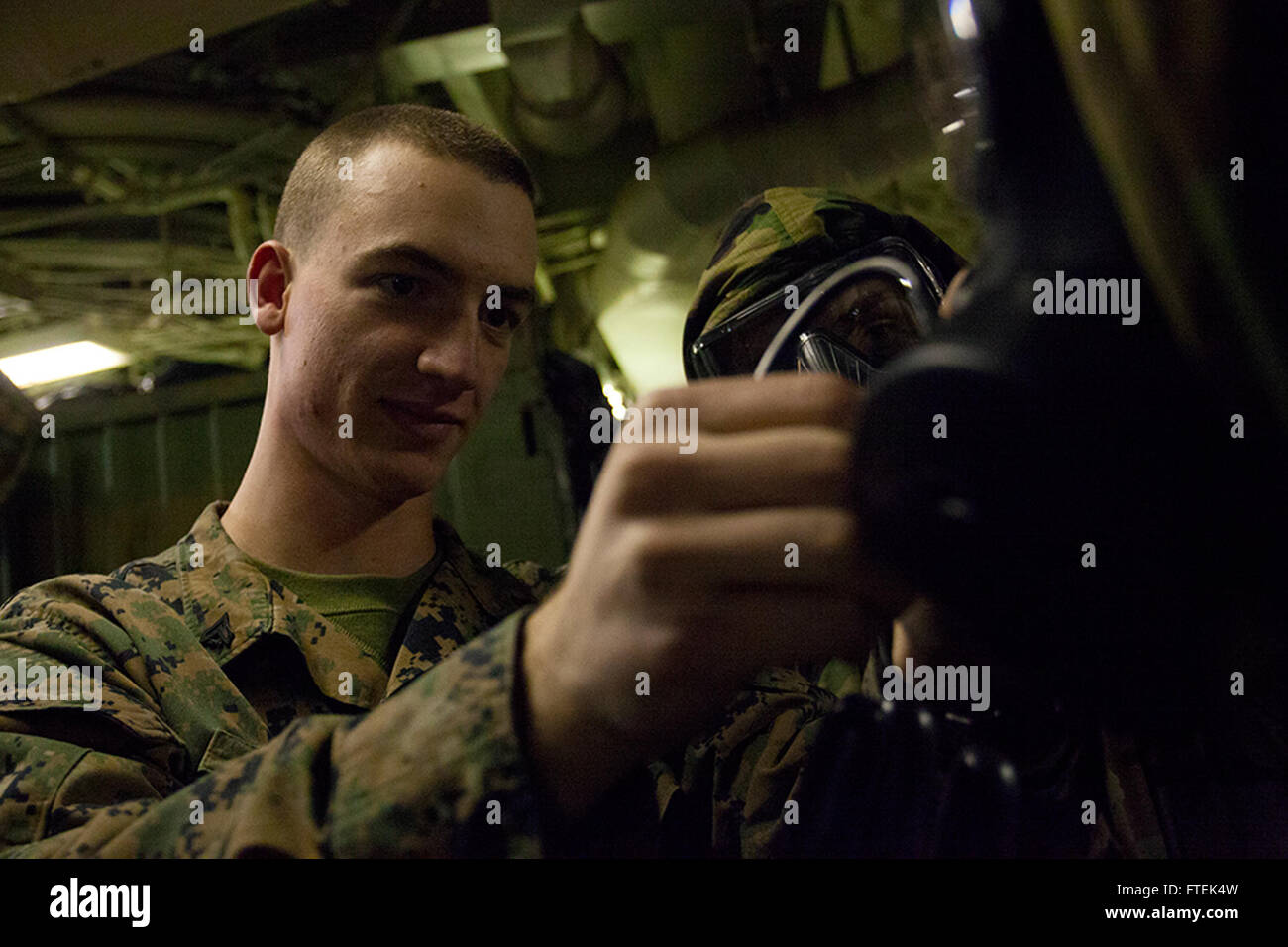 150108-M-QZ288-148 MEDITERRANEAN SEA (Jan. 8, 2015) Cpl. Christopher Waters, a chemical, biological, radiological, and nuclear defense specialist with Headquarters and Service Company, Battalion Landing Team 3rd Battalion, 6th Marine Regiment, 24th Marine Expeditionary Unit, adjusts a student’s M50 joint-service general-purpose gas mask during a mission-oriented protective-posture gear refresher course aboard USS Iwo Jima (LHD 7) Jan. 8, 2015. The 24th MEU and Iwo Jima Amphibious Ready Group are conducting naval operations in the U.S. 6th Fleet area of operations in support of U.S. national se Stock Photohttps://www.alamy.com/image-license-details/?v=1https://www.alamy.com/stock-photo-150108-m-qz288-148-mediterranean-sea-jan-8-2015-cpl-christopher-waters-101125945.html
150108-M-QZ288-148 MEDITERRANEAN SEA (Jan. 8, 2015) Cpl. Christopher Waters, a chemical, biological, radiological, and nuclear defense specialist with Headquarters and Service Company, Battalion Landing Team 3rd Battalion, 6th Marine Regiment, 24th Marine Expeditionary Unit, adjusts a student’s M50 joint-service general-purpose gas mask during a mission-oriented protective-posture gear refresher course aboard USS Iwo Jima (LHD 7) Jan. 8, 2015. The 24th MEU and Iwo Jima Amphibious Ready Group are conducting naval operations in the U.S. 6th Fleet area of operations in support of U.S. national se Stock Photohttps://www.alamy.com/image-license-details/?v=1https://www.alamy.com/stock-photo-150108-m-qz288-148-mediterranean-sea-jan-8-2015-cpl-christopher-waters-101125945.htmlRMFTEK4W–150108-M-QZ288-148 MEDITERRANEAN SEA (Jan. 8, 2015) Cpl. Christopher Waters, a chemical, biological, radiological, and nuclear defense specialist with Headquarters and Service Company, Battalion Landing Team 3rd Battalion, 6th Marine Regiment, 24th Marine Expeditionary Unit, adjusts a student’s M50 joint-service general-purpose gas mask during a mission-oriented protective-posture gear refresher course aboard USS Iwo Jima (LHD 7) Jan. 8, 2015. The 24th MEU and Iwo Jima Amphibious Ready Group are conducting naval operations in the U.S. 6th Fleet area of operations in support of U.S. national se
 U.S. Marines stationed at Marine Corps Air Station (MCAS) Yuma, conduct their annual Chemical, Biological, Radiological and Nuclear Defense (CBRN) Training at the MCAS Yuma Gas Chamber July 26, 2018. The gas chamber is a controlled environment in which a non-lethal gas is released. This trains Marines to have confidence in their gear and become familiar with the effects of gas. Stock Photohttps://www.alamy.com/image-license-details/?v=1https://www.alamy.com/us-marines-stationed-at-marine-corps-air-station-mcas-yuma-conduct-their-annual-chemical-biological-radiological-and-nuclear-defense-cbrn-training-at-the-mcas-yuma-gas-chamber-july-26-2018-the-gas-chamber-is-a-controlled-environment-in-which-a-non-lethal-gas-is-released-this-trains-marines-to-have-confidence-in-their-gear-and-become-familiar-with-the-effects-of-gas-image218527877.html
U.S. Marines stationed at Marine Corps Air Station (MCAS) Yuma, conduct their annual Chemical, Biological, Radiological and Nuclear Defense (CBRN) Training at the MCAS Yuma Gas Chamber July 26, 2018. The gas chamber is a controlled environment in which a non-lethal gas is released. This trains Marines to have confidence in their gear and become familiar with the effects of gas. Stock Photohttps://www.alamy.com/image-license-details/?v=1https://www.alamy.com/us-marines-stationed-at-marine-corps-air-station-mcas-yuma-conduct-their-annual-chemical-biological-radiological-and-nuclear-defense-cbrn-training-at-the-mcas-yuma-gas-chamber-july-26-2018-the-gas-chamber-is-a-controlled-environment-in-which-a-non-lethal-gas-is-released-this-trains-marines-to-have-confidence-in-their-gear-and-become-familiar-with-the-effects-of-gas-image218527877.htmlRMPKEPF1–U.S. Marines stationed at Marine Corps Air Station (MCAS) Yuma, conduct their annual Chemical, Biological, Radiological and Nuclear Defense (CBRN) Training at the MCAS Yuma Gas Chamber July 26, 2018. The gas chamber is a controlled environment in which a non-lethal gas is released. This trains Marines to have confidence in their gear and become familiar with the effects of gas.
 AirBoss gas mask system Stock Photohttps://www.alamy.com/image-license-details/?v=1https://www.alamy.com/stock-photo-airboss-gas-mask-system-88521719.html
AirBoss gas mask system Stock Photohttps://www.alamy.com/image-license-details/?v=1https://www.alamy.com/stock-photo-airboss-gas-mask-system-88521719.htmlRMF40E9Y–AirBoss gas mask system
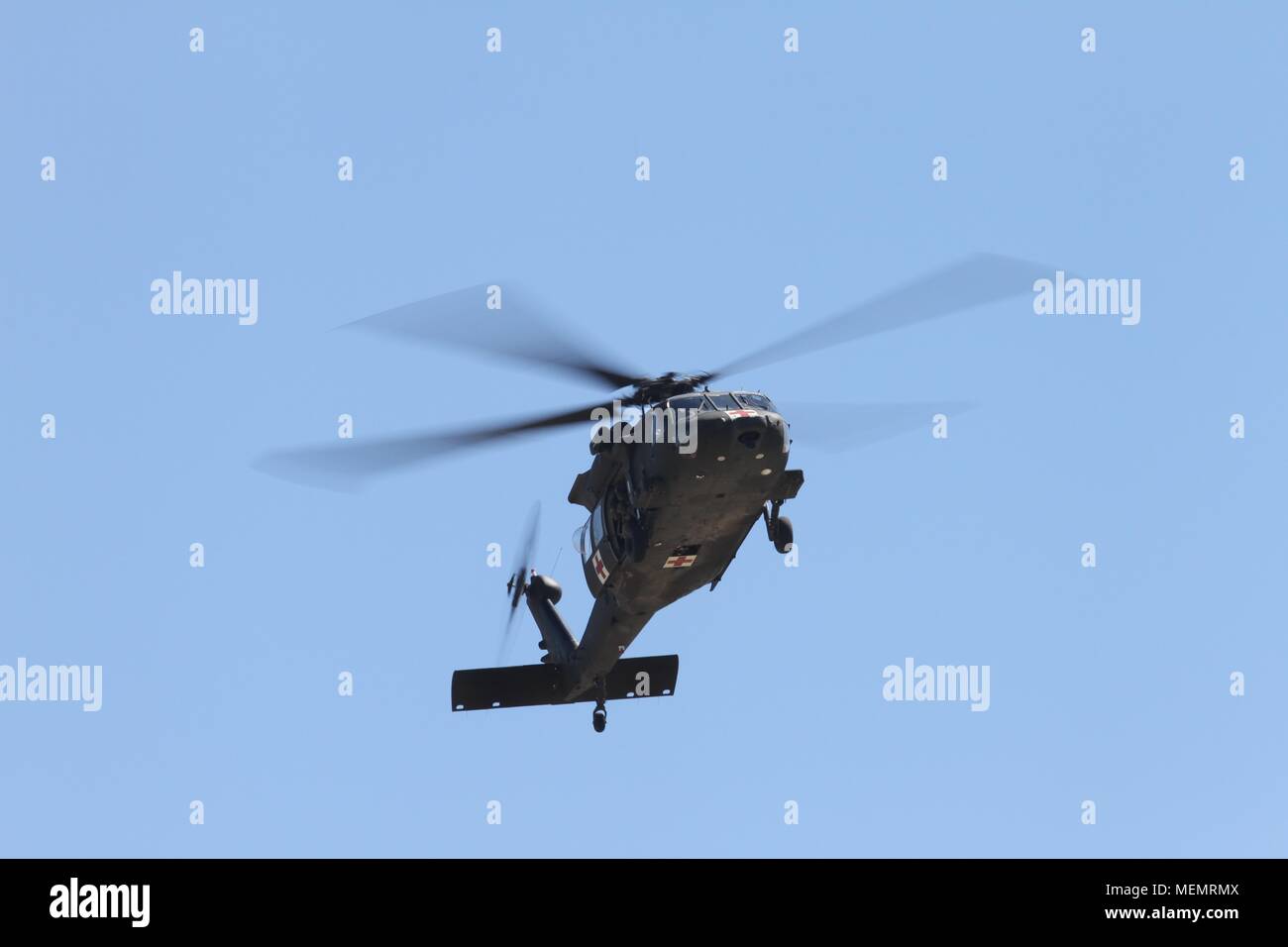 A HH-60M MEDEVAC flown by Soldiers with the 2-501st General Support Aviation Battalion (GSAB), 1st Armored Division, based in Ft. Bliss, Texas, soar above the landing zone during Guardian Response 18 at Muscatatuck Urban Training Center, Ind., April 20, 2018. More than 4,500 Soldiers from across the country are participating in Guardian Response 18, a multi-component training exercise to validate U.S. Army units’ ability to support the Defense Support of Civil Authorities (DSCA) in the event of a Chemical, Biological, Radiological, and Nuclear (CBRN) catastrophe. (U.S. Army Reserve photo by Stock Photohttps://www.alamy.com/image-license-details/?v=1https://www.alamy.com/a-hh-60m-medevac-flown-by-soldiers-with-the-2-501st-general-support-aviation-battalion-gsab-1st-armored-division-based-in-ft-bliss-texas-soar-above-the-landing-zone-during-guardian-response-18-at-muscatatuck-urban-training-center-ind-april-20-2018-more-than-4500-soldiers-from-across-the-country-are-participating-in-guardian-response-18-a-multi-component-training-exercise-to-validate-us-army-units-ability-to-support-the-defense-support-of-civil-authorities-dsca-in-the-event-of-a-chemical-biological-radiological-and-nuclear-cbrn-catastrophe-us-army-reserve-photo-by-image181166522.html
A HH-60M MEDEVAC flown by Soldiers with the 2-501st General Support Aviation Battalion (GSAB), 1st Armored Division, based in Ft. Bliss, Texas, soar above the landing zone during Guardian Response 18 at Muscatatuck Urban Training Center, Ind., April 20, 2018. More than 4,500 Soldiers from across the country are participating in Guardian Response 18, a multi-component training exercise to validate U.S. Army units’ ability to support the Defense Support of Civil Authorities (DSCA) in the event of a Chemical, Biological, Radiological, and Nuclear (CBRN) catastrophe. (U.S. Army Reserve photo by Stock Photohttps://www.alamy.com/image-license-details/?v=1https://www.alamy.com/a-hh-60m-medevac-flown-by-soldiers-with-the-2-501st-general-support-aviation-battalion-gsab-1st-armored-division-based-in-ft-bliss-texas-soar-above-the-landing-zone-during-guardian-response-18-at-muscatatuck-urban-training-center-ind-april-20-2018-more-than-4500-soldiers-from-across-the-country-are-participating-in-guardian-response-18-a-multi-component-training-exercise-to-validate-us-army-units-ability-to-support-the-defense-support-of-civil-authorities-dsca-in-the-event-of-a-chemical-biological-radiological-and-nuclear-cbrn-catastrophe-us-army-reserve-photo-by-image181166522.htmlRMMEMRMX–A HH-60M MEDEVAC flown by Soldiers with the 2-501st General Support Aviation Battalion (GSAB), 1st Armored Division, based in Ft. Bliss, Texas, soar above the landing zone during Guardian Response 18 at Muscatatuck Urban Training Center, Ind., April 20, 2018. More than 4,500 Soldiers from across the country are participating in Guardian Response 18, a multi-component training exercise to validate U.S. Army units’ ability to support the Defense Support of Civil Authorities (DSCA) in the event of a Chemical, Biological, Radiological, and Nuclear (CBRN) catastrophe. (U.S. Army Reserve photo by
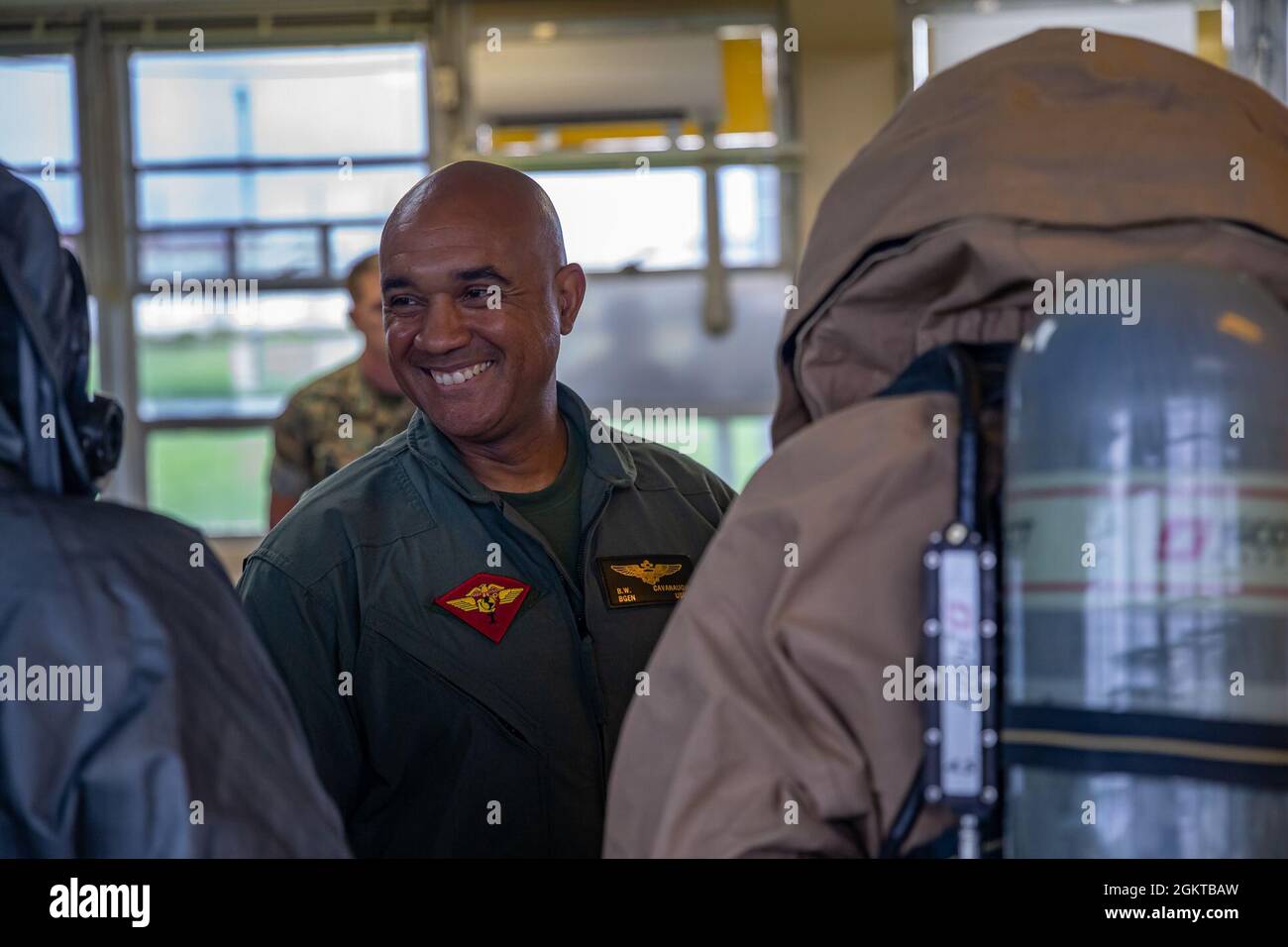 Commanding General Brig. Gen. Brian Cavanaugh, of 1st Marine Aircraft Wing (MAW), reviews Chemical, Biological, Radiological, Nuclear Defense (CBRN) capabilities during a visit at MCAS Futenma, Okinawa, Japan, June 28, 2021. Cavanaugh visited CBRN to gain an improved understanding of their mission and how to effectively employ the Marines if required. Stock Photohttps://www.alamy.com/image-license-details/?v=1https://www.alamy.com/commanding-general-brig-gen-brian-cavanaugh-of-1st-marine-aircraft-wing-maw-reviews-chemical-biological-radiological-nuclear-defense-cbrn-capabilities-during-a-visit-at-mcas-futenma-okinawa-japan-june-28-2021-cavanaugh-visited-cbrn-to-gain-an-improved-understanding-of-their-mission-and-how-to-effectively-employ-the-marines-if-required-image442473441.html
Commanding General Brig. Gen. Brian Cavanaugh, of 1st Marine Aircraft Wing (MAW), reviews Chemical, Biological, Radiological, Nuclear Defense (CBRN) capabilities during a visit at MCAS Futenma, Okinawa, Japan, June 28, 2021. Cavanaugh visited CBRN to gain an improved understanding of their mission and how to effectively employ the Marines if required. Stock Photohttps://www.alamy.com/image-license-details/?v=1https://www.alamy.com/commanding-general-brig-gen-brian-cavanaugh-of-1st-marine-aircraft-wing-maw-reviews-chemical-biological-radiological-nuclear-defense-cbrn-capabilities-during-a-visit-at-mcas-futenma-okinawa-japan-june-28-2021-cavanaugh-visited-cbrn-to-gain-an-improved-understanding-of-their-mission-and-how-to-effectively-employ-the-marines-if-required-image442473441.htmlRM2GKTBAW–Commanding General Brig. Gen. Brian Cavanaugh, of 1st Marine Aircraft Wing (MAW), reviews Chemical, Biological, Radiological, Nuclear Defense (CBRN) capabilities during a visit at MCAS Futenma, Okinawa, Japan, June 28, 2021. Cavanaugh visited CBRN to gain an improved understanding of their mission and how to effectively employ the Marines if required.
 U.S. Marine Corps Sgt. Lena Huynh, an explosive and ordnance disposal technician with Marine Wing Support Squadron (MWSS) 172, conducts a substance identifier procedure on a simulated unknown substance at Marine Corps Air Station Futenma, Okinawa, Japan, Feb. 24, 2022. Chemical, Biological, Radiological, and Nuclear Defense (CBRN) is responsible for conducting training and reconnaissance, chemical detection identification, biological agent collection and sampling, decontamination of personnel, equipment, and casualties and individual protective measures in first aid for unit personnel. Stock Photohttps://www.alamy.com/image-license-details/?v=1https://www.alamy.com/us-marine-corps-sgt-lena-huynh-an-explosive-and-ordnance-disposal-technician-with-marine-wing-support-squadron-mwss-172-conducts-a-substance-identifier-procedure-on-a-simulated-unknown-substance-at-marine-corps-air-station-futenma-okinawa-japan-feb-24-2022-chemical-biological-radiological-and-nuclear-defense-cbrn-is-responsible-for-conducting-training-and-reconnaissance-chemical-detection-identification-biological-agent-collection-and-sampling-decontamination-of-personnel-equipment-and-casualties-and-individual-protective-measures-in-first-aid-for-unit-personnel-image502433172.html
U.S. Marine Corps Sgt. Lena Huynh, an explosive and ordnance disposal technician with Marine Wing Support Squadron (MWSS) 172, conducts a substance identifier procedure on a simulated unknown substance at Marine Corps Air Station Futenma, Okinawa, Japan, Feb. 24, 2022. Chemical, Biological, Radiological, and Nuclear Defense (CBRN) is responsible for conducting training and reconnaissance, chemical detection identification, biological agent collection and sampling, decontamination of personnel, equipment, and casualties and individual protective measures in first aid for unit personnel. Stock Photohttps://www.alamy.com/image-license-details/?v=1https://www.alamy.com/us-marine-corps-sgt-lena-huynh-an-explosive-and-ordnance-disposal-technician-with-marine-wing-support-squadron-mwss-172-conducts-a-substance-identifier-procedure-on-a-simulated-unknown-substance-at-marine-corps-air-station-futenma-okinawa-japan-feb-24-2022-chemical-biological-radiological-and-nuclear-defense-cbrn-is-responsible-for-conducting-training-and-reconnaissance-chemical-detection-identification-biological-agent-collection-and-sampling-decontamination-of-personnel-equipment-and-casualties-and-individual-protective-measures-in-first-aid-for-unit-personnel-image502433172.htmlRM2M5BPHT–U.S. Marine Corps Sgt. Lena Huynh, an explosive and ordnance disposal technician with Marine Wing Support Squadron (MWSS) 172, conducts a substance identifier procedure on a simulated unknown substance at Marine Corps Air Station Futenma, Okinawa, Japan, Feb. 24, 2022. Chemical, Biological, Radiological, and Nuclear Defense (CBRN) is responsible for conducting training and reconnaissance, chemical detection identification, biological agent collection and sampling, decontamination of personnel, equipment, and casualties and individual protective measures in first aid for unit personnel.
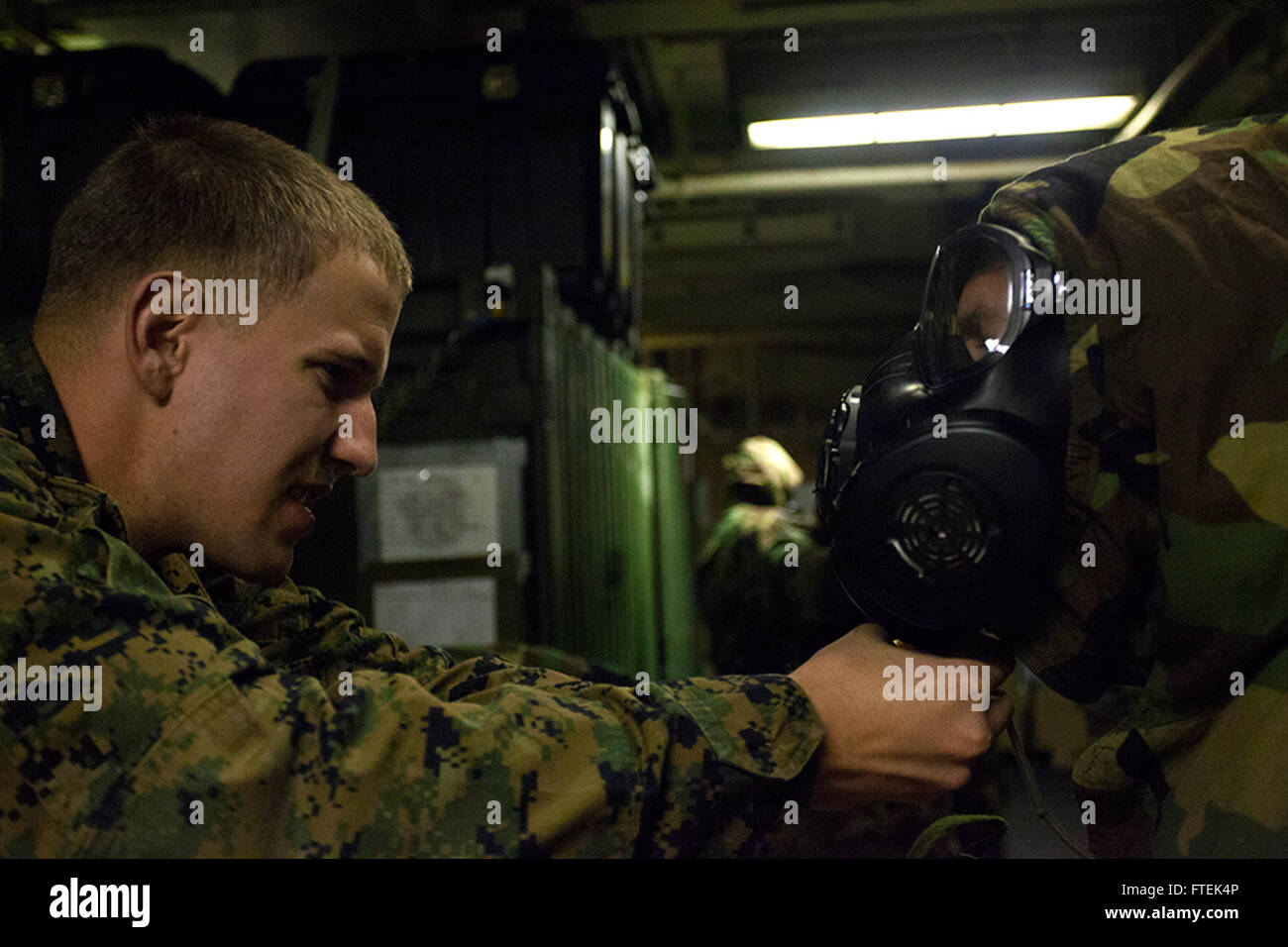 150108-M-QZ288-130 MEDITERRANEAN SEA (Jan. 8, 2015) Cpl. Evan A. Lafoose, a chemical, biological, radiological, and nuclear defense specialist with the 24th Marine Expeditionary Unit’s Command Element, adjusts a student’s M50 joint-service general-purpose gas mask during a mission-oriented protective posture gear refresher course aboard USS Iwo Jima (LHD 7) Jan. 8, 2015. The 24th MEU and Iwo Jima Amphibious Ready Group are conducting naval operations in the U.S. 6th Fleet area of operations in support of U.S. national security interests in Europe. (U.S. Marine Corps photo by Lance Cpl. Austin Stock Photohttps://www.alamy.com/image-license-details/?v=1https://www.alamy.com/stock-photo-150108-m-qz288-130-mediterranean-sea-jan-8-2015-cpl-evan-a-lafoose-101125942.html
150108-M-QZ288-130 MEDITERRANEAN SEA (Jan. 8, 2015) Cpl. Evan A. Lafoose, a chemical, biological, radiological, and nuclear defense specialist with the 24th Marine Expeditionary Unit’s Command Element, adjusts a student’s M50 joint-service general-purpose gas mask during a mission-oriented protective posture gear refresher course aboard USS Iwo Jima (LHD 7) Jan. 8, 2015. The 24th MEU and Iwo Jima Amphibious Ready Group are conducting naval operations in the U.S. 6th Fleet area of operations in support of U.S. national security interests in Europe. (U.S. Marine Corps photo by Lance Cpl. Austin Stock Photohttps://www.alamy.com/image-license-details/?v=1https://www.alamy.com/stock-photo-150108-m-qz288-130-mediterranean-sea-jan-8-2015-cpl-evan-a-lafoose-101125942.htmlRMFTEK4P–150108-M-QZ288-130 MEDITERRANEAN SEA (Jan. 8, 2015) Cpl. Evan A. Lafoose, a chemical, biological, radiological, and nuclear defense specialist with the 24th Marine Expeditionary Unit’s Command Element, adjusts a student’s M50 joint-service general-purpose gas mask during a mission-oriented protective posture gear refresher course aboard USS Iwo Jima (LHD 7) Jan. 8, 2015. The 24th MEU and Iwo Jima Amphibious Ready Group are conducting naval operations in the U.S. 6th Fleet area of operations in support of U.S. national security interests in Europe. (U.S. Marine Corps photo by Lance Cpl. Austin
 U.S. Marines stationed at Marine Corps Air Station (MCAS) Yuma, conduct their annual Chemical, Biological, Radiological and Nuclear Defense (CBRN) Training at the MCAS Yuma Gas Chamber July 26, 2018. The gas chamber is a controlled environment in which a non-lethal gas is released. This trains Marines to have confidence in their gear and become familiar with the effects of gas. Stock Photohttps://www.alamy.com/image-license-details/?v=1https://www.alamy.com/us-marines-stationed-at-marine-corps-air-station-mcas-yuma-conduct-their-annual-chemical-biological-radiological-and-nuclear-defense-cbrn-training-at-the-mcas-yuma-gas-chamber-july-26-2018-the-gas-chamber-is-a-controlled-environment-in-which-a-non-lethal-gas-is-released-this-trains-marines-to-have-confidence-in-their-gear-and-become-familiar-with-the-effects-of-gas-image218527872.html
U.S. Marines stationed at Marine Corps Air Station (MCAS) Yuma, conduct their annual Chemical, Biological, Radiological and Nuclear Defense (CBRN) Training at the MCAS Yuma Gas Chamber July 26, 2018. The gas chamber is a controlled environment in which a non-lethal gas is released. This trains Marines to have confidence in their gear and become familiar with the effects of gas. Stock Photohttps://www.alamy.com/image-license-details/?v=1https://www.alamy.com/us-marines-stationed-at-marine-corps-air-station-mcas-yuma-conduct-their-annual-chemical-biological-radiological-and-nuclear-defense-cbrn-training-at-the-mcas-yuma-gas-chamber-july-26-2018-the-gas-chamber-is-a-controlled-environment-in-which-a-non-lethal-gas-is-released-this-trains-marines-to-have-confidence-in-their-gear-and-become-familiar-with-the-effects-of-gas-image218527872.htmlRMPKEPET–U.S. Marines stationed at Marine Corps Air Station (MCAS) Yuma, conduct their annual Chemical, Biological, Radiological and Nuclear Defense (CBRN) Training at the MCAS Yuma Gas Chamber July 26, 2018. The gas chamber is a controlled environment in which a non-lethal gas is released. This trains Marines to have confidence in their gear and become familiar with the effects of gas.
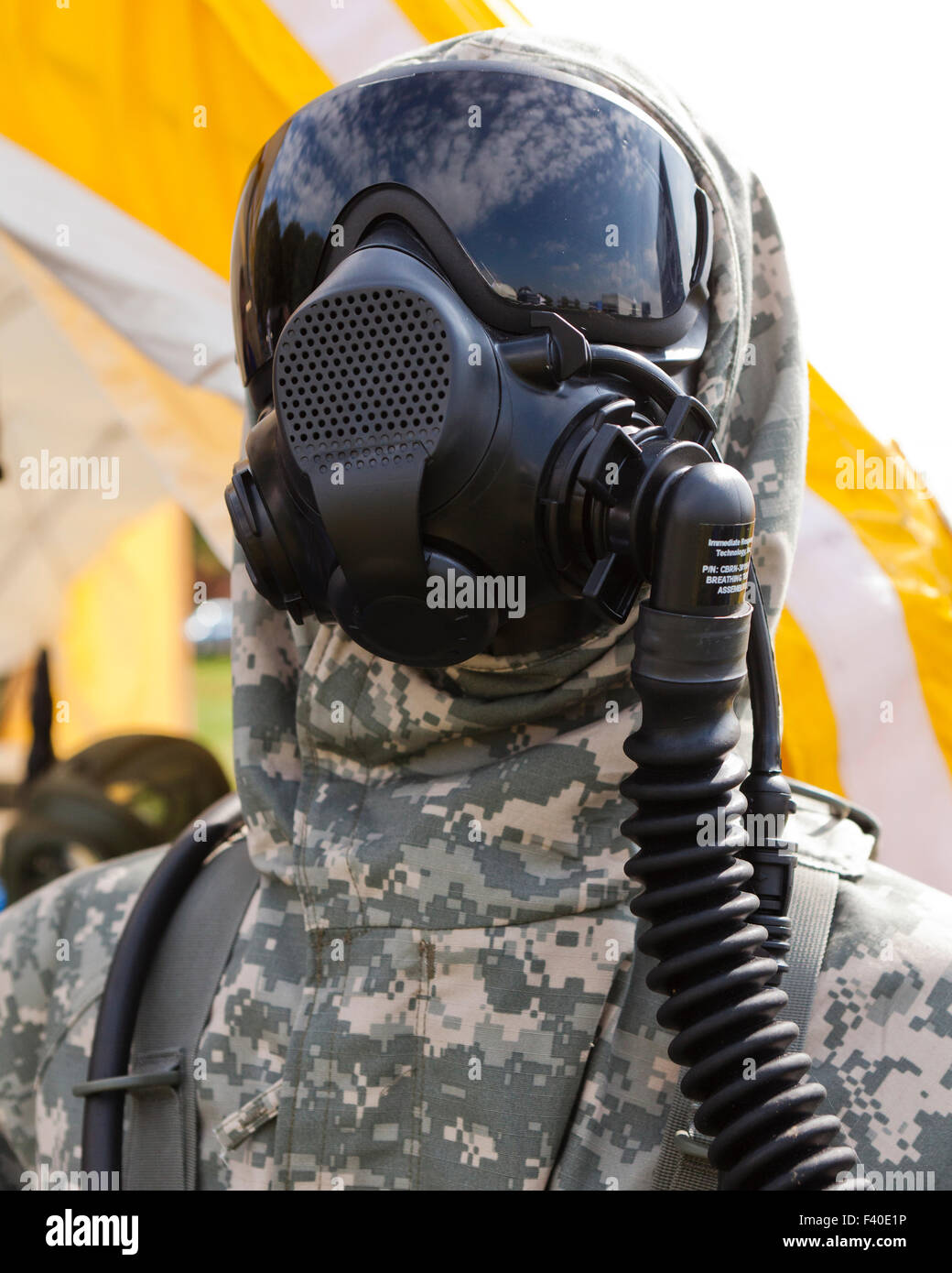 AirBoss gas mask system - USA Stock Photohttps://www.alamy.com/image-license-details/?v=1https://www.alamy.com/stock-photo-airboss-gas-mask-system-usa-88521490.html
AirBoss gas mask system - USA Stock Photohttps://www.alamy.com/image-license-details/?v=1https://www.alamy.com/stock-photo-airboss-gas-mask-system-usa-88521490.htmlRMF40E1P–AirBoss gas mask system - USA
 A U.S. Army crew chief with the 2-501st General Support Aviation Battalion (GSAB), 1st Armored Division, based in Ft. Bliss, Texas, peeks slightly out of a HH-60M MEDEVAC, making sure it is safe to land below during Guardian Response 18 at Muscatatuck Urban Training Center, Ind., April 20, 2018. More than 4,500 Soldiers from across the country are participating in Guardian Response 18, a multi-component training exercise to validate U.S. Army units’ ability to support the Defense Support of Civil Authorities (DSCA) in the event of a Chemical, Biological, Radiological, and Nuclear (CBRN) cat Stock Photohttps://www.alamy.com/image-license-details/?v=1https://www.alamy.com/a-us-army-crew-chief-with-the-2-501st-general-support-aviation-battalion-gsab-1st-armored-division-based-in-ft-bliss-texas-peeks-slightly-out-of-a-hh-60m-medevac-making-sure-it-is-safe-to-land-below-during-guardian-response-18-at-muscatatuck-urban-training-center-ind-april-20-2018-more-than-4500-soldiers-from-across-the-country-are-participating-in-guardian-response-18-a-multi-component-training-exercise-to-validate-us-army-units-ability-to-support-the-defense-support-of-civil-authorities-dsca-in-the-event-of-a-chemical-biological-radiological-and-nuclear-cbrn-cat-image181166512.html
A U.S. Army crew chief with the 2-501st General Support Aviation Battalion (GSAB), 1st Armored Division, based in Ft. Bliss, Texas, peeks slightly out of a HH-60M MEDEVAC, making sure it is safe to land below during Guardian Response 18 at Muscatatuck Urban Training Center, Ind., April 20, 2018. More than 4,500 Soldiers from across the country are participating in Guardian Response 18, a multi-component training exercise to validate U.S. Army units’ ability to support the Defense Support of Civil Authorities (DSCA) in the event of a Chemical, Biological, Radiological, and Nuclear (CBRN) cat Stock Photohttps://www.alamy.com/image-license-details/?v=1https://www.alamy.com/a-us-army-crew-chief-with-the-2-501st-general-support-aviation-battalion-gsab-1st-armored-division-based-in-ft-bliss-texas-peeks-slightly-out-of-a-hh-60m-medevac-making-sure-it-is-safe-to-land-below-during-guardian-response-18-at-muscatatuck-urban-training-center-ind-april-20-2018-more-than-4500-soldiers-from-across-the-country-are-participating-in-guardian-response-18-a-multi-component-training-exercise-to-validate-us-army-units-ability-to-support-the-defense-support-of-civil-authorities-dsca-in-the-event-of-a-chemical-biological-radiological-and-nuclear-cbrn-cat-image181166512.htmlRMMEMRMG–A U.S. Army crew chief with the 2-501st General Support Aviation Battalion (GSAB), 1st Armored Division, based in Ft. Bliss, Texas, peeks slightly out of a HH-60M MEDEVAC, making sure it is safe to land below during Guardian Response 18 at Muscatatuck Urban Training Center, Ind., April 20, 2018. More than 4,500 Soldiers from across the country are participating in Guardian Response 18, a multi-component training exercise to validate U.S. Army units’ ability to support the Defense Support of Civil Authorities (DSCA) in the event of a Chemical, Biological, Radiological, and Nuclear (CBRN) cat
 Commanding General Brig. Gen. Brian Cavanaugh, of 1st Marine Aircraft Wing (MAW), reviews Chemical, Biological, Radiological, Nuclear Defense (CBRN) capabilities during a visit at MCAS Futenma, Okinawa, Japan, June 28, 2021. Cavanaugh visited CBRN to gain an improved understanding of their mission and how to effectively employ the Marines if required. Stock Photohttps://www.alamy.com/image-license-details/?v=1https://www.alamy.com/commanding-general-brig-gen-brian-cavanaugh-of-1st-marine-aircraft-wing-maw-reviews-chemical-biological-radiological-nuclear-defense-cbrn-capabilities-during-a-visit-at-mcas-futenma-okinawa-japan-june-28-2021-cavanaugh-visited-cbrn-to-gain-an-improved-understanding-of-their-mission-and-how-to-effectively-employ-the-marines-if-required-image442473460.html
Commanding General Brig. Gen. Brian Cavanaugh, of 1st Marine Aircraft Wing (MAW), reviews Chemical, Biological, Radiological, Nuclear Defense (CBRN) capabilities during a visit at MCAS Futenma, Okinawa, Japan, June 28, 2021. Cavanaugh visited CBRN to gain an improved understanding of their mission and how to effectively employ the Marines if required. Stock Photohttps://www.alamy.com/image-license-details/?v=1https://www.alamy.com/commanding-general-brig-gen-brian-cavanaugh-of-1st-marine-aircraft-wing-maw-reviews-chemical-biological-radiological-nuclear-defense-cbrn-capabilities-during-a-visit-at-mcas-futenma-okinawa-japan-june-28-2021-cavanaugh-visited-cbrn-to-gain-an-improved-understanding-of-their-mission-and-how-to-effectively-employ-the-marines-if-required-image442473460.htmlRM2GKTBBG–Commanding General Brig. Gen. Brian Cavanaugh, of 1st Marine Aircraft Wing (MAW), reviews Chemical, Biological, Radiological, Nuclear Defense (CBRN) capabilities during a visit at MCAS Futenma, Okinawa, Japan, June 28, 2021. Cavanaugh visited CBRN to gain an improved understanding of their mission and how to effectively employ the Marines if required.
 U.S. Marine Corps Staff Sgt. Demetri Duey, left, and Sgt. Lena Huynh, right, both explosive ordnance disposal technicians assigned to Marine Wing Support Squadron (MWSS) 172 conduct scenario-based training at Marine Corps Air Station Futenma, Okinawa, Japan, Feb. 24, 2022. Chemical, Biological, Radiological, and Nuclear Defense (CBRN) is responsible for conducting training and reconnaissance, chemical detection identification, biological agent collection and sampling, decontamination of personnel, equipment, and casualties and individual protective measures in first aid for unit personnel. Stock Photohttps://www.alamy.com/image-license-details/?v=1https://www.alamy.com/us-marine-corps-staff-sgt-demetri-duey-left-and-sgt-lena-huynh-right-both-explosive-ordnance-disposal-technicians-assigned-to-marine-wing-support-squadron-mwss-172-conduct-scenario-based-training-at-marine-corps-air-station-futenma-okinawa-japan-feb-24-2022-chemical-biological-radiological-and-nuclear-defense-cbrn-is-responsible-for-conducting-training-and-reconnaissance-chemical-detection-identification-biological-agent-collection-and-sampling-decontamination-of-personnel-equipment-and-casualties-and-individual-protective-measures-in-first-aid-for-unit-personnel-image502433179.html
U.S. Marine Corps Staff Sgt. Demetri Duey, left, and Sgt. Lena Huynh, right, both explosive ordnance disposal technicians assigned to Marine Wing Support Squadron (MWSS) 172 conduct scenario-based training at Marine Corps Air Station Futenma, Okinawa, Japan, Feb. 24, 2022. Chemical, Biological, Radiological, and Nuclear Defense (CBRN) is responsible for conducting training and reconnaissance, chemical detection identification, biological agent collection and sampling, decontamination of personnel, equipment, and casualties and individual protective measures in first aid for unit personnel. Stock Photohttps://www.alamy.com/image-license-details/?v=1https://www.alamy.com/us-marine-corps-staff-sgt-demetri-duey-left-and-sgt-lena-huynh-right-both-explosive-ordnance-disposal-technicians-assigned-to-marine-wing-support-squadron-mwss-172-conduct-scenario-based-training-at-marine-corps-air-station-futenma-okinawa-japan-feb-24-2022-chemical-biological-radiological-and-nuclear-defense-cbrn-is-responsible-for-conducting-training-and-reconnaissance-chemical-detection-identification-biological-agent-collection-and-sampling-decontamination-of-personnel-equipment-and-casualties-and-individual-protective-measures-in-first-aid-for-unit-personnel-image502433179.htmlRM2M5BPJ3–U.S. Marine Corps Staff Sgt. Demetri Duey, left, and Sgt. Lena Huynh, right, both explosive ordnance disposal technicians assigned to Marine Wing Support Squadron (MWSS) 172 conduct scenario-based training at Marine Corps Air Station Futenma, Okinawa, Japan, Feb. 24, 2022. Chemical, Biological, Radiological, and Nuclear Defense (CBRN) is responsible for conducting training and reconnaissance, chemical detection identification, biological agent collection and sampling, decontamination of personnel, equipment, and casualties and individual protective measures in first aid for unit personnel.
 Members of the 89th Airlift Squadron train on chemical, biological, radiological and nuclear defense techniques Oct. 4, 2014, while preparing for a training flight at Wright-Patterson Air Force Base, Ohio. Frank Oliver Stock Photohttps://www.alamy.com/image-license-details/?v=1https://www.alamy.com/stock-photo-members-of-the-89th-airlift-squadron-train-on-chemical-biological-78726172.html
Members of the 89th Airlift Squadron train on chemical, biological, radiological and nuclear defense techniques Oct. 4, 2014, while preparing for a training flight at Wright-Patterson Air Force Base, Ohio. Frank Oliver Stock Photohttps://www.alamy.com/image-license-details/?v=1https://www.alamy.com/stock-photo-members-of-the-89th-airlift-squadron-train-on-chemical-biological-78726172.htmlRMEG2810–Members of the 89th Airlift Squadron train on chemical, biological, radiological and nuclear defense techniques Oct. 4, 2014, while preparing for a training flight at Wright-Patterson Air Force Base, Ohio. Frank Oliver
 U.S. Marines stationed at Marine Corps Air Station (MCAS) Yuma, conduct their annual Chemical, Biological, Radiological and Nuclear Defense (CBRN) Training at the MCAS Yuma Gas Chamber July 26, 2018. The gas chamber is a controlled environment in which a non-lethal gas is released. This trains Marines to have confidence in their gear and become familiar with the effects of gas. Stock Photohttps://www.alamy.com/image-license-details/?v=1https://www.alamy.com/us-marines-stationed-at-marine-corps-air-station-mcas-yuma-conduct-their-annual-chemical-biological-radiological-and-nuclear-defense-cbrn-training-at-the-mcas-yuma-gas-chamber-july-26-2018-the-gas-chamber-is-a-controlled-environment-in-which-a-non-lethal-gas-is-released-this-trains-marines-to-have-confidence-in-their-gear-and-become-familiar-with-the-effects-of-gas-image218527876.html
U.S. Marines stationed at Marine Corps Air Station (MCAS) Yuma, conduct their annual Chemical, Biological, Radiological and Nuclear Defense (CBRN) Training at the MCAS Yuma Gas Chamber July 26, 2018. The gas chamber is a controlled environment in which a non-lethal gas is released. This trains Marines to have confidence in their gear and become familiar with the effects of gas. Stock Photohttps://www.alamy.com/image-license-details/?v=1https://www.alamy.com/us-marines-stationed-at-marine-corps-air-station-mcas-yuma-conduct-their-annual-chemical-biological-radiological-and-nuclear-defense-cbrn-training-at-the-mcas-yuma-gas-chamber-july-26-2018-the-gas-chamber-is-a-controlled-environment-in-which-a-non-lethal-gas-is-released-this-trains-marines-to-have-confidence-in-their-gear-and-become-familiar-with-the-effects-of-gas-image218527876.htmlRMPKEPF0–U.S. Marines stationed at Marine Corps Air Station (MCAS) Yuma, conduct their annual Chemical, Biological, Radiological and Nuclear Defense (CBRN) Training at the MCAS Yuma Gas Chamber July 26, 2018. The gas chamber is a controlled environment in which a non-lethal gas is released. This trains Marines to have confidence in their gear and become familiar with the effects of gas.
 AirBoss gas mask system - USA Stock Photohttps://www.alamy.com/image-license-details/?v=1https://www.alamy.com/stock-photo-airboss-gas-mask-system-usa-88521363.html
AirBoss gas mask system - USA Stock Photohttps://www.alamy.com/image-license-details/?v=1https://www.alamy.com/stock-photo-airboss-gas-mask-system-usa-88521363.htmlRMF40DW7–AirBoss gas mask system - USA
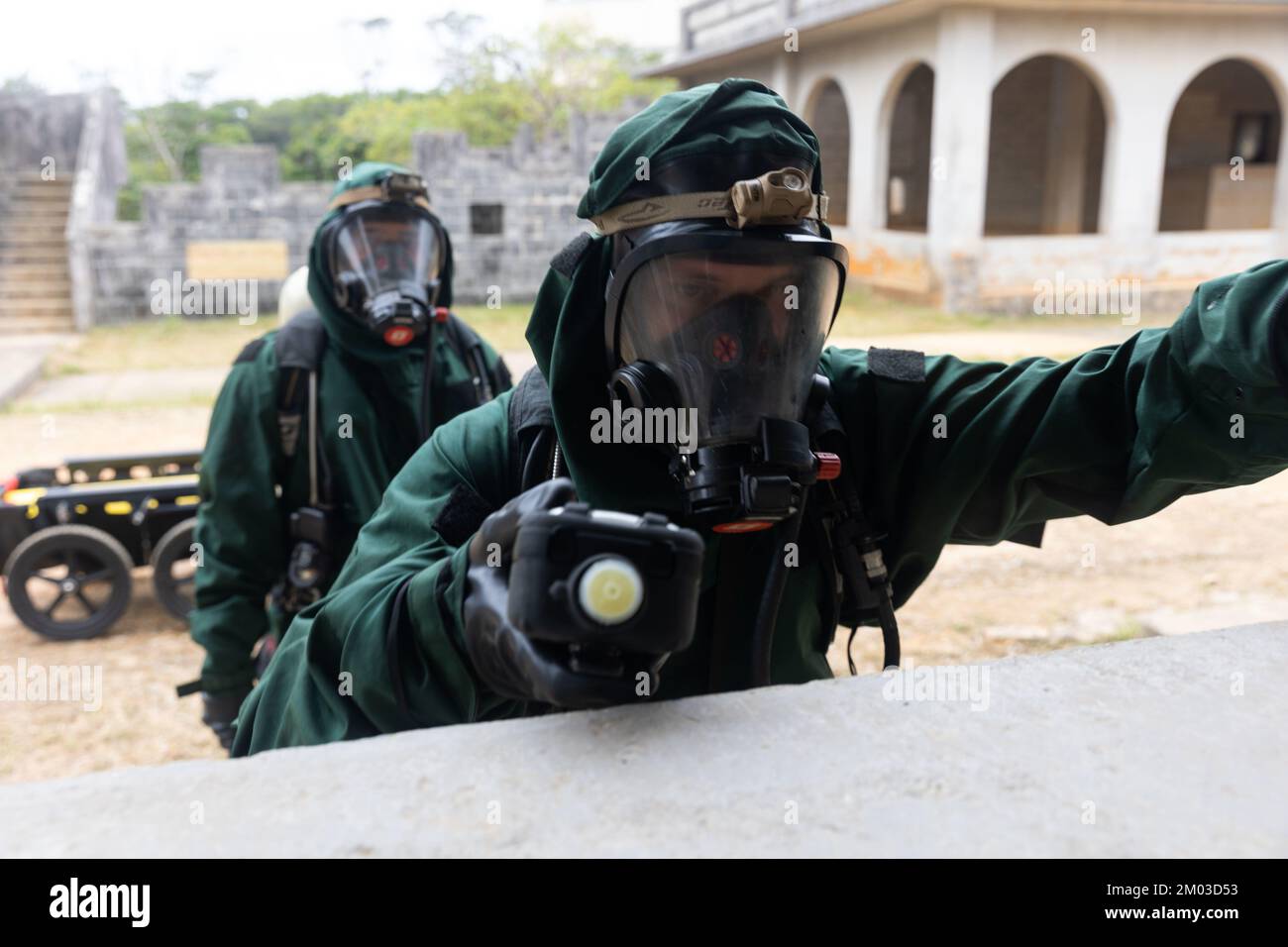 U.S. Marine Corps Cpl. David Gonzalez, left, and Lance Cpl. Cesar Arroyo, right, both chemical, biological, radiological, and nuclear defense specialists with the command element, 31st Marine Expeditionary Unit, performs reconnaissance during a simulated CBRN response exercise on Camp Hansen, Okinawa, Japan, Nov. 30, 2022. A chemical response element exercise tests CBRN’s ability to respond to different operations, investigating clandestine labs, containing chemical munitions, and countering weapons of mass destruction while performing reconnaissance, decontamination, and rapid insertion for c Stock Photohttps://www.alamy.com/image-license-details/?v=1https://www.alamy.com/us-marine-corps-cpl-david-gonzalez-left-and-lance-cpl-cesar-arroyo-right-both-chemical-biological-radiological-and-nuclear-defense-specialists-with-the-command-element-31st-marine-expeditionary-unit-performs-reconnaissance-during-a-simulated-cbrn-response-exercise-on-camp-hansen-okinawa-japan-nov-30-2022-a-chemical-response-element-exercise-tests-cbrns-ability-to-respond-to-different-operations-investigating-clandestine-labs-containing-chemical-munitions-and-countering-weapons-of-mass-destruction-while-performing-reconnaissance-decontamination-and-rapid-insertion-for-c-image499176863.html
U.S. Marine Corps Cpl. David Gonzalez, left, and Lance Cpl. Cesar Arroyo, right, both chemical, biological, radiological, and nuclear defense specialists with the command element, 31st Marine Expeditionary Unit, performs reconnaissance during a simulated CBRN response exercise on Camp Hansen, Okinawa, Japan, Nov. 30, 2022. A chemical response element exercise tests CBRN’s ability to respond to different operations, investigating clandestine labs, containing chemical munitions, and countering weapons of mass destruction while performing reconnaissance, decontamination, and rapid insertion for c Stock Photohttps://www.alamy.com/image-license-details/?v=1https://www.alamy.com/us-marine-corps-cpl-david-gonzalez-left-and-lance-cpl-cesar-arroyo-right-both-chemical-biological-radiological-and-nuclear-defense-specialists-with-the-command-element-31st-marine-expeditionary-unit-performs-reconnaissance-during-a-simulated-cbrn-response-exercise-on-camp-hansen-okinawa-japan-nov-30-2022-a-chemical-response-element-exercise-tests-cbrns-ability-to-respond-to-different-operations-investigating-clandestine-labs-containing-chemical-munitions-and-countering-weapons-of-mass-destruction-while-performing-reconnaissance-decontamination-and-rapid-insertion-for-c-image499176863.htmlRM2M03D53–U.S. Marine Corps Cpl. David Gonzalez, left, and Lance Cpl. Cesar Arroyo, right, both chemical, biological, radiological, and nuclear defense specialists with the command element, 31st Marine Expeditionary Unit, performs reconnaissance during a simulated CBRN response exercise on Camp Hansen, Okinawa, Japan, Nov. 30, 2022. A chemical response element exercise tests CBRN’s ability to respond to different operations, investigating clandestine labs, containing chemical munitions, and countering weapons of mass destruction while performing reconnaissance, decontamination, and rapid insertion for c
 Commanding General Brig. Gen. Brian Cavanaugh, of 1st Marine Aircraft Wing (MAW), reviews Chemical, Biological, Radiological, Nuclear Defense (CBRN) capabilities during a visit at MCAS Futenma, Okinawa, Japan, June 28, 2021. Cavanaugh visited CBRN to gain an improved understanding of their mission and how to effectively employ the Marines if required. Stock Photohttps://www.alamy.com/image-license-details/?v=1https://www.alamy.com/commanding-general-brig-gen-brian-cavanaugh-of-1st-marine-aircraft-wing-maw-reviews-chemical-biological-radiological-nuclear-defense-cbrn-capabilities-during-a-visit-at-mcas-futenma-okinawa-japan-june-28-2021-cavanaugh-visited-cbrn-to-gain-an-improved-understanding-of-their-mission-and-how-to-effectively-employ-the-marines-if-required-image442473468.html
Commanding General Brig. Gen. Brian Cavanaugh, of 1st Marine Aircraft Wing (MAW), reviews Chemical, Biological, Radiological, Nuclear Defense (CBRN) capabilities during a visit at MCAS Futenma, Okinawa, Japan, June 28, 2021. Cavanaugh visited CBRN to gain an improved understanding of their mission and how to effectively employ the Marines if required. Stock Photohttps://www.alamy.com/image-license-details/?v=1https://www.alamy.com/commanding-general-brig-gen-brian-cavanaugh-of-1st-marine-aircraft-wing-maw-reviews-chemical-biological-radiological-nuclear-defense-cbrn-capabilities-during-a-visit-at-mcas-futenma-okinawa-japan-june-28-2021-cavanaugh-visited-cbrn-to-gain-an-improved-understanding-of-their-mission-and-how-to-effectively-employ-the-marines-if-required-image442473468.htmlRM2GKTBBT–Commanding General Brig. Gen. Brian Cavanaugh, of 1st Marine Aircraft Wing (MAW), reviews Chemical, Biological, Radiological, Nuclear Defense (CBRN) capabilities during a visit at MCAS Futenma, Okinawa, Japan, June 28, 2021. Cavanaugh visited CBRN to gain an improved understanding of their mission and how to effectively employ the Marines if required.
 U.S. Marines with Marine Wing Support Squadron (MWSS) 172 conduct mitigation procedures on simulated ordnance at Marine Corps Air Station Futenma, Okinawa, Japan, Feb. 24, 2022. Chemical, Biological, Radiological, and Nuclear Defense (CBRN) is responsible for conducting training and reconnaissance, chemical detection identification, biological agent collection and sampling, decontamination of personnel, equipment, and casualties and individual protective measures in first aid for unit personnel. Stock Photohttps://www.alamy.com/image-license-details/?v=1https://www.alamy.com/us-marines-with-marine-wing-support-squadron-mwss-172-conduct-mitigation-procedures-on-simulated-ordnance-at-marine-corps-air-station-futenma-okinawa-japan-feb-24-2022-chemical-biological-radiological-and-nuclear-defense-cbrn-is-responsible-for-conducting-training-and-reconnaissance-chemical-detection-identification-biological-agent-collection-and-sampling-decontamination-of-personnel-equipment-and-casualties-and-individual-protective-measures-in-first-aid-for-unit-personnel-image502433171.html
U.S. Marines with Marine Wing Support Squadron (MWSS) 172 conduct mitigation procedures on simulated ordnance at Marine Corps Air Station Futenma, Okinawa, Japan, Feb. 24, 2022. Chemical, Biological, Radiological, and Nuclear Defense (CBRN) is responsible for conducting training and reconnaissance, chemical detection identification, biological agent collection and sampling, decontamination of personnel, equipment, and casualties and individual protective measures in first aid for unit personnel. Stock Photohttps://www.alamy.com/image-license-details/?v=1https://www.alamy.com/us-marines-with-marine-wing-support-squadron-mwss-172-conduct-mitigation-procedures-on-simulated-ordnance-at-marine-corps-air-station-futenma-okinawa-japan-feb-24-2022-chemical-biological-radiological-and-nuclear-defense-cbrn-is-responsible-for-conducting-training-and-reconnaissance-chemical-detection-identification-biological-agent-collection-and-sampling-decontamination-of-personnel-equipment-and-casualties-and-individual-protective-measures-in-first-aid-for-unit-personnel-image502433171.htmlRM2M5BPHR–U.S. Marines with Marine Wing Support Squadron (MWSS) 172 conduct mitigation procedures on simulated ordnance at Marine Corps Air Station Futenma, Okinawa, Japan, Feb. 24, 2022. Chemical, Biological, Radiological, and Nuclear Defense (CBRN) is responsible for conducting training and reconnaissance, chemical detection identification, biological agent collection and sampling, decontamination of personnel, equipment, and casualties and individual protective measures in first aid for unit personnel.
 Service members use an Airman’s Manual to identify simulated unexploded ordnance during a Chemical Biological Radiological and Nuclear CBRN survival skills class Aug. 9, 2012, at Dover Air Force Base, Del. Identifying, marking and reporting are some of the responsibilities Airmen have to perform if assigned to a Post Attack Reconnaissance team. Roland Balik Stock Photohttps://www.alamy.com/image-license-details/?v=1https://www.alamy.com/stock-photo-service-members-use-an-airmans-manual-to-identify-simulated-unexploded-78726175.html
Service members use an Airman’s Manual to identify simulated unexploded ordnance during a Chemical Biological Radiological and Nuclear CBRN survival skills class Aug. 9, 2012, at Dover Air Force Base, Del. Identifying, marking and reporting are some of the responsibilities Airmen have to perform if assigned to a Post Attack Reconnaissance team. Roland Balik Stock Photohttps://www.alamy.com/image-license-details/?v=1https://www.alamy.com/stock-photo-service-members-use-an-airmans-manual-to-identify-simulated-unexploded-78726175.htmlRMEG2813–Service members use an Airman’s Manual to identify simulated unexploded ordnance during a Chemical Biological Radiological and Nuclear CBRN survival skills class Aug. 9, 2012, at Dover Air Force Base, Del. Identifying, marking and reporting are some of the responsibilities Airmen have to perform if assigned to a Post Attack Reconnaissance team. Roland Balik
 U.S. Marines stationed at Marine Corps Air Station (MCAS) Yuma, conduct their annual Chemical, Biological, Radiological and Nuclear Defense (CBRN) Training at the MCAS Yuma Gas Chamber July 26, 2018. The gas chamber is a controlled environment in which a non-lethal gas is released. This trains Marines to have confidence in their gear and become familiar with the effects of gas. Stock Photohttps://www.alamy.com/image-license-details/?v=1https://www.alamy.com/us-marines-stationed-at-marine-corps-air-station-mcas-yuma-conduct-their-annual-chemical-biological-radiological-and-nuclear-defense-cbrn-training-at-the-mcas-yuma-gas-chamber-july-26-2018-the-gas-chamber-is-a-controlled-environment-in-which-a-non-lethal-gas-is-released-this-trains-marines-to-have-confidence-in-their-gear-and-become-familiar-with-the-effects-of-gas-image218527878.html
U.S. Marines stationed at Marine Corps Air Station (MCAS) Yuma, conduct their annual Chemical, Biological, Radiological and Nuclear Defense (CBRN) Training at the MCAS Yuma Gas Chamber July 26, 2018. The gas chamber is a controlled environment in which a non-lethal gas is released. This trains Marines to have confidence in their gear and become familiar with the effects of gas. Stock Photohttps://www.alamy.com/image-license-details/?v=1https://www.alamy.com/us-marines-stationed-at-marine-corps-air-station-mcas-yuma-conduct-their-annual-chemical-biological-radiological-and-nuclear-defense-cbrn-training-at-the-mcas-yuma-gas-chamber-july-26-2018-the-gas-chamber-is-a-controlled-environment-in-which-a-non-lethal-gas-is-released-this-trains-marines-to-have-confidence-in-their-gear-and-become-familiar-with-the-effects-of-gas-image218527878.htmlRMPKEPF2–U.S. Marines stationed at Marine Corps Air Station (MCAS) Yuma, conduct their annual Chemical, Biological, Radiological and Nuclear Defense (CBRN) Training at the MCAS Yuma Gas Chamber July 26, 2018. The gas chamber is a controlled environment in which a non-lethal gas is released. This trains Marines to have confidence in their gear and become familiar with the effects of gas.
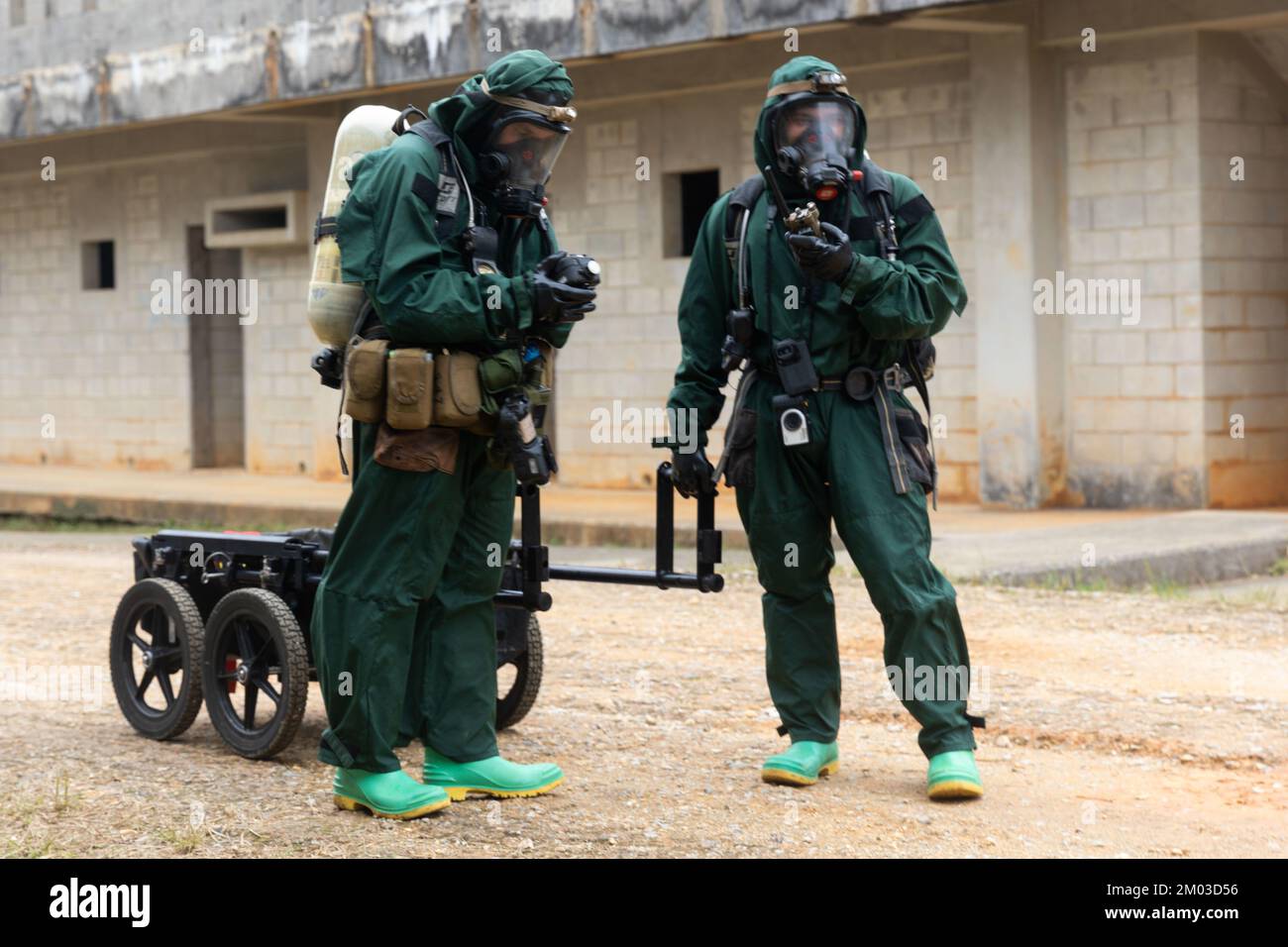 U.S. Marine Corps Cpl. David Gonzalez, left, and Lance Cpl. Cesar Arroyo, right, both chemical, biological, radiological, and nuclear defense specialists with the command element, 31st Marine Expeditionary Unit, performs reconnaissance during a simulated CBRN response exercise on Camp Hansen, Okinawa, Japan, Nov. 30, 2022. CBRN response exercises test Marines on their ability to react to different operations such as investigating clandestine labs, containing chemical munitions, reconnaissance, decontamination, and rapid extraction of casualties. The 31st MEU, the Marine Corps’ only continuousl Stock Photohttps://www.alamy.com/image-license-details/?v=1https://www.alamy.com/us-marine-corps-cpl-david-gonzalez-left-and-lance-cpl-cesar-arroyo-right-both-chemical-biological-radiological-and-nuclear-defense-specialists-with-the-command-element-31st-marine-expeditionary-unit-performs-reconnaissance-during-a-simulated-cbrn-response-exercise-on-camp-hansen-okinawa-japan-nov-30-2022-cbrn-response-exercises-test-marines-on-their-ability-to-react-to-different-operations-such-as-investigating-clandestine-labs-containing-chemical-munitions-reconnaissance-decontamination-and-rapid-extraction-of-casualties-the-31st-meu-the-marine-corps-only-continuousl-image499176866.html
U.S. Marine Corps Cpl. David Gonzalez, left, and Lance Cpl. Cesar Arroyo, right, both chemical, biological, radiological, and nuclear defense specialists with the command element, 31st Marine Expeditionary Unit, performs reconnaissance during a simulated CBRN response exercise on Camp Hansen, Okinawa, Japan, Nov. 30, 2022. CBRN response exercises test Marines on their ability to react to different operations such as investigating clandestine labs, containing chemical munitions, reconnaissance, decontamination, and rapid extraction of casualties. The 31st MEU, the Marine Corps’ only continuousl Stock Photohttps://www.alamy.com/image-license-details/?v=1https://www.alamy.com/us-marine-corps-cpl-david-gonzalez-left-and-lance-cpl-cesar-arroyo-right-both-chemical-biological-radiological-and-nuclear-defense-specialists-with-the-command-element-31st-marine-expeditionary-unit-performs-reconnaissance-during-a-simulated-cbrn-response-exercise-on-camp-hansen-okinawa-japan-nov-30-2022-cbrn-response-exercises-test-marines-on-their-ability-to-react-to-different-operations-such-as-investigating-clandestine-labs-containing-chemical-munitions-reconnaissance-decontamination-and-rapid-extraction-of-casualties-the-31st-meu-the-marine-corps-only-continuousl-image499176866.htmlRM2M03D56–U.S. Marine Corps Cpl. David Gonzalez, left, and Lance Cpl. Cesar Arroyo, right, both chemical, biological, radiological, and nuclear defense specialists with the command element, 31st Marine Expeditionary Unit, performs reconnaissance during a simulated CBRN response exercise on Camp Hansen, Okinawa, Japan, Nov. 30, 2022. CBRN response exercises test Marines on their ability to react to different operations such as investigating clandestine labs, containing chemical munitions, reconnaissance, decontamination, and rapid extraction of casualties. The 31st MEU, the Marine Corps’ only continuousl
 Commanding General Brig. Gen. Brian Cavanaugh, of 1st Marine Aircraft Wing (MAW), reviews Chemical, Biological, Radiological, Nuclear Defense (CBRN) capabilities during a visit at MCAS Futenma, Okinawa, Japan, June 28, 2021. Cavanaugh visited CBRN to gain an improved understanding of their mission and how to effectively employ the Marines if required. Stock Photohttps://www.alamy.com/image-license-details/?v=1https://www.alamy.com/commanding-general-brig-gen-brian-cavanaugh-of-1st-marine-aircraft-wing-maw-reviews-chemical-biological-radiological-nuclear-defense-cbrn-capabilities-during-a-visit-at-mcas-futenma-okinawa-japan-june-28-2021-cavanaugh-visited-cbrn-to-gain-an-improved-understanding-of-their-mission-and-how-to-effectively-employ-the-marines-if-required-image442473471.html
Commanding General Brig. Gen. Brian Cavanaugh, of 1st Marine Aircraft Wing (MAW), reviews Chemical, Biological, Radiological, Nuclear Defense (CBRN) capabilities during a visit at MCAS Futenma, Okinawa, Japan, June 28, 2021. Cavanaugh visited CBRN to gain an improved understanding of their mission and how to effectively employ the Marines if required. Stock Photohttps://www.alamy.com/image-license-details/?v=1https://www.alamy.com/commanding-general-brig-gen-brian-cavanaugh-of-1st-marine-aircraft-wing-maw-reviews-chemical-biological-radiological-nuclear-defense-cbrn-capabilities-during-a-visit-at-mcas-futenma-okinawa-japan-june-28-2021-cavanaugh-visited-cbrn-to-gain-an-improved-understanding-of-their-mission-and-how-to-effectively-employ-the-marines-if-required-image442473471.htmlRM2GKTBBY–Commanding General Brig. Gen. Brian Cavanaugh, of 1st Marine Aircraft Wing (MAW), reviews Chemical, Biological, Radiological, Nuclear Defense (CBRN) capabilities during a visit at MCAS Futenma, Okinawa, Japan, June 28, 2021. Cavanaugh visited CBRN to gain an improved understanding of their mission and how to effectively employ the Marines if required.
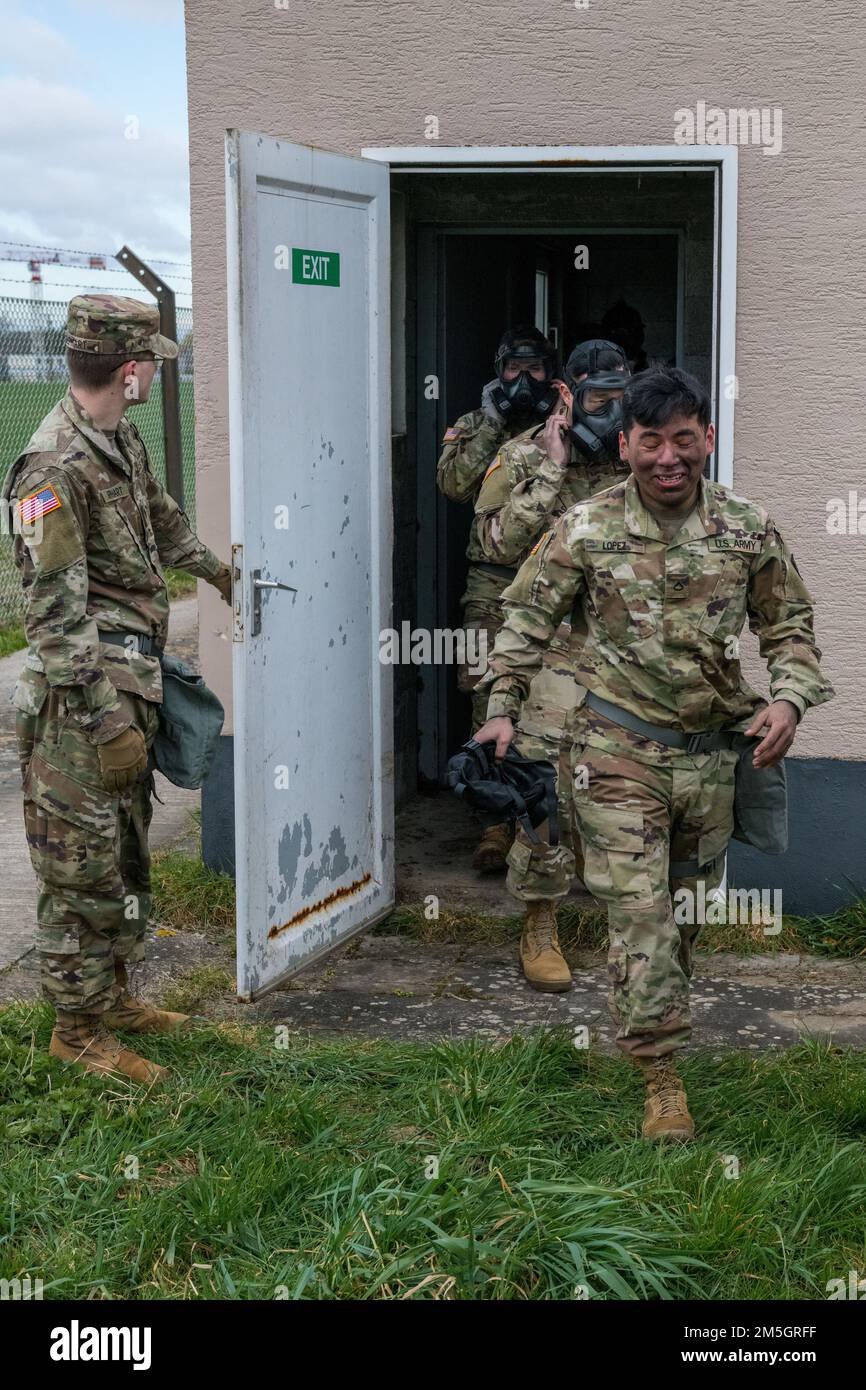 U.S. Soldiers assigned to the 39th Strategic Signal Battalion exit the mask confidence chamber during Chemical, Biological, Radiological, and Nuclear defense training, on Chièvres Air Base, Belgium, March 17, 2022. In order to stay proficient on their CBRN equipment and procedures the unit conducted training to ensure readiness and fulfill their annual requirements. Stock Photohttps://www.alamy.com/image-license-details/?v=1https://www.alamy.com/us-soldiers-assigned-to-the-39th-strategic-signal-battalion-exit-the-mask-confidence-chamber-during-chemical-biological-radiological-and-nuclear-defense-training-on-chivres-air-base-belgium-march-17-2022-in-order-to-stay-proficient-on-their-cbrn-equipment-and-procedures-the-unit-conducted-training-to-ensure-readiness-and-fulfill-their-annual-requirements-image502543651.html
U.S. Soldiers assigned to the 39th Strategic Signal Battalion exit the mask confidence chamber during Chemical, Biological, Radiological, and Nuclear defense training, on Chièvres Air Base, Belgium, March 17, 2022. In order to stay proficient on their CBRN equipment and procedures the unit conducted training to ensure readiness and fulfill their annual requirements. Stock Photohttps://www.alamy.com/image-license-details/?v=1https://www.alamy.com/us-soldiers-assigned-to-the-39th-strategic-signal-battalion-exit-the-mask-confidence-chamber-during-chemical-biological-radiological-and-nuclear-defense-training-on-chivres-air-base-belgium-march-17-2022-in-order-to-stay-proficient-on-their-cbrn-equipment-and-procedures-the-unit-conducted-training-to-ensure-readiness-and-fulfill-their-annual-requirements-image502543651.htmlRM2M5GRFF–U.S. Soldiers assigned to the 39th Strategic Signal Battalion exit the mask confidence chamber during Chemical, Biological, Radiological, and Nuclear defense training, on Chièvres Air Base, Belgium, March 17, 2022. In order to stay proficient on their CBRN equipment and procedures the unit conducted training to ensure readiness and fulfill their annual requirements.
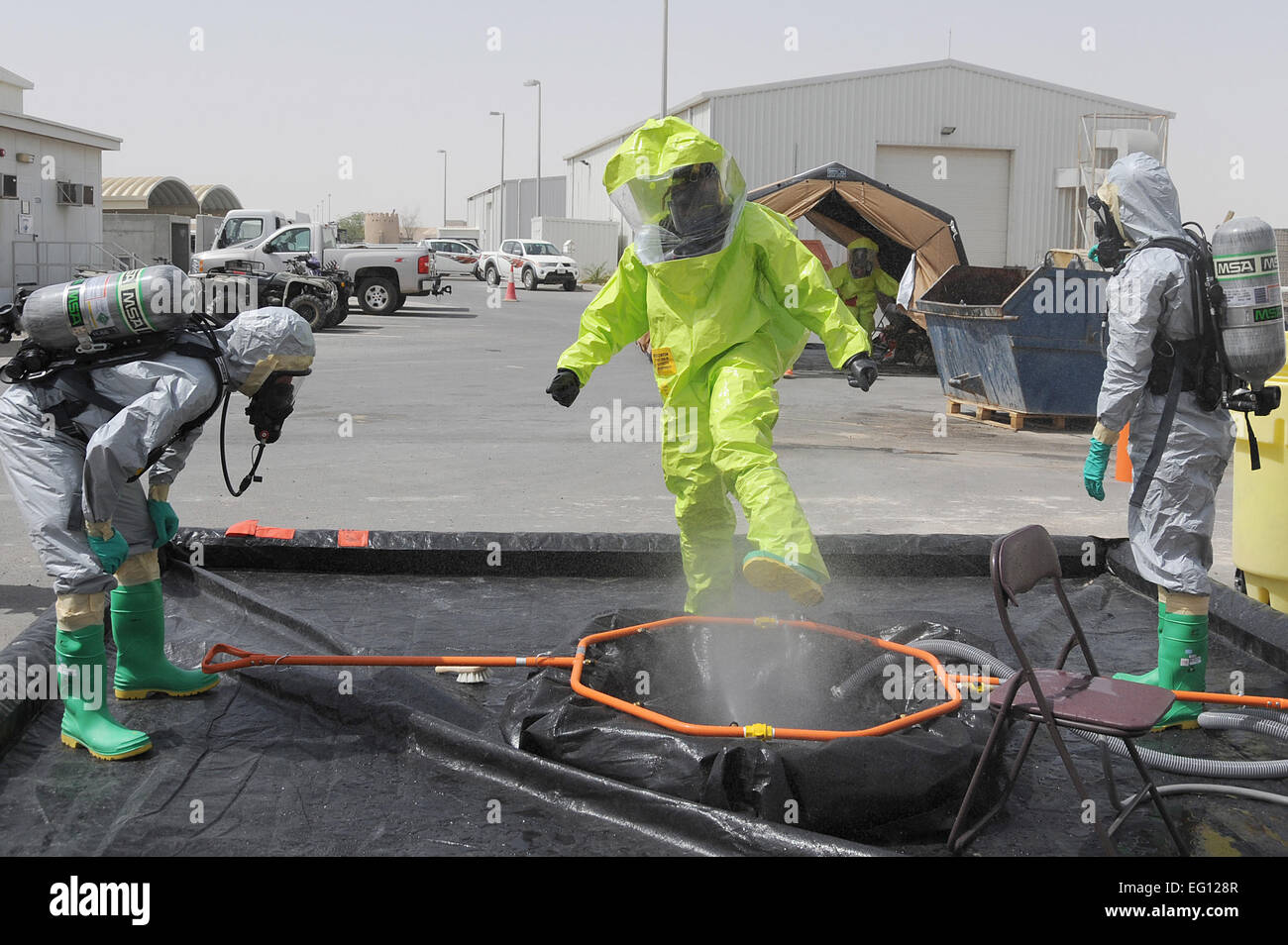 Staff Sgt. Demetrius Thompson steps into a decontamination area while Master Sgt. Jason Golden and Staff Sgt. Bobo prepare to run him through the process during hazmat decontamination training, May 2 at an undisclosed location in Southwest Asia. All three Airmen are with the 380th Expeditionary Civil Engineer Squadron Readiness and Emergency Management Flight. The flight performs Chemical, Biological, Radiological, and Nuclear CBRN detection and decontamination operations as well as emergency management command and control. Senior Airman Brian J. Ellis Released Stock Photohttps://www.alamy.com/image-license-details/?v=1https://www.alamy.com/stock-photo-staff-sgt-demetrius-thompson-steps-into-a-decontamination-area-while-78699735.html
Staff Sgt. Demetrius Thompson steps into a decontamination area while Master Sgt. Jason Golden and Staff Sgt. Bobo prepare to run him through the process during hazmat decontamination training, May 2 at an undisclosed location in Southwest Asia. All three Airmen are with the 380th Expeditionary Civil Engineer Squadron Readiness and Emergency Management Flight. The flight performs Chemical, Biological, Radiological, and Nuclear CBRN detection and decontamination operations as well as emergency management command and control. Senior Airman Brian J. Ellis Released Stock Photohttps://www.alamy.com/image-license-details/?v=1https://www.alamy.com/stock-photo-staff-sgt-demetrius-thompson-steps-into-a-decontamination-area-while-78699735.htmlRMEG128R–Staff Sgt. Demetrius Thompson steps into a decontamination area while Master Sgt. Jason Golden and Staff Sgt. Bobo prepare to run him through the process during hazmat decontamination training, May 2 at an undisclosed location in Southwest Asia. All three Airmen are with the 380th Expeditionary Civil Engineer Squadron Readiness and Emergency Management Flight. The flight performs Chemical, Biological, Radiological, and Nuclear CBRN detection and decontamination operations as well as emergency management command and control. Senior Airman Brian J. Ellis Released
 U.S. Marines stationed at Marine Corps Air Station (MCAS) Yuma, conduct their annual Chemical, Biological, Radiological and Nuclear Defense (CBRN) Training at the MCAS Yuma Gas Chamber July 26, 2018. The gas chamber is a controlled environment in which a non-lethal gas is released. This trains Marines to have confidence in their gear and become familiar with the effects of gas. Stock Photohttps://www.alamy.com/image-license-details/?v=1https://www.alamy.com/us-marines-stationed-at-marine-corps-air-station-mcas-yuma-conduct-their-annual-chemical-biological-radiological-and-nuclear-defense-cbrn-training-at-the-mcas-yuma-gas-chamber-july-26-2018-the-gas-chamber-is-a-controlled-environment-in-which-a-non-lethal-gas-is-released-this-trains-marines-to-have-confidence-in-their-gear-and-become-familiar-with-the-effects-of-gas-image218527882.html
U.S. Marines stationed at Marine Corps Air Station (MCAS) Yuma, conduct their annual Chemical, Biological, Radiological and Nuclear Defense (CBRN) Training at the MCAS Yuma Gas Chamber July 26, 2018. The gas chamber is a controlled environment in which a non-lethal gas is released. This trains Marines to have confidence in their gear and become familiar with the effects of gas. Stock Photohttps://www.alamy.com/image-license-details/?v=1https://www.alamy.com/us-marines-stationed-at-marine-corps-air-station-mcas-yuma-conduct-their-annual-chemical-biological-radiological-and-nuclear-defense-cbrn-training-at-the-mcas-yuma-gas-chamber-july-26-2018-the-gas-chamber-is-a-controlled-environment-in-which-a-non-lethal-gas-is-released-this-trains-marines-to-have-confidence-in-their-gear-and-become-familiar-with-the-effects-of-gas-image218527882.htmlRMPKEPF6–U.S. Marines stationed at Marine Corps Air Station (MCAS) Yuma, conduct their annual Chemical, Biological, Radiological and Nuclear Defense (CBRN) Training at the MCAS Yuma Gas Chamber July 26, 2018. The gas chamber is a controlled environment in which a non-lethal gas is released. This trains Marines to have confidence in their gear and become familiar with the effects of gas.
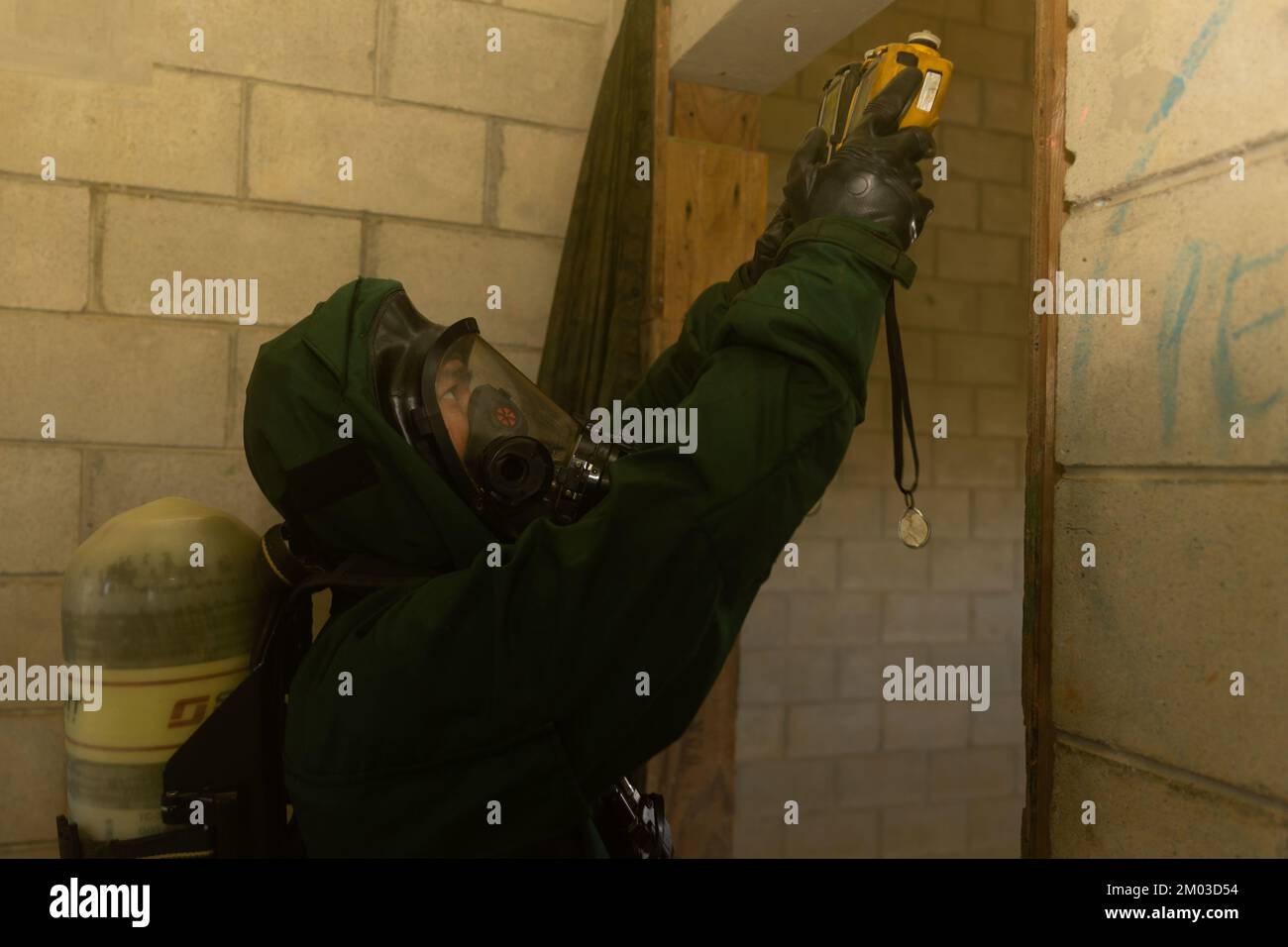 U.S. Marine Corps Lance Cpl. Cesar Arroyo a chemical, biological, radiological, and nuclear defense specialist with the command element, 31st Marine Expeditionary Unit, inspects a doorway with a chemical detector during a simulated CBRN Response Element exercise on Camp Hansen, Okinawa, Japan, Nov. 29, 2022. CBRN response exercises test Marines on their ability to react to different operations such as investigating clandestine labs, containing chemical munitions, reconnaissance, decontamination, and rapid extraction of casualties. The 31st MEU, the Marine Corps’ only continuously forward-deplo Stock Photohttps://www.alamy.com/image-license-details/?v=1https://www.alamy.com/us-marine-corps-lance-cpl-cesar-arroyo-a-chemical-biological-radiological-and-nuclear-defense-specialist-with-the-command-element-31st-marine-expeditionary-unit-inspects-a-doorway-with-a-chemical-detector-during-a-simulated-cbrn-response-element-exercise-on-camp-hansen-okinawa-japan-nov-29-2022-cbrn-response-exercises-test-marines-on-their-ability-to-react-to-different-operations-such-as-investigating-clandestine-labs-containing-chemical-munitions-reconnaissance-decontamination-and-rapid-extraction-of-casualties-the-31st-meu-the-marine-corps-only-continuously-forward-deplo-image499176864.html
U.S. Marine Corps Lance Cpl. Cesar Arroyo a chemical, biological, radiological, and nuclear defense specialist with the command element, 31st Marine Expeditionary Unit, inspects a doorway with a chemical detector during a simulated CBRN Response Element exercise on Camp Hansen, Okinawa, Japan, Nov. 29, 2022. CBRN response exercises test Marines on their ability to react to different operations such as investigating clandestine labs, containing chemical munitions, reconnaissance, decontamination, and rapid extraction of casualties. The 31st MEU, the Marine Corps’ only continuously forward-deplo Stock Photohttps://www.alamy.com/image-license-details/?v=1https://www.alamy.com/us-marine-corps-lance-cpl-cesar-arroyo-a-chemical-biological-radiological-and-nuclear-defense-specialist-with-the-command-element-31st-marine-expeditionary-unit-inspects-a-doorway-with-a-chemical-detector-during-a-simulated-cbrn-response-element-exercise-on-camp-hansen-okinawa-japan-nov-29-2022-cbrn-response-exercises-test-marines-on-their-ability-to-react-to-different-operations-such-as-investigating-clandestine-labs-containing-chemical-munitions-reconnaissance-decontamination-and-rapid-extraction-of-casualties-the-31st-meu-the-marine-corps-only-continuously-forward-deplo-image499176864.htmlRM2M03D54–U.S. Marine Corps Lance Cpl. Cesar Arroyo a chemical, biological, radiological, and nuclear defense specialist with the command element, 31st Marine Expeditionary Unit, inspects a doorway with a chemical detector during a simulated CBRN Response Element exercise on Camp Hansen, Okinawa, Japan, Nov. 29, 2022. CBRN response exercises test Marines on their ability to react to different operations such as investigating clandestine labs, containing chemical munitions, reconnaissance, decontamination, and rapid extraction of casualties. The 31st MEU, the Marine Corps’ only continuously forward-deplo